Destiny 2 – Beyond Light
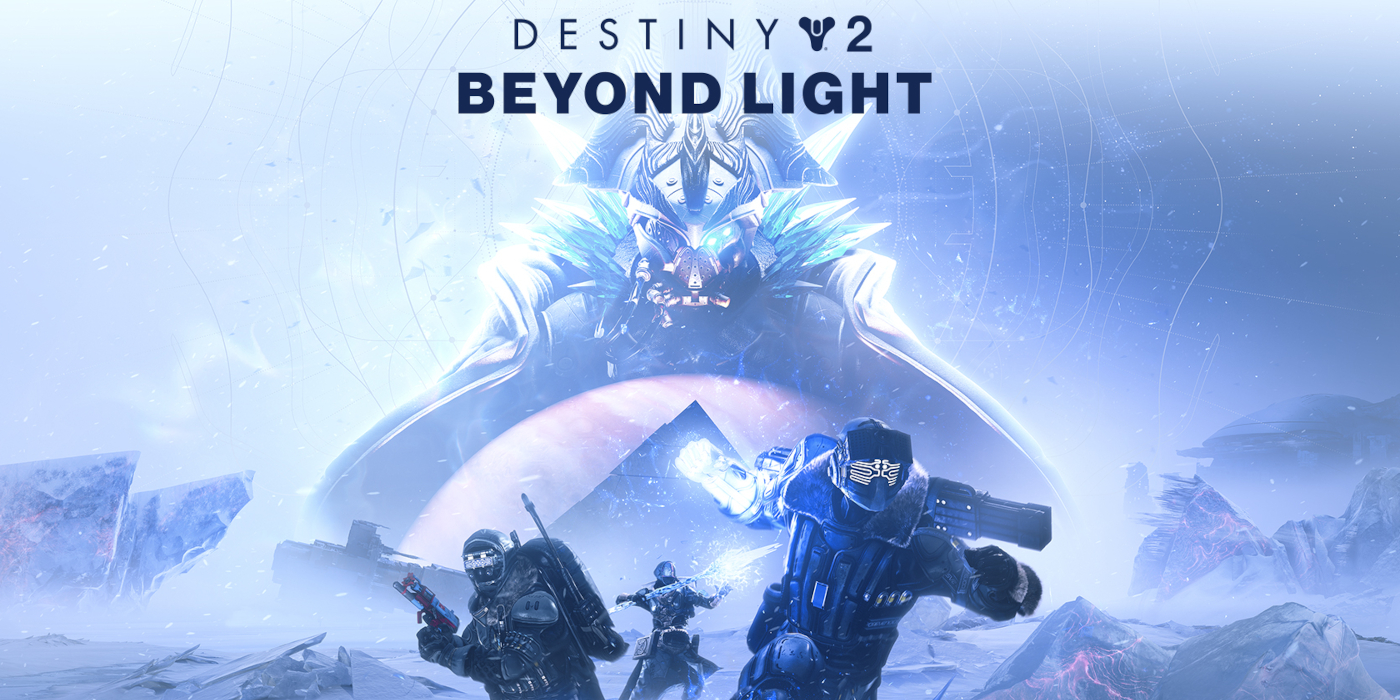

The Destiny 2: Beyond Light expansion forms part of the Legacy Collection DLC that also includes the Forsaken and Shadowkeep expansions. While all three packs can be purchased separately, the collected DLC is the pack that we have based our recommendation on as it provides the best value and is regularly on sale.
Note from the Editor: As Destiny 2 is a live service game, we’ll be reviewing all of the expansions and what they mean to the overall game. Current reviewed expansions are found below:
At A Glance
| Scores | |
| Positives | +Meaty storyline and side quests that keeps giving +Stasis powers are fun to use +Tonnes of new weapons to try |
| Negatives | -Repeated missions -Boss fights are a let down -Limited to one area |
| Overall | Recommended |
| Price (When Reviewed) | £24.99* Part of the Legacy Collection DLC |
| Available On | PS5, PS4, Xbox Series X|S, Xbox One, PC |
Destiny 2 – Beyond Light brings with it a whole new story line set on the frozen tundra that is Europa. As the war for the Traveller rumbles on throughout the solar system, Guardians are tasked with infiltrating the Golden Age Braytech facility to track down Eramis, the Kell of Darkness, a powerful enemy that seeks to utilise powerful abilities that have been designed to counteract the Light of the Guardians.
Beyond Light features the six-limbed bugs known as the Fallen as the main enemy here, and throughout the lengthy 10 hours or so you’ll spend on the main campaign, they are certainly a race I wanted to dispatch quickly. The insect chattering annoyances only have a few variations, and as they skit and slide across the battlefield, they are not only hard to pin down, but like Tusken Raiders, they often return in larger numbers. Every firefight lasted a good few minutes and I was always in danger of being overwhelmed just by the sheer number of combatants against me. This did make every step of the campaign meaningful and I felt I was earning my reward at the end.
That reward comes in the form of a new power class – Stasis. This is a new power that sits as a fourth component to the already established Void, Arc and Solar classes within the game, and it set the bar so high when the expansion originally released that the other areas had to be retooled. Stasis was supremely powerful and crucially, customisable when Beyond Light was unleashed in 2020. The ice barriers could be tweaked in such a way that player loadouts would be too overpowered – as an example, you could create a barrier that not only froze bad guys to the spot but were explosive, so all a player had to do was shoot the newly formed wall to cause massive destruction. Thankfully, with the 2022 release of The Witch Queen expansion similar customisations were brought in throughout the rest of the abilities meaning that it is a much more balanced powerup.
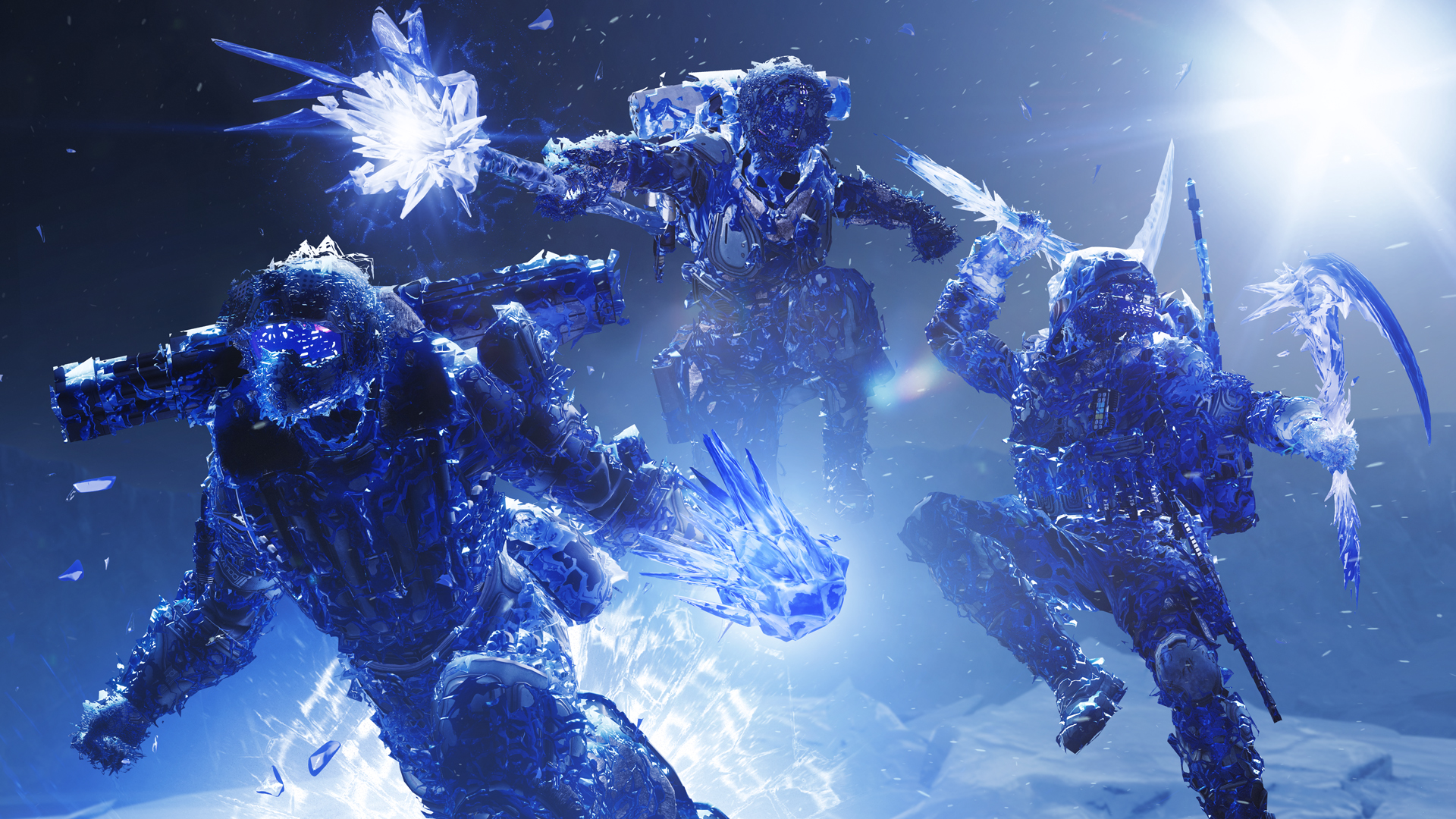
There are a couple of disappointments within Beyond Light. Missions are carried out entirely in one section of Europa so there is a lot of retreading the same ground. Bungie does mix this up to prevent it being completely boring but it would have been nice to have a bit more variation on the area. The other issue comes in the form of boss fights, as they also double up as a tutorial for the new Stasis archetype. Starting off like any other skirmish I would blast through mindless drones until Eramis would show her mandibles. At this point my Guardian would become enveloped by the new Stasis power and could fling his special powers at will. I felt limiting the powers solely to boss fights disjointed the experience somewhat. In games like Ocarina of Time, the whole dungeon is built around whatever Link’s new toy is, and he spends the time getting used to it before using the Big Key and fighting the evil champion. With Beyond Light, I was given a taste of something that I didn’t fully understand and wasn’t given the opportunity to use it properly until the story was put to bed.
Granted this is only a minor sticking point and one that quickly rectifies itself once I embarked on the subsequent missions, of which there are many. Once the main story has reached its conclusion, a host of raid missions become available which unlock new and fancy exotic weapons, and further details Destiny’s rapidly expanding universe. Along with numerous bits of kit to find scattered throughout Europa, there is a lot to be getting on with after the lengthy campaign. Even after completing the bulk of Beyond Light, I am still coming across new things to do or elements I have missed, which is testament to just how much there is to do in the game, and for someone who loves value for money, coming across new missions months after I thought everything was done, brings a smile to my face.
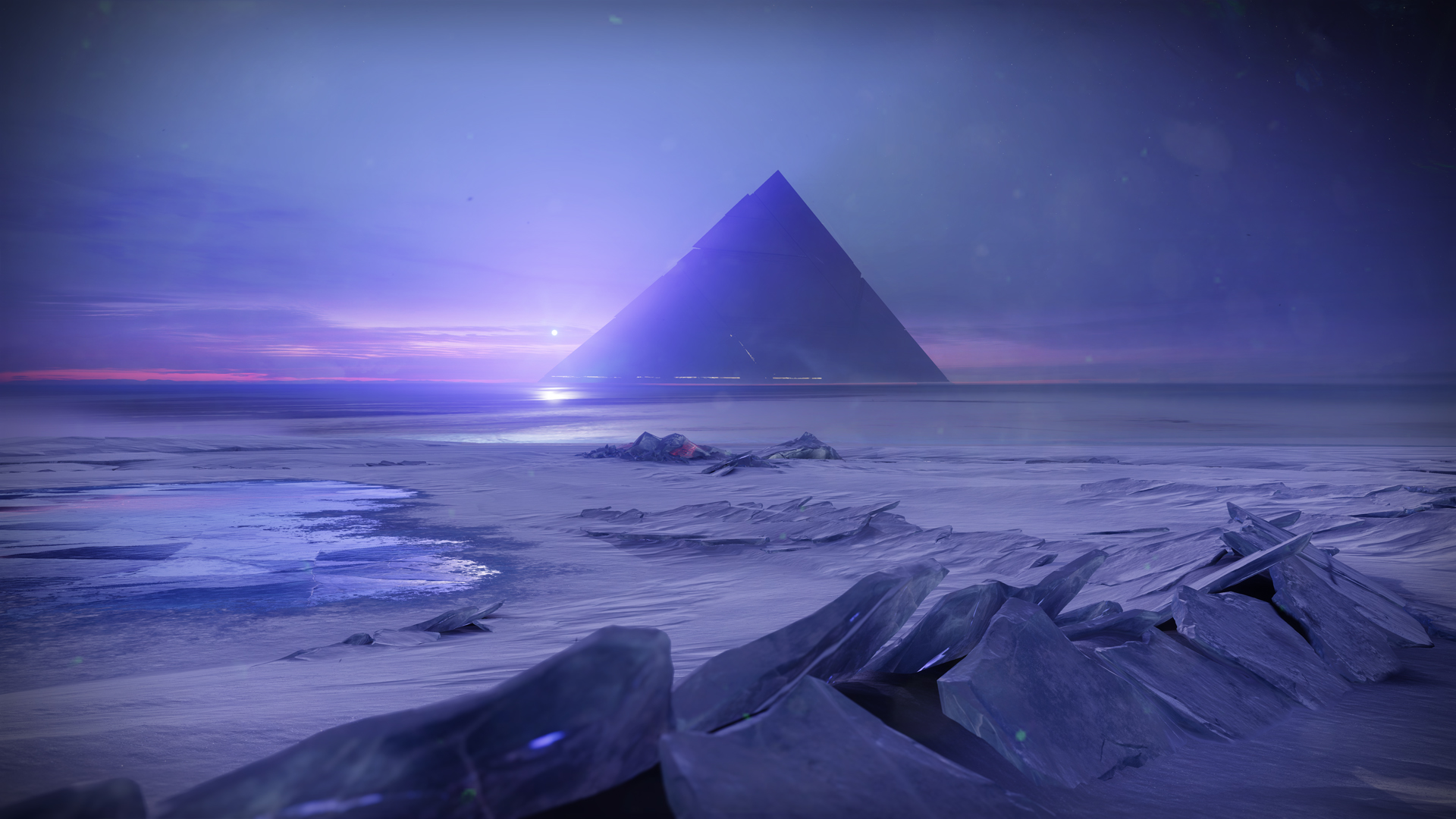
Destiny 2: Beyond Light is certainly a worthy expansion in the operatic space war. At this point it is given that there is a wealth of exotic weapons and armour to get to grips with, but the new Stasis powers are worth the investment alone. Throwing freezing walls at enemies adds a layer of defence that was sorely missing. These new powers change the tide of battle in such a way that just has to be experienced to be believed. With Guardians being able to harness darkness powers, this certainly muddies the waters in terms of where the story is likely to go with future expansions and lays a pretty strong groundwork for the battles yet to come.
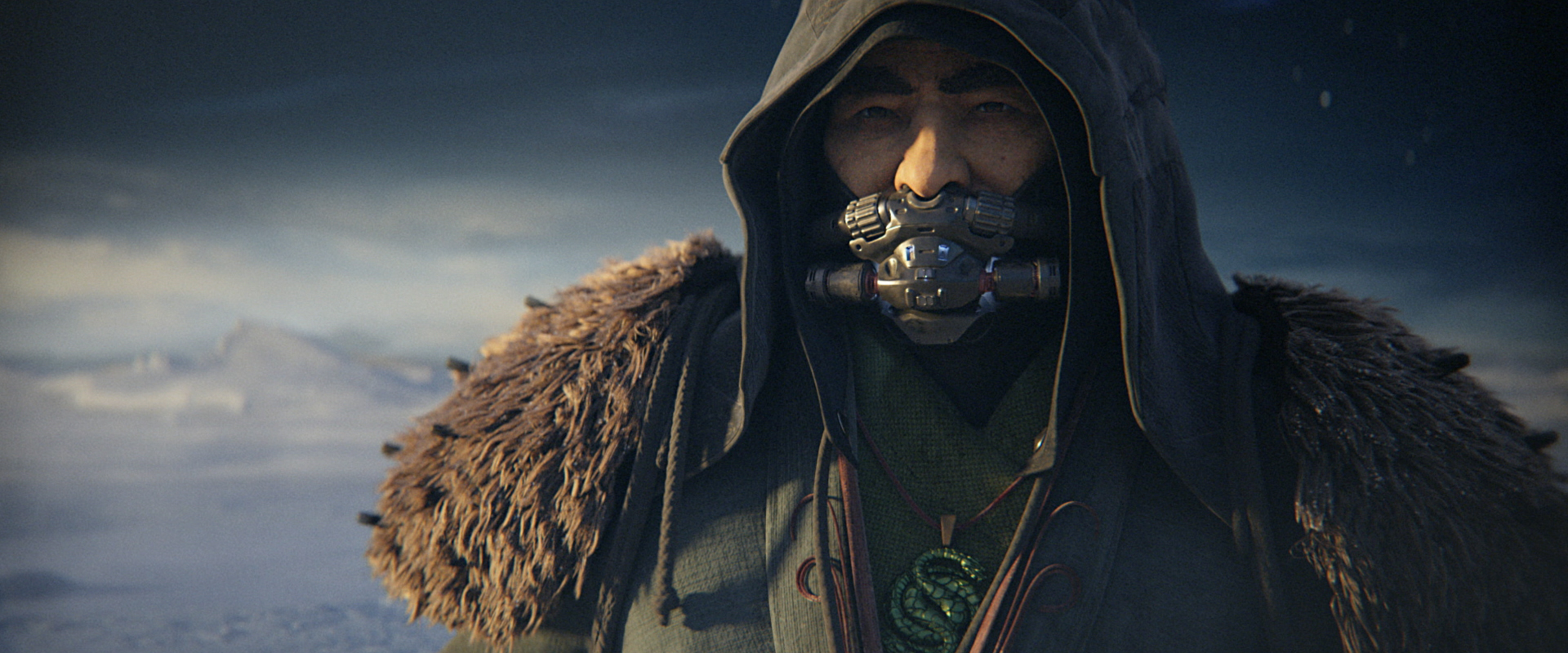
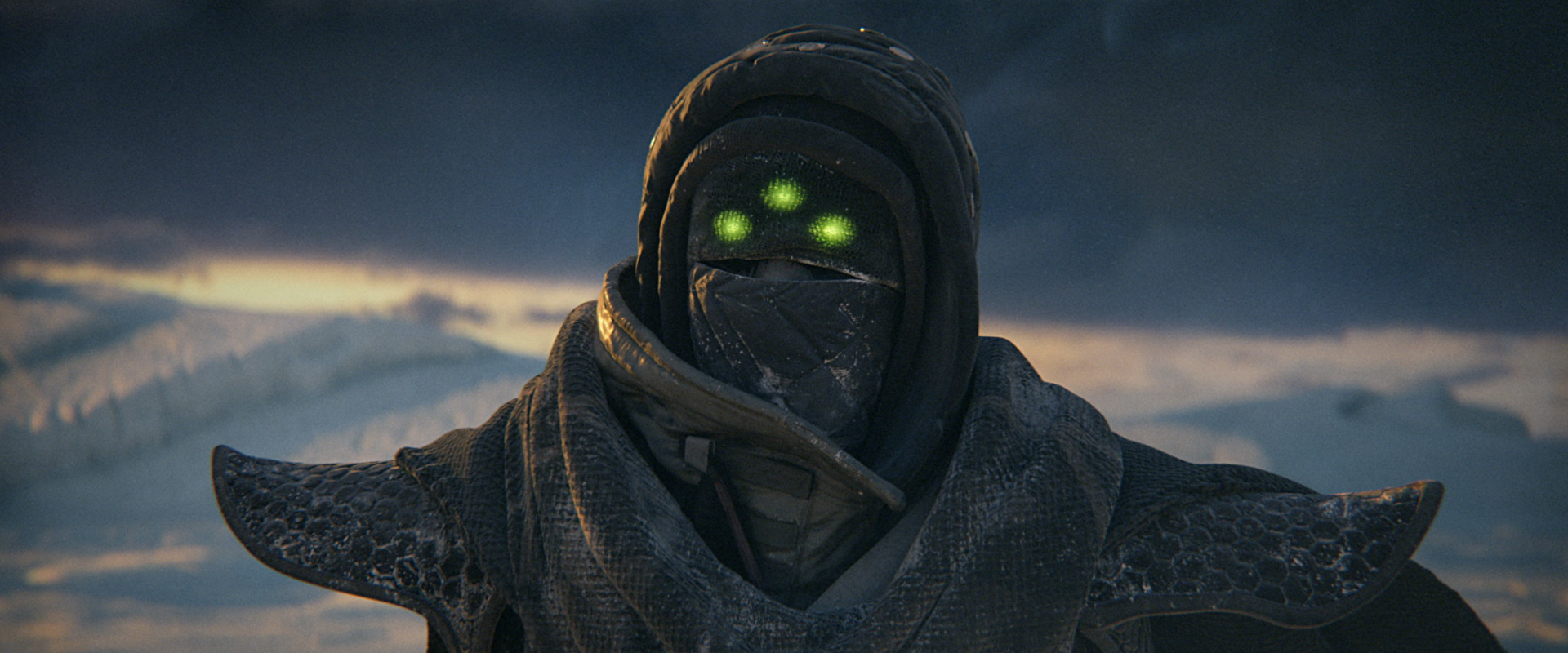


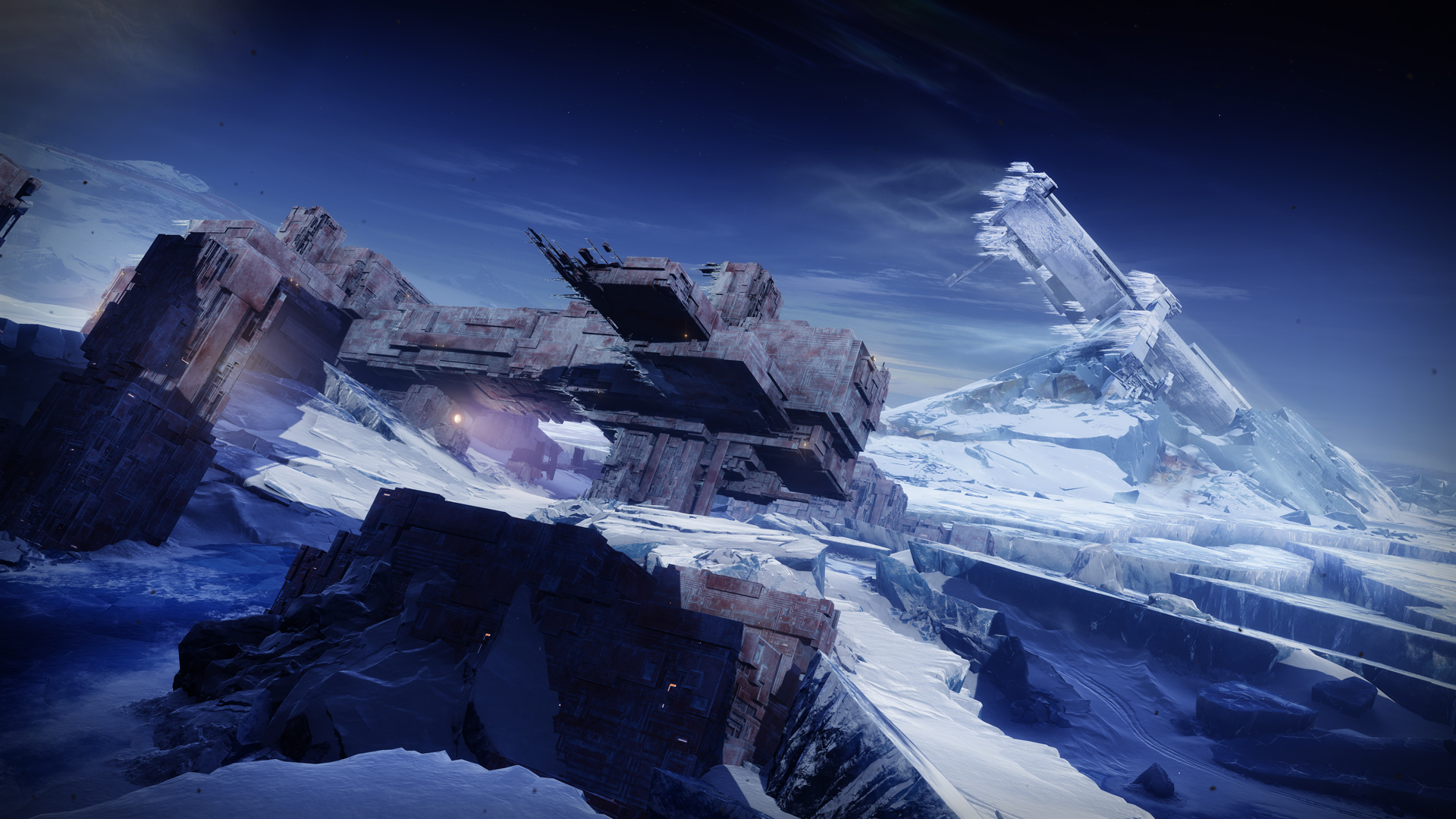
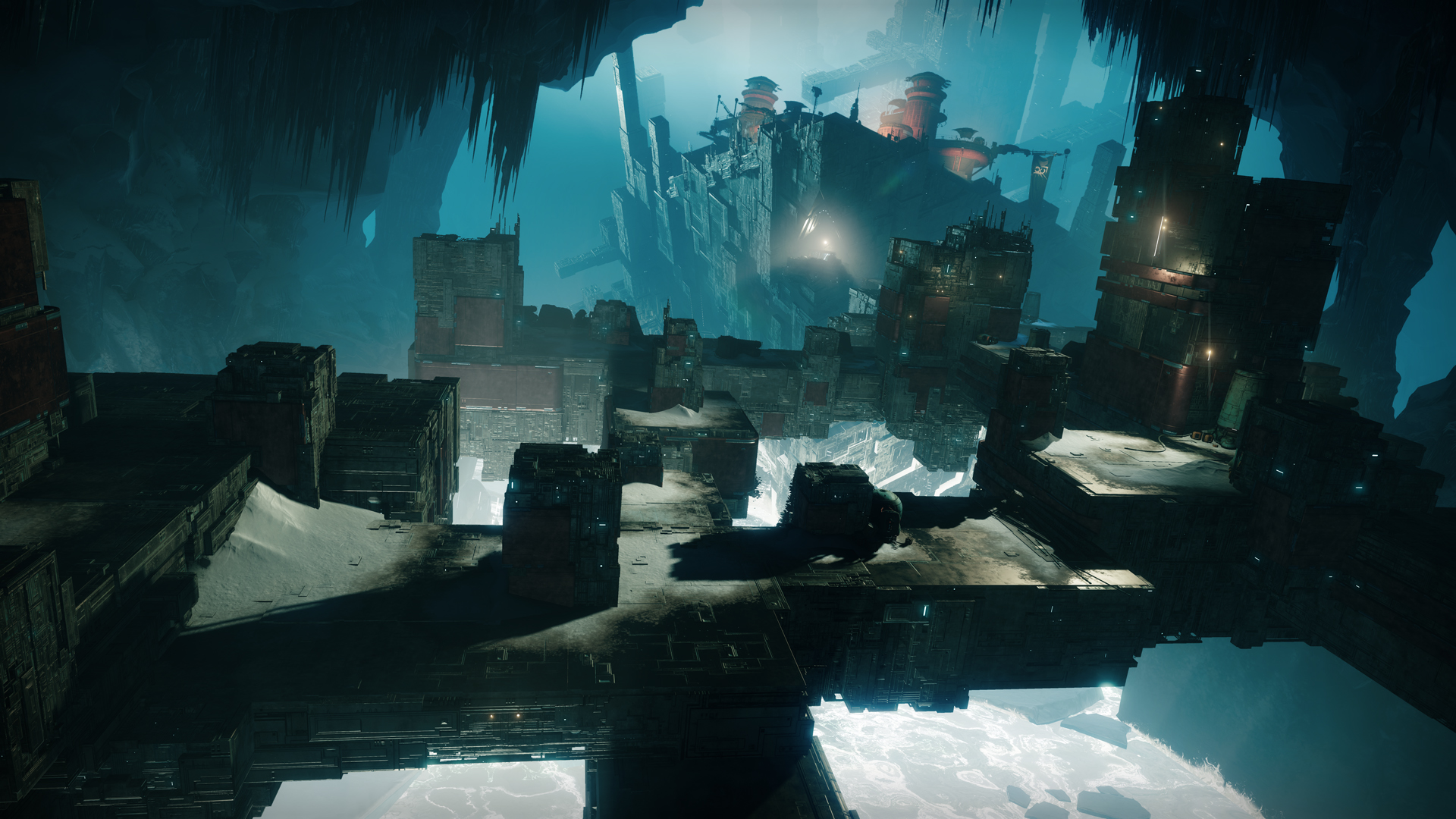
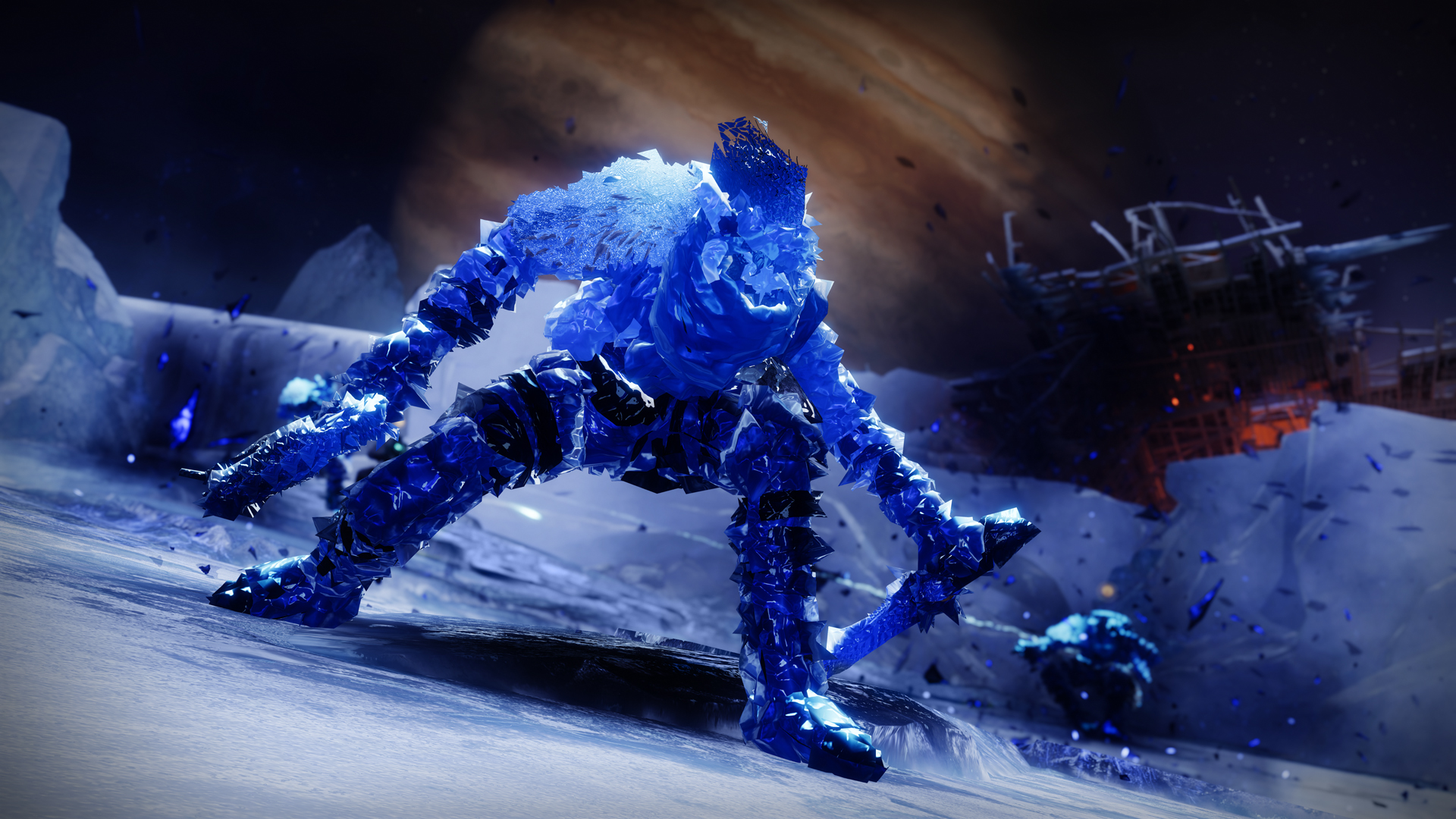

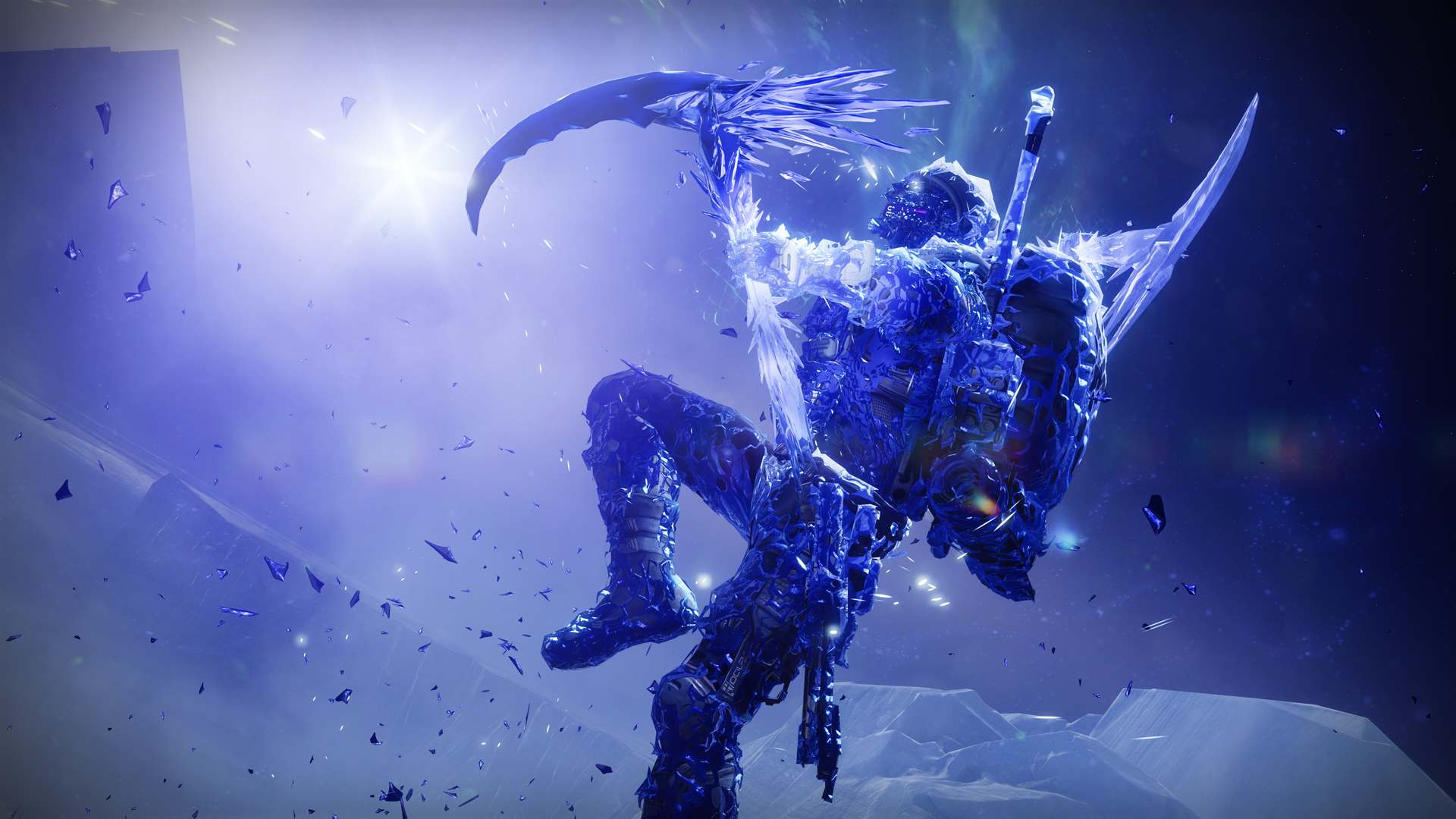
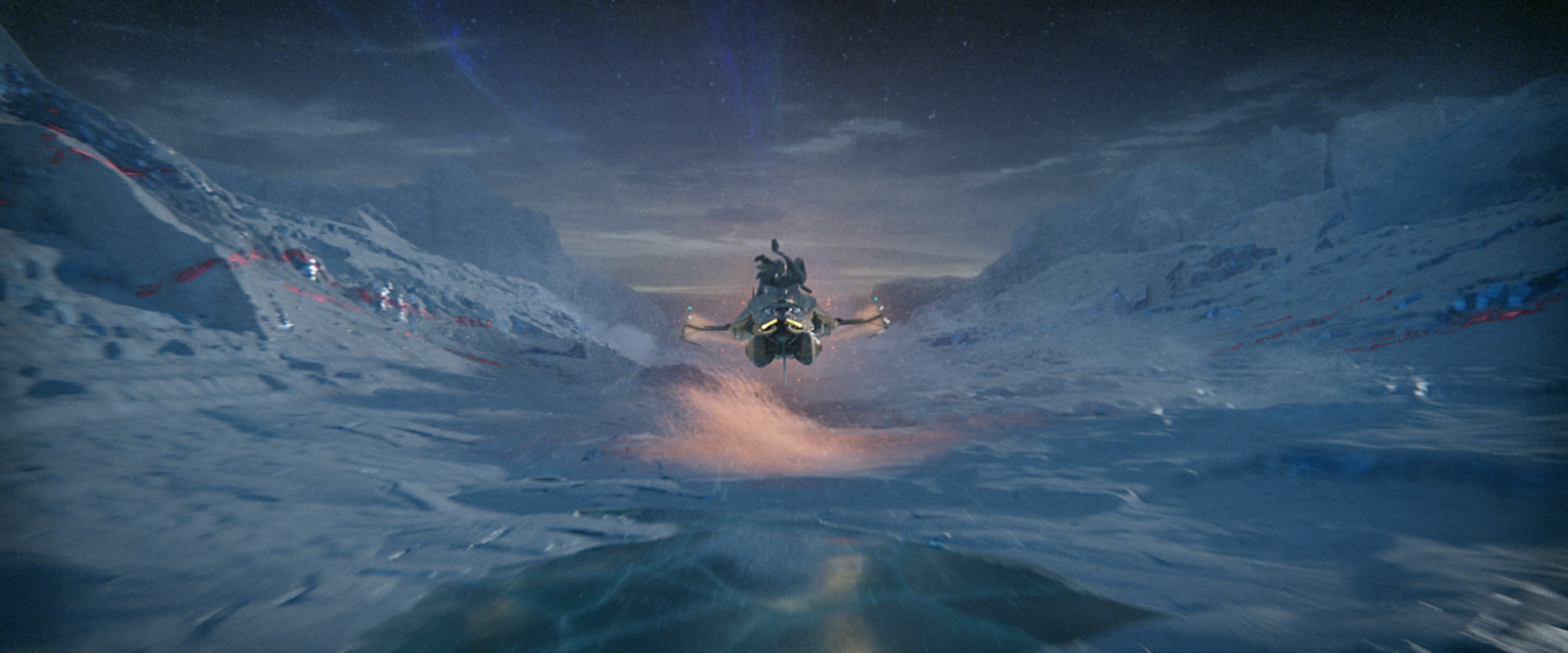
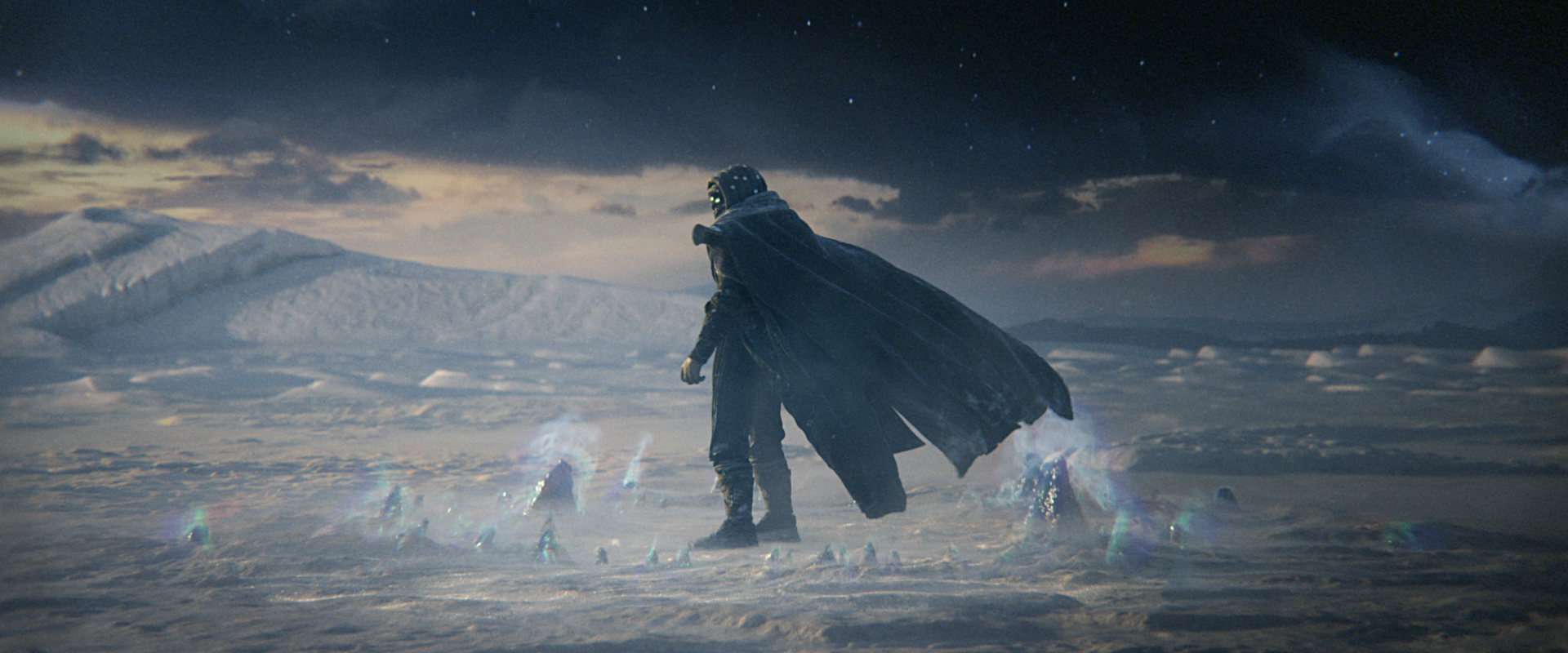
Thanks for taking the time to read our review. If you’d like to support us further, please consider buying us a coffee!
Biomutant
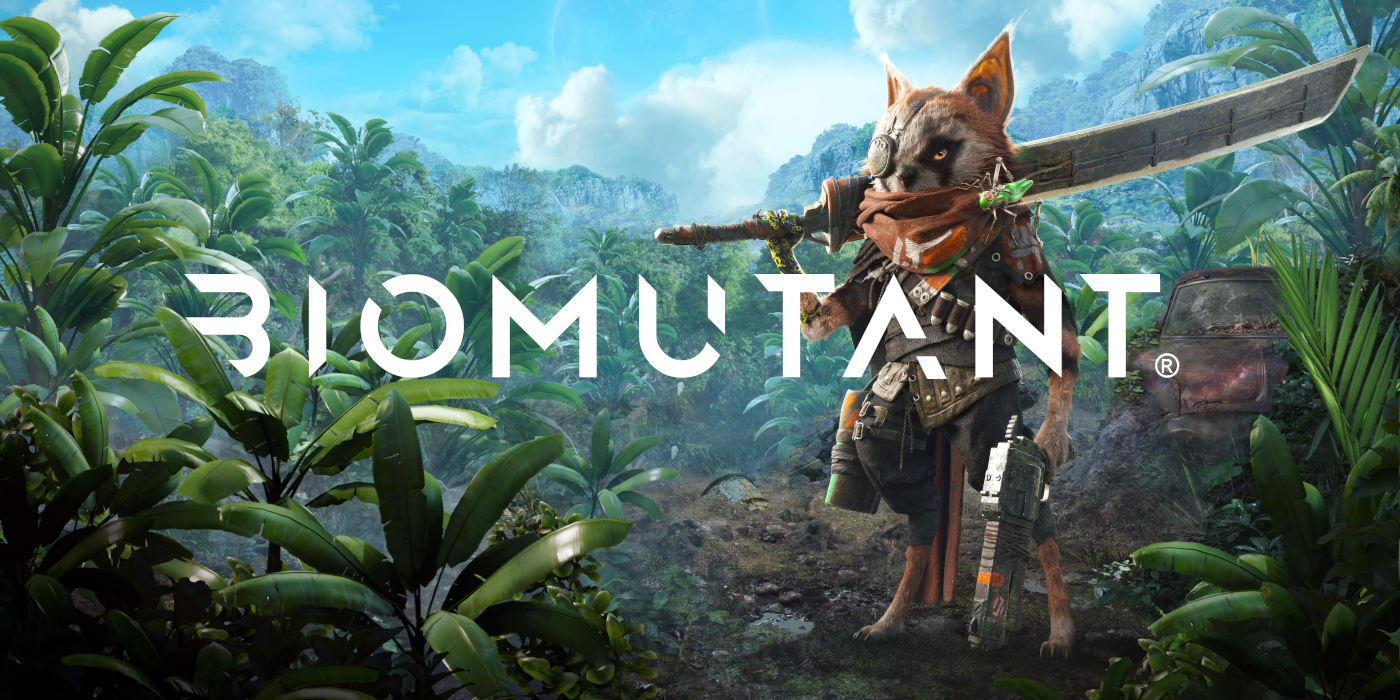

Biomutant is a game that aims very firmly to sit in the genre that I’m going to call “Late 2010s Video Game.” If you’ve played, well, anything really, from the last six or so years you will be immediately familiar with how things work. Open world? Check. Badly implemented levelling systems? Check. Damage numbers when you hit things? Check. Splashes of neon colour here and there? Check. It’s so very by-the-numbers that its attempts at originality here and there are drowned out with its focus-group mentality, while the one truly unique idea it has brought centre-forward is, frankly, awful.
At A Glance
| Scores | |
| Visuals | 7 /10 |
| Sound | 7 /10 |
| Gameplay | 6 /10 |
| Overall | 4 /10 |
| Positives | + Pretty world design + Big Stompy Robot + Familiarity |
| Negatives | – Narration – Narration! – Weak combat mechanics |
| Price (When Reviewed) | £34.99 |
| Our Playtime | Too many hours |
| Available On | PS5, PS4, Xbox Series X|S, Xbox One, PC |
That unique idea? To give the game a narrator. I can only assume that someone involved in this decision had played the excellent Stanley Parable and completely missed the point. In Stanley Parable the whole game is structured around the narrator, their character and the dialogue they have with you as the player. In Biomutant the narrator acts as a hundred-foot wall between you and any kind of meaningful engagement with the world.
A key factor in any Late 2010s Video Game is the appeal of the world, and a large part of that is the characters who inhabit it and who you interact with throughout. These are often games that expect you to stick around for at least dozens of hours, and buy the season passes and whatever other monetisation the publisher thinks they can get away with, and they do that by making the worlds immersive places to spend time in. The narration in Biomutant kills any hint of that by, in a stunningly poor decision, replacing all of the dialogue in the game with narration.
I can’t quite get over how much of a misstep this is. So much of the characterisation opportunity of every single NPC is immediately flushed down the toilet and replaced by a tonally inconsistent middle-class British guy. All we’re left with are some vaguely interesting anthropomorphic generic-post-apocalyptic models, not a single one of which has any defining character.
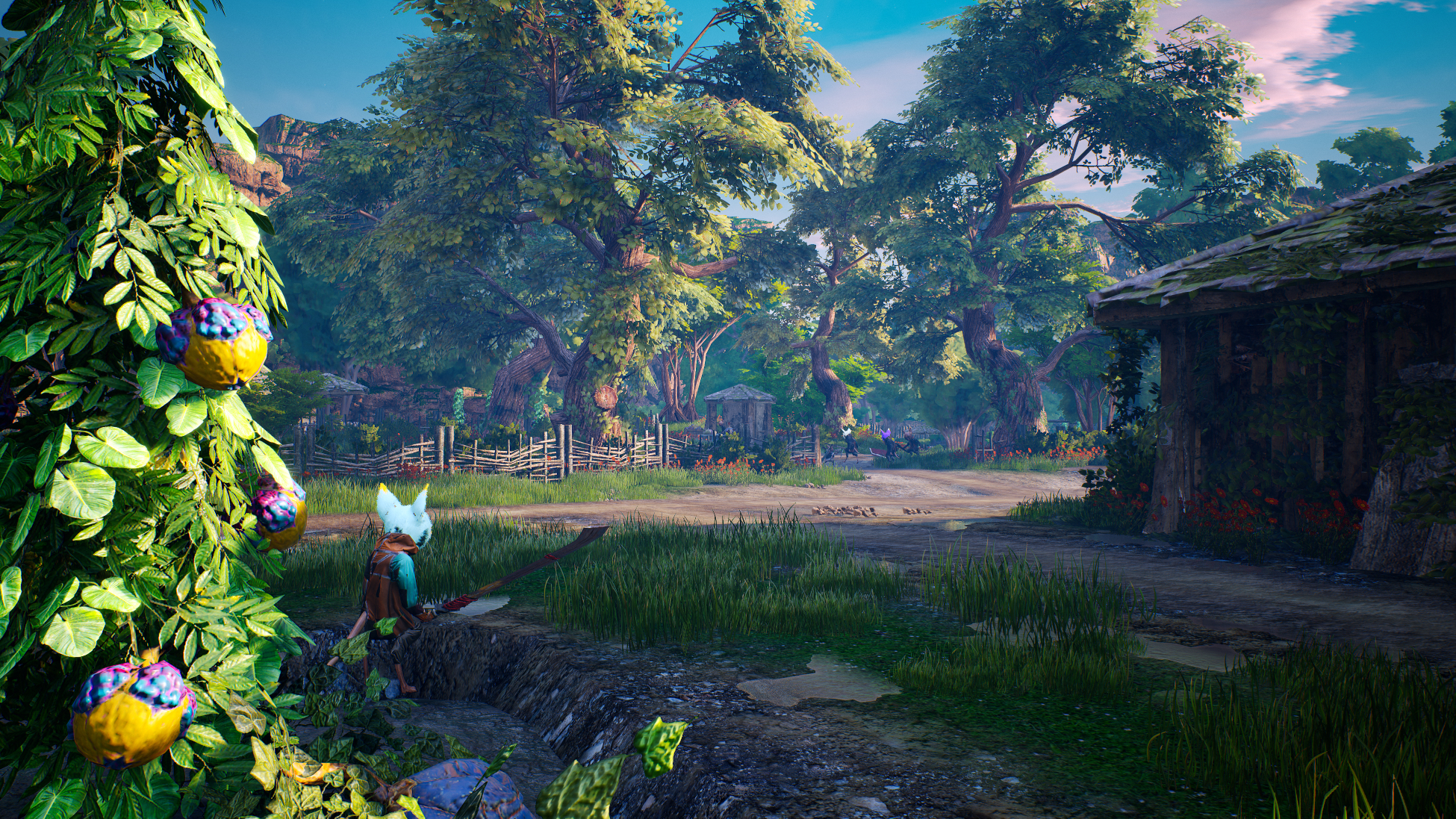
The narration occasionally gives you verbatim transcripts of what the character has said but more often provides instead a summary, further removing any hint of characterisation from the game’s dialogue. Sometimes this seems to be trying to be funny – it really isn’t though – but most of it is played straight, in another baffling decision. The world design is clearly comic, with little animal people running around in Fallout cosplay, silly names for things and NPCs, and all that aforementioned neon paint, but much of the narration leans away from the innate silliness, leaving just the feeling that I’m playing in a badly scripted post-collapse Peppa Pig episode – except that even in Peppa Pig the characters get to have voices.
So tonally the game is wildly off the mark. I guess we should also talk about the gameplay.
Unfortunately there’s not a whole lot to say about it. It’s fine. It’s ok. You’ve played a recent Assassin’s Creed or Horizon game? It’s like that, but not as well tuned. I’ll grant that movement feels good; the character you play runs and jumps around with a speed and agility that seems befitting of a little fox person. Combat, however, feels imprecise and floaty, with targeting and auto-lock being inconsistent at best and an active hindrance at worst. Ranged weapons in particular are often wildly (and intentionally) inaccurate, leaving them feeling quite unsatisfying to use compared to the melee options.
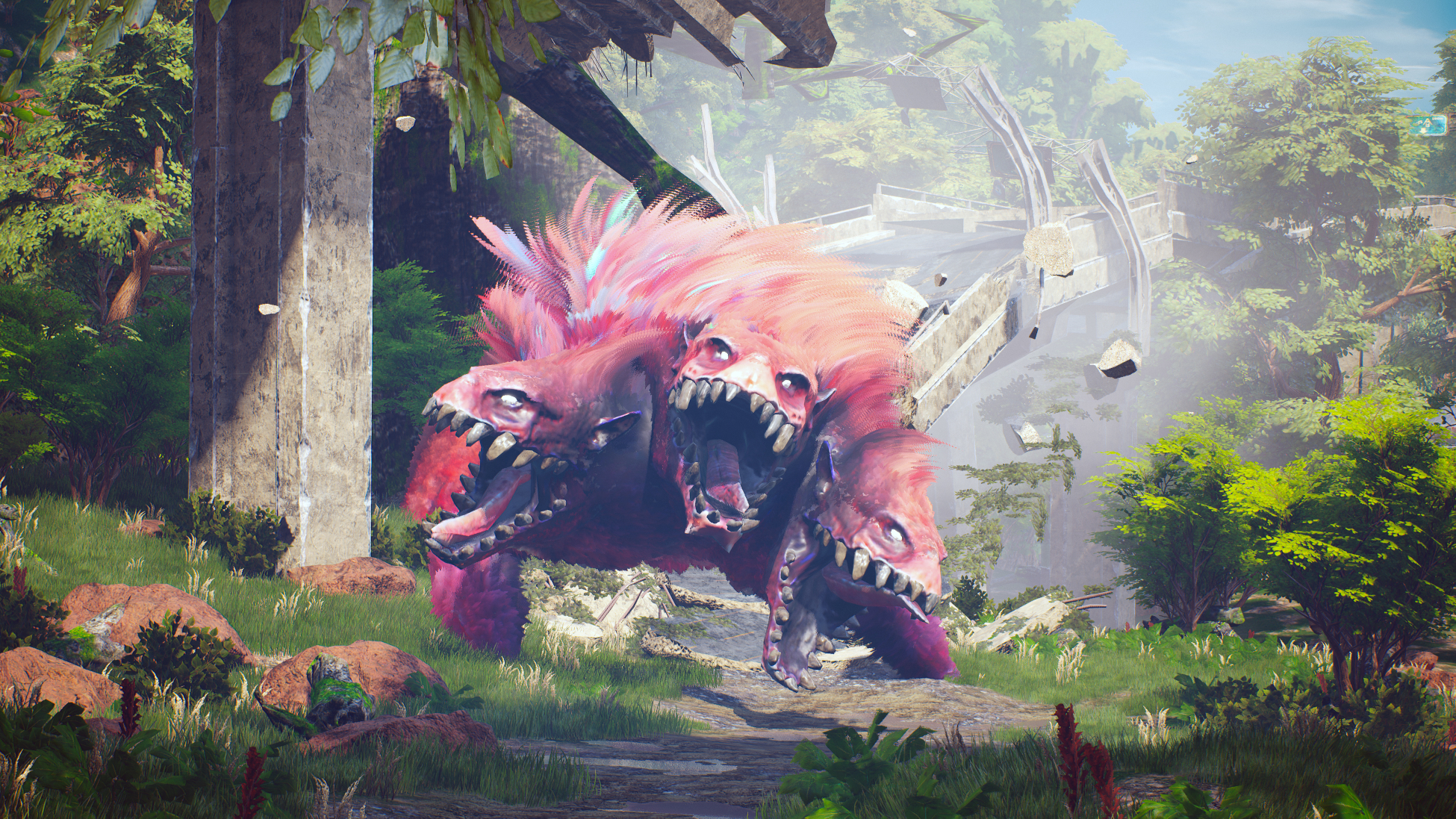
To the game’s credit it gives you a customisable mech quite early on. (Frankly, more games should do this, regardless of genre or setting.) Sadly the mech suffers from the same imprecise combat, especially noticeable with its ranged options, but stomping around in a 20ft metal monster is always going to be fun to some degree.
This customisation aspect leans into another Late 2010s Video Game staple – an overcomplicated loot system with upgrades and crafting liberally sprinkled throughout. Cross it off your bingo card. As with all games that do this – it’s bad – there’s far too much loot with minimal stat differences to filter through, you’ll pick up far too much of it to even really care, and the “best” stuff almost always looks terrible leaving you forced to choose between a character who you can stand to look at or being the model of efficiency who got dressed in a skip, in the dark.
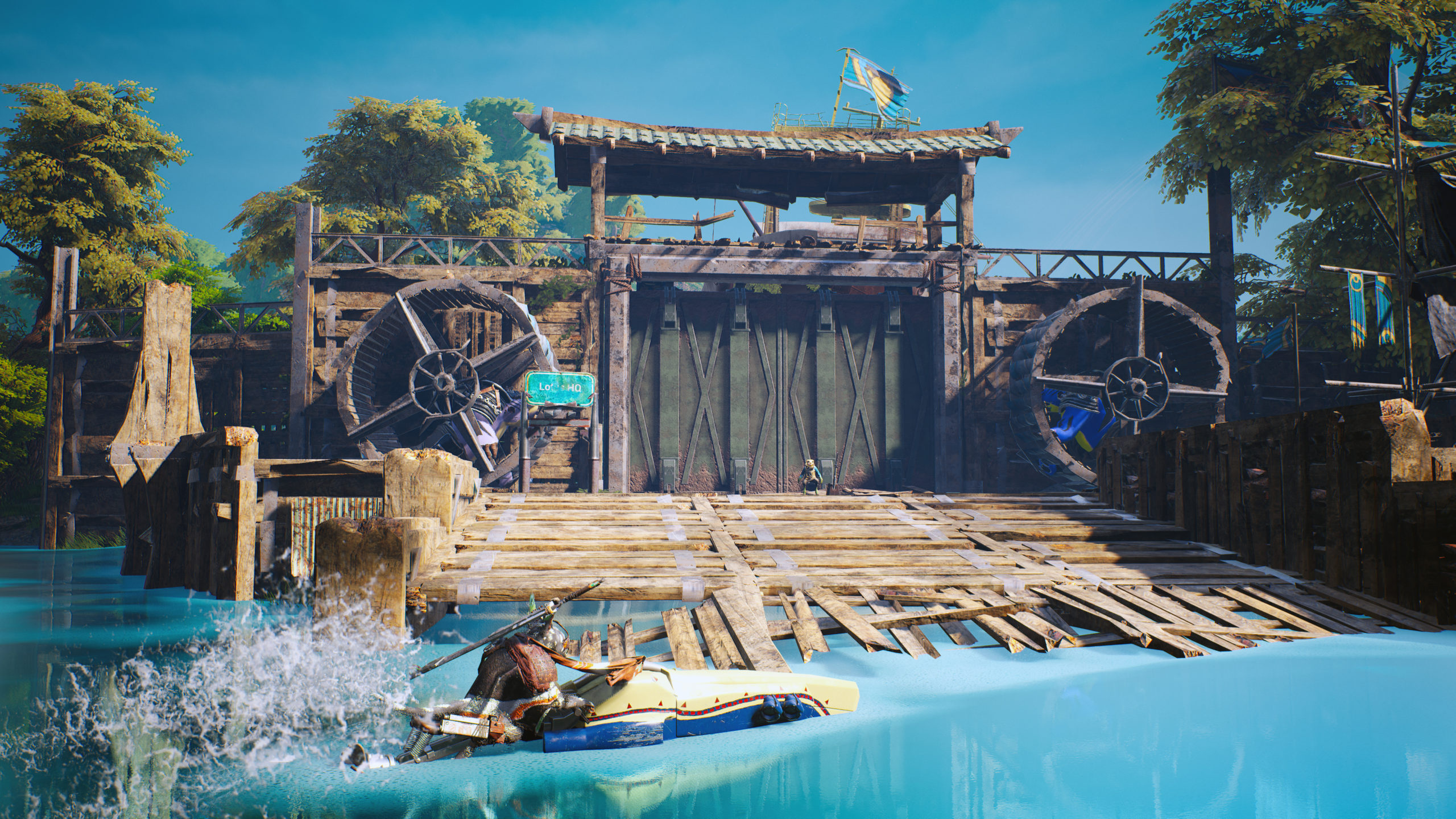
The version of Biomutant that I played was the new PS5 release. Performance was fine and graphically the environments are very pretty, though not particularly original, feeling a bit like Last of Us or Horizon’s green-apocalypse with a touch of Borderlands’ irreverence thrown in. Fur, though, is something that is often a challenge for graphic engines. That makes the decision to have every single character in the game completely covered in fur a brave one, for sure, though it doesn’t quite work. Often characters appear shimmery, overly reflective or just… off, in a furry uncanny valley kind of way. I’d hesitate to say it looks bad, it’s just not quite there. There is though, in a saving grace, an excellent electrocution animation triggered whenever your character fails a puzzle. I will freely admit to failing several on purpose to see it repeated.
Overall, it’s hard to recommend Biomutant when there are so many other games doing similar things better. The narration absolutely murders any immersion or character that the game might have salvaged from its focus-grouped setting, while the gameplay mechanics just aren’t strong enough to carry the game alone. Having one of these aspects work would raise the game to a respectable middle-of-the-road 7/10 Late 2021s Video Game, but failing on both leaves a world that sadly isn’t worth exploring.
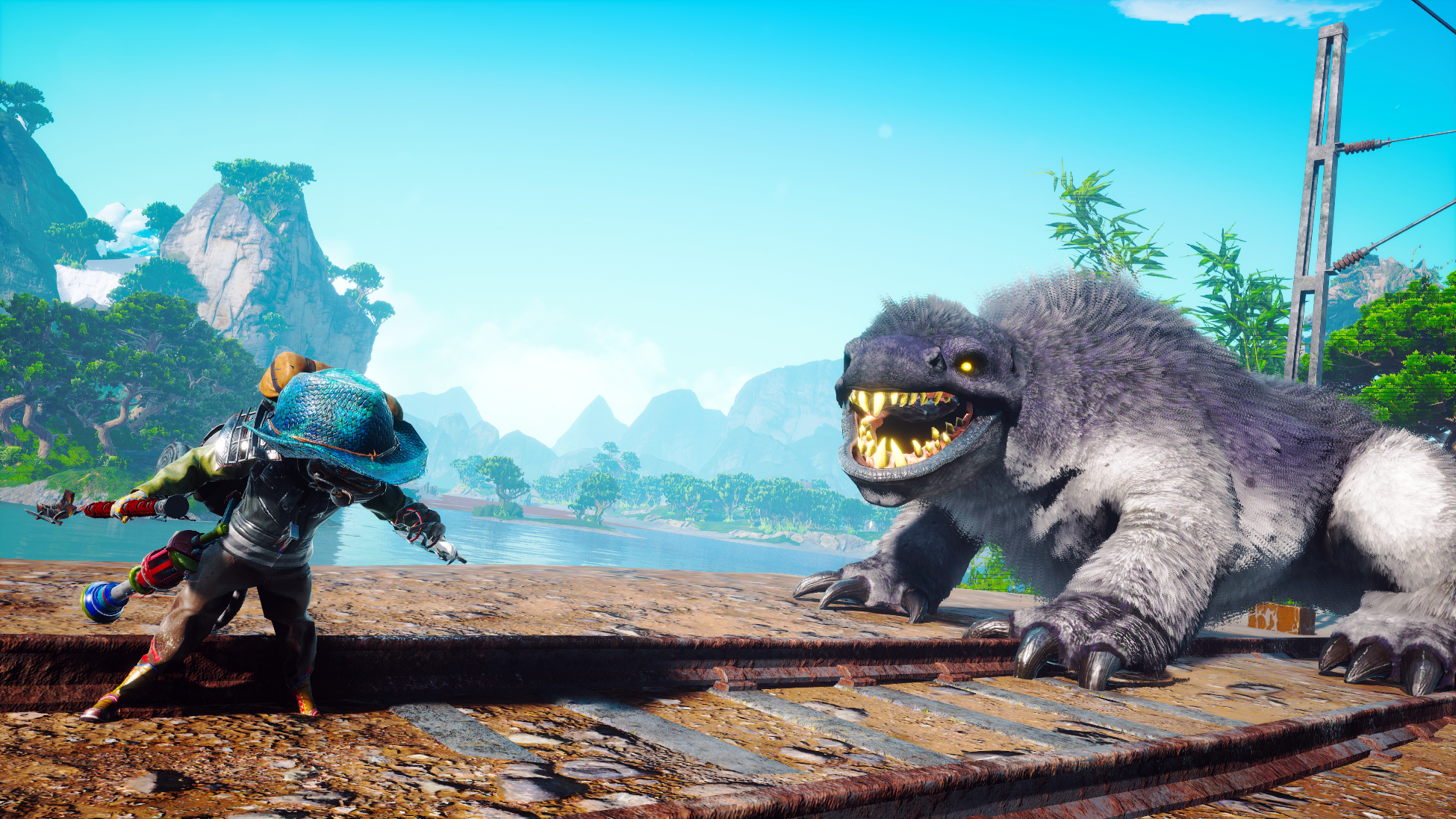
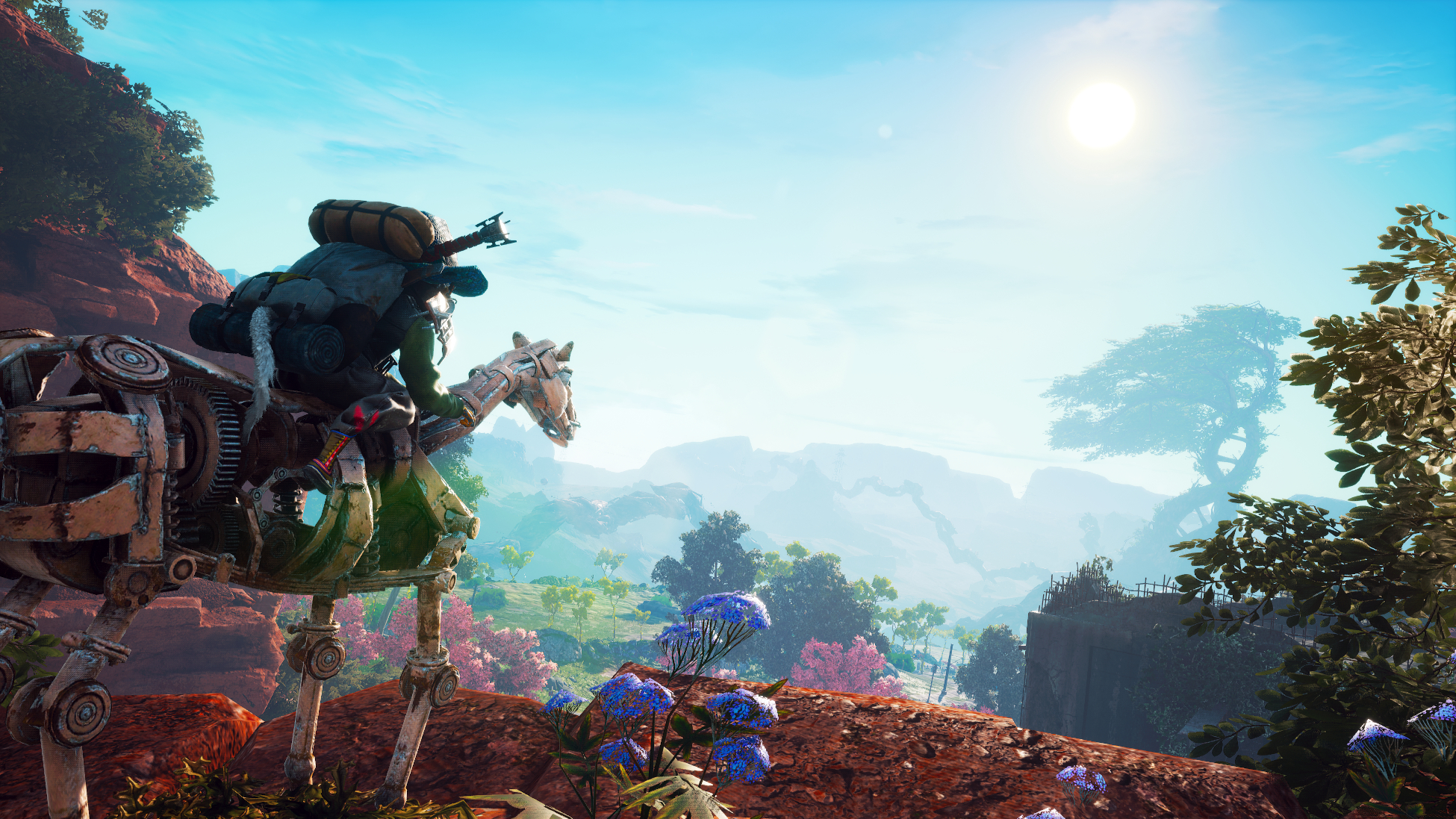

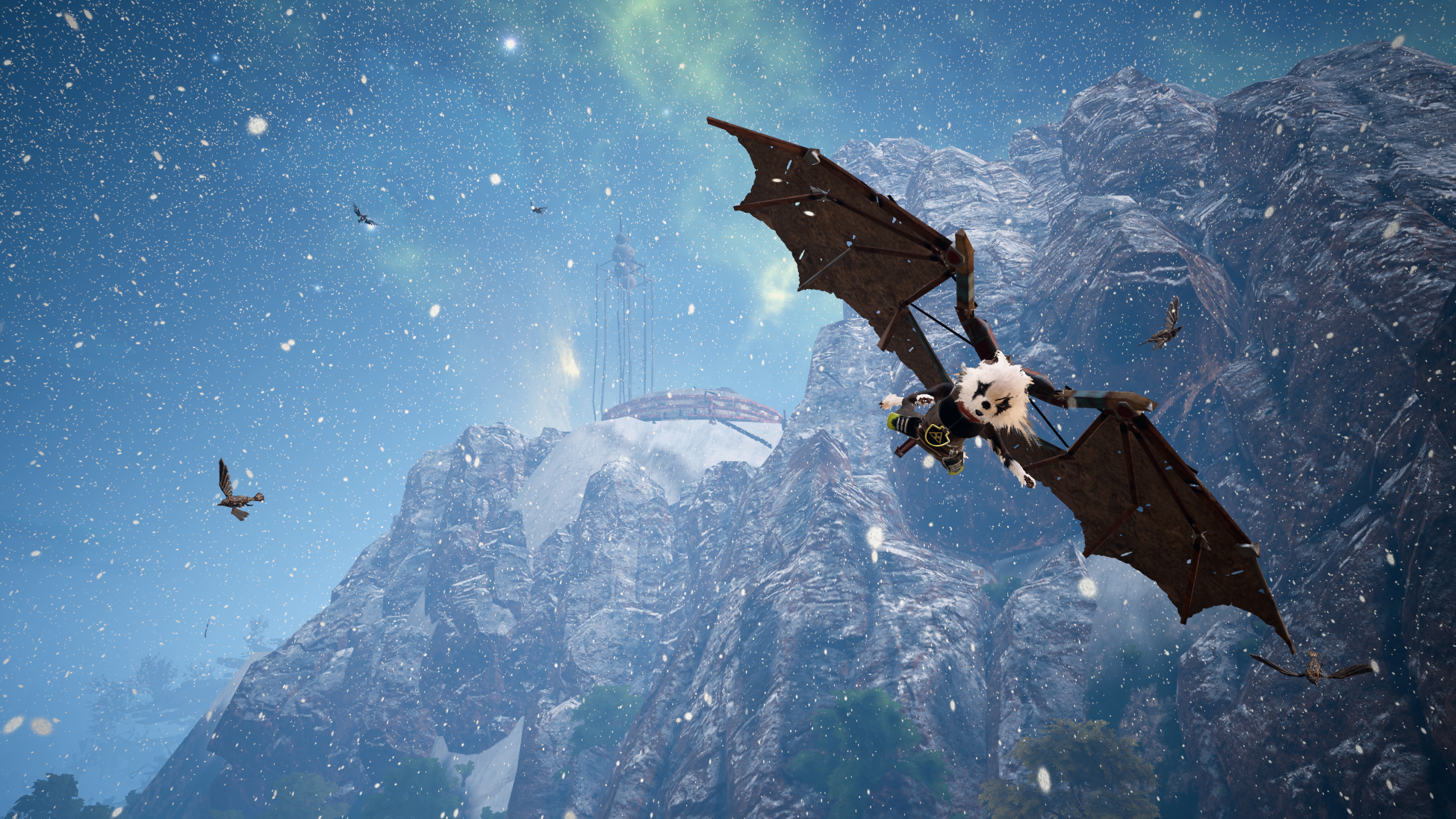


In the interest of full disclosure, VGamingNews was provided with a copy of the game in order to conduct this review.
Evil Dead: The Game
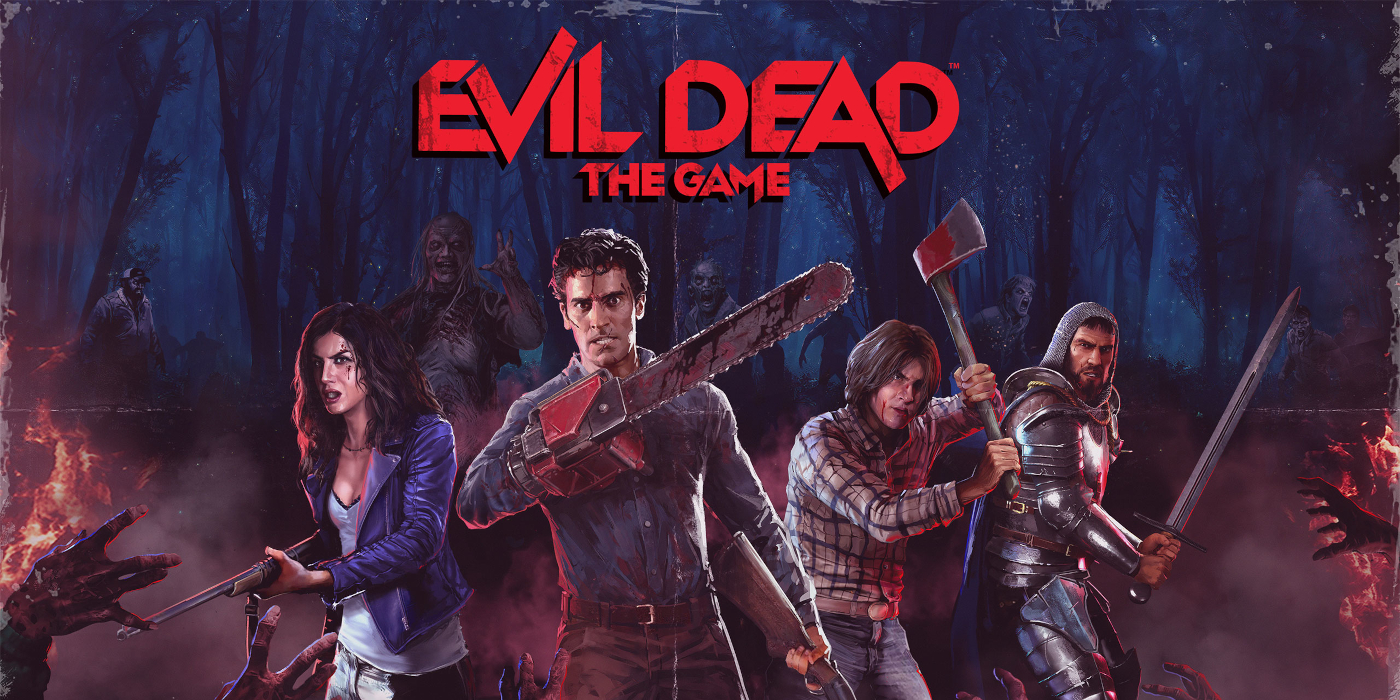

Evil Dead has been terrifying stoned students, horror fans and geeks into niche references since the early 1980s. The movie, made for around 80 pence in today’s money, was an unassuming piece of work driven by three young students who set the standard for many horror tropes used today. On top of this, Sam Raimi, Bruce Campbell and Robert Tapert accidentally created a franchise spanning different mediums, even some forty years later. Fast forward to 2022 and I’m taking a look at the latest entry in the franchise, Evil Dead: The Game.
At A Glance
| Scores | |
| Visuals | 8 /10 |
| Sound | 8 /10 |
| Gameplay | 8 /10 |
| Overall | 8/10 |
| Positives | + Lovingly crafted for Evil Dead fans + Playing as the Demon causes mayhem + Jump scares galore |
| Negatives | – Single player relegated to a handful of missions – Not enough enemy variation – Camera is a little too close for comfort |
| Price (When Reviewed) | £39.99 |
| Our Playtime | 20 hours |
| Available On | PS5, PS4, Xbox Series X|S, Xbox One, PC (Soon: Switch) |
Evil Dead: The Game is an online asymmetric multiplayer game created by Saber Interactive, who are best known for their work on co-developing The Master Chief Collection, as well porting The Witcher 3 to Nintendo Switch. Four players are dropped into those infamous woods as human characters and must survive the night by finding the Necronomicon – the Book of the Dead. To find the book, players first have to search for items that lead to the book’s location. Attempting to thwart the survivors, is the invisible Kandarian Demon, controlled by a fifth player. Their job is simple; summon demons, possess trees, and cause an excruciating amount of pandemonium to swallow the souls of the players. Those who’ve experienced Friday the 13th or Dead By Daylight will know the drill, and the game runs similarly in this respect.
Before being dropped into the huge map (more on that later), players choose their survivors from a roster of well-known faces who’ve appeared throughout the franchise’s film and TV outings. Characters such as Scotty, a secondary character who *spoiler from 1981 alert* doesn’t make it beyond the first film, all the way through to Kelly and Pablo, the youthful driving force behind Ash Vs Evil Dead, all make their mark in the game. The star of the show however is Ashley Williams, the hapless character around whom the entire series is based. Voiced by Campbell himself, he embodies the horror and cheese that the series is loved for. Witty one-liners are delivered with aplomb throughout the game and provides the level of fanservice Evil Dead: The Game aims to achieve.
Each character is sorted into four different classes; Leader, Warrior, Support, and Hunter, and each has a varying set of skills that can be utilised throughout each run – and yes, if you want to, everyone can play as Ash at the same time as he features in every category in one form or another. Before the blood and guts start flinging from your chainsaws, just take my tip and coordinate with your pals on who is taking which role. During one of my first games no one chose to be a medic, and much like Ash’s hand, it went bad.
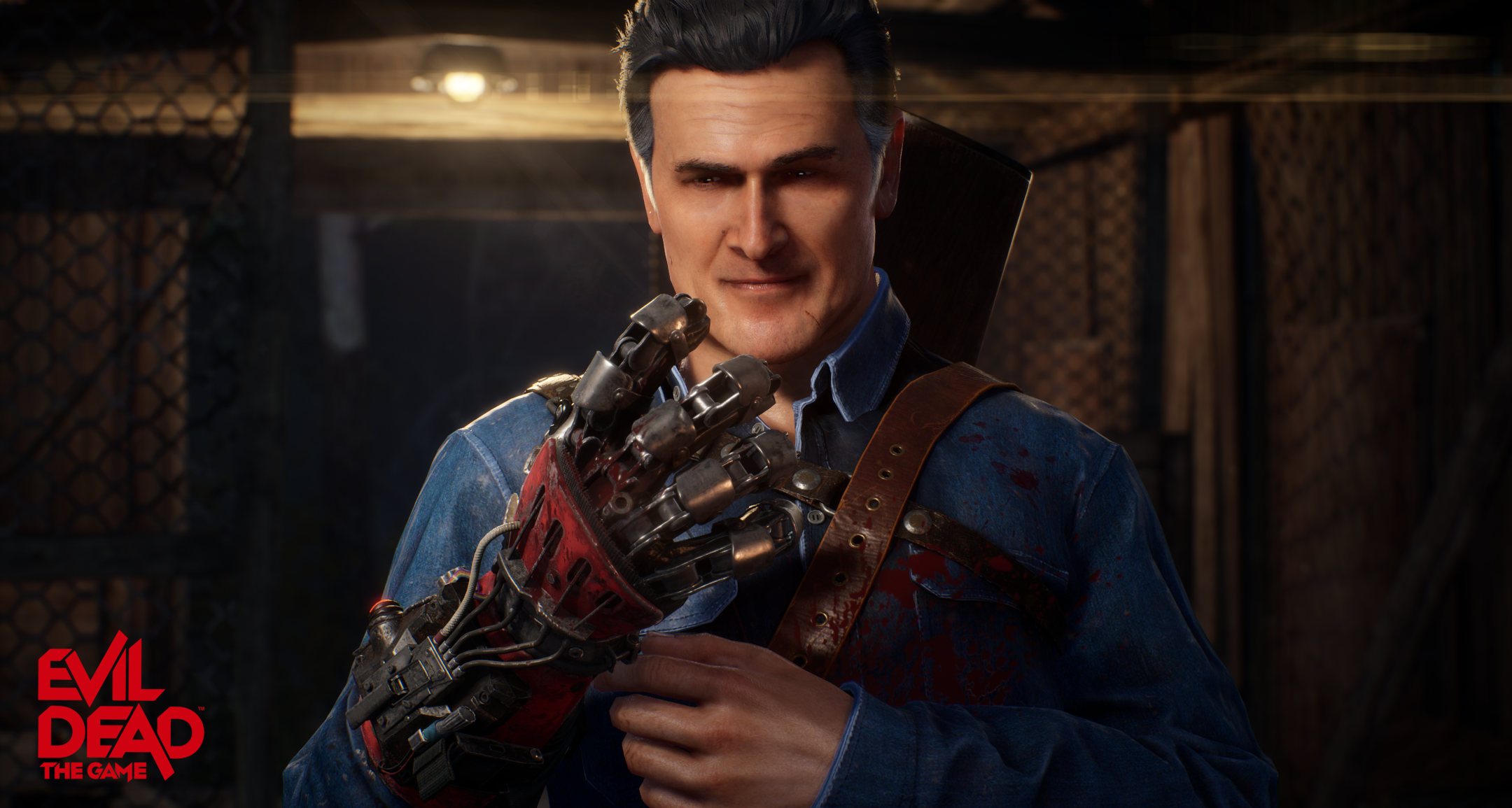
As players begin searching for the book, the demon player utilises several tools, such as traps, where Ash’s mutilated hand will spring out of chests, or having a tree swing at players if they get too close. You can also summon demons, which is the easiest way to cause damage, and towards the end game you can take the form of bosses like Evil Ash or the basement dweller Henrietta in order to deliver a healthy amount of pain. There’s even a button that allows you to jump-scare your enemies! All that said, my absolute favourite part of the game is the ability to possess. While summoning the army of the dead is fun, you can jump into the mind of one of the Deadites and go after specific players, handy if they have low health and are trying to flee. If, however, enough emotional damage is inflicted, a quick tap of L1 allows possession of a player, taking over their screen and causing them to attack their own teammates. The sadistic part of me took a different approach though,and instead of attacking others, I chose to waste players’ ammunition and health drinks as they helplessly watched on. If this is timed right, this can be done just before a big skirmish which will help finish the team off. This is absolutely where I gained the most amount of joy from Evil Dead.
So the characters are faithful to the series, but what about the setting? For Evil Dead: The Game, Saber Interactive used some creative licence to expand the wooded area around the Knowby cabin from the films into a huge map featuring service stations, small cul-de-sacs, and creepy tunnels that are peppered in and primed for looting. With a large area to explore and a thirty-minute time limit per game, the area does feel too big at times. There can be lulls trying to find certain elements, especially early in the game, but the action ramps up before becoming drawn out. After so many hours of flying around the map, I started to learn where all the spawn points, traps and chests are scattered, which is by no means a bad thing but in a few months time could start to get repetitive. Luckily, Saber Interactive has released a second fancy-pants map riffing the Army of Darkness. It’s equally as massive and with lots to explore, but it remains to be seen how the team will mix up the maps in the months/years ahead to keep players hooked, especially now that all of the movies have been fully represented.
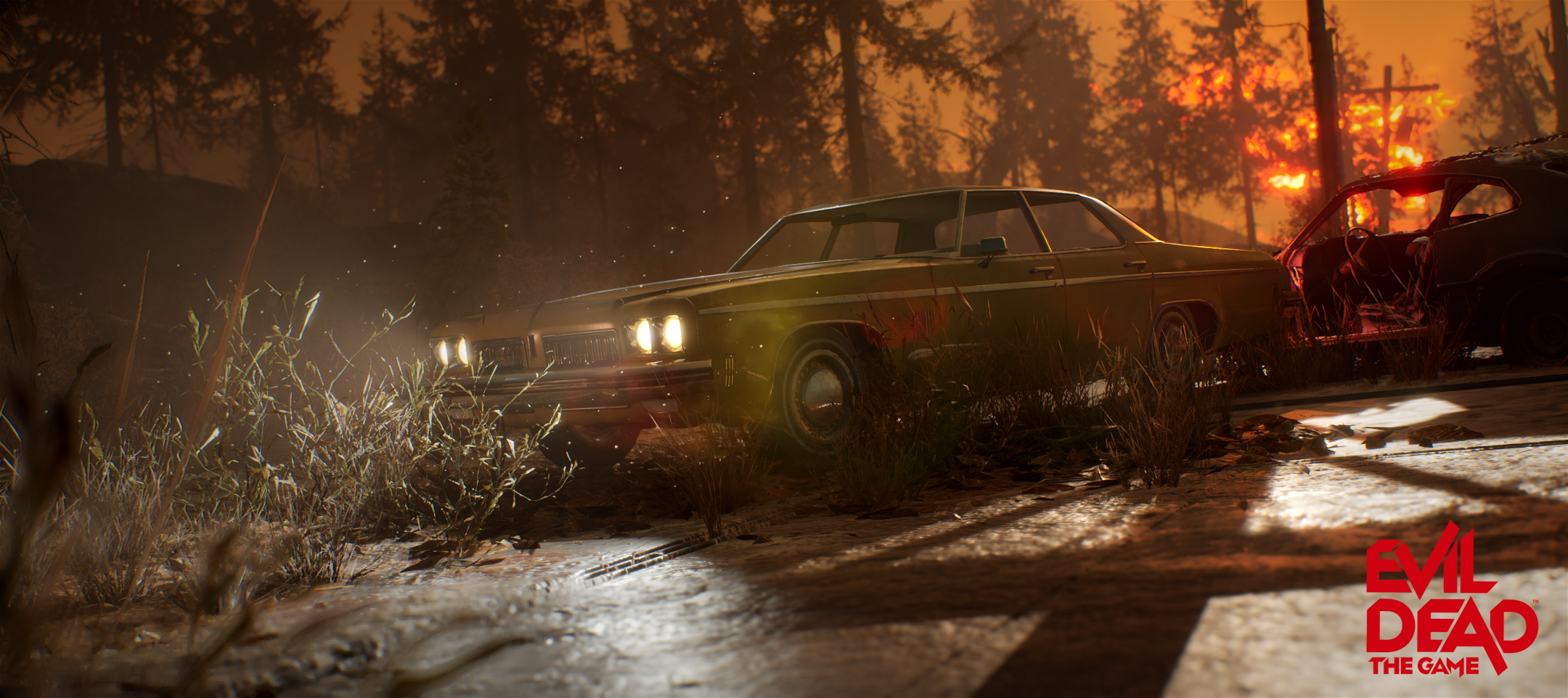
Evil Dead: The Game gets a lot of things right; a massive multiplayer map, the fan service which oozes from every orifice, and 1980s horror aesthetic that mixes scary with funny in a perfect combination. It’s a shame that Evil Dead has a few issues that dampen the experience. As a survivor I felt the camera was too focussed on the player rather than the environment, which was great for those up-close and personal glory kills but particularly annoying when trying to see who or what was on my back at any given moment. As the demon there are severe limitations to enemy types. At the beginning of the match, I had the choice of three bosses, each with two enemy types – standard and elite, both of which look and act similar to one another. While the Elite goon is stronger, more enemy variation would have been nice. The game is also an online-only experience and while there is a single player, it simply boils down to a handful of drawn-out missions designed to teach you the layout of the map rather than add anything to the franchise’s forty-year lore.
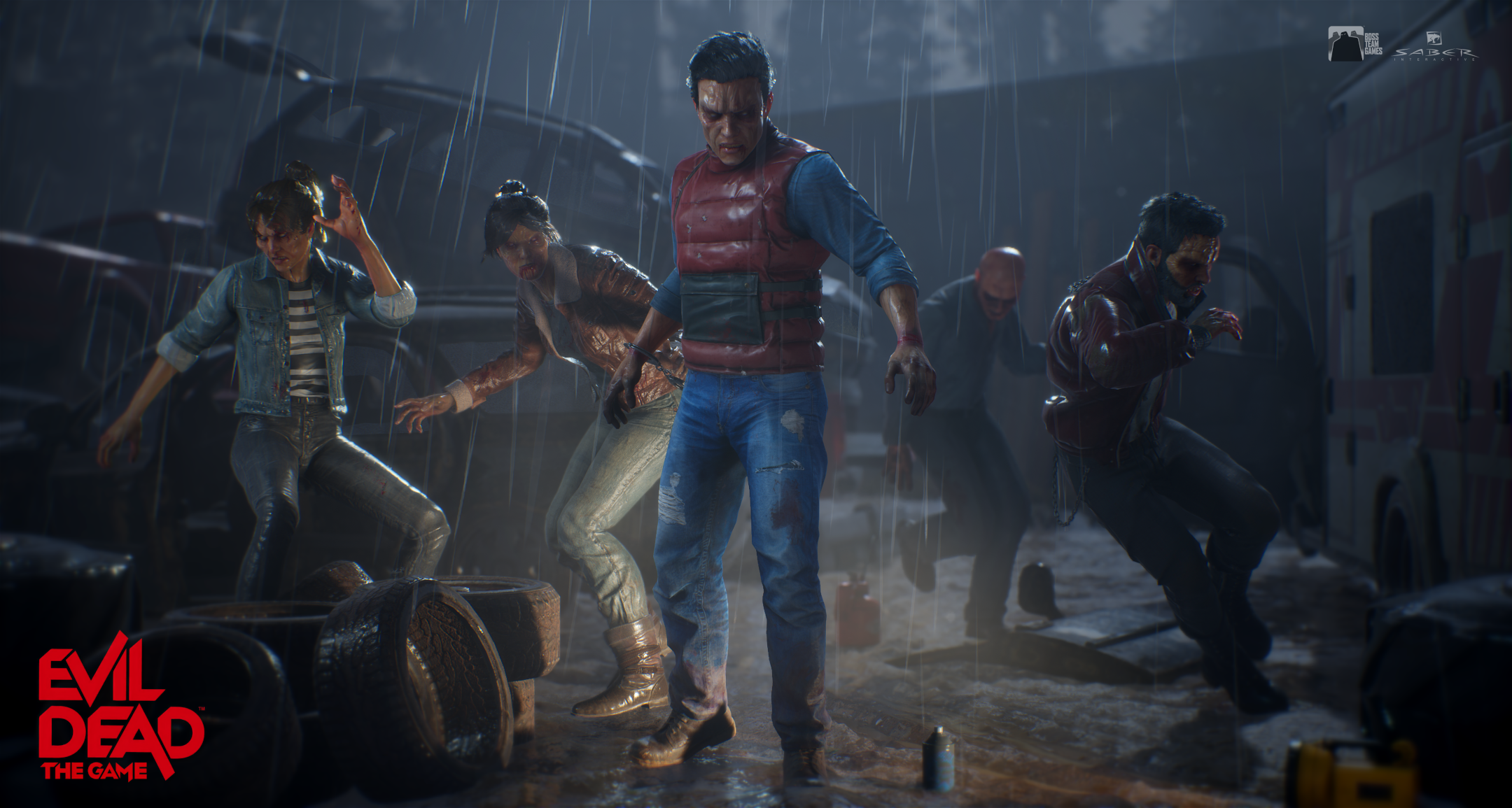
Those issues aside, Evil Dead: The Game still manages to tick a hell of a lot of boxes when it has no business too. The hammy horror is surprisingly well put together and the balance between good versus evil feels fair during play. The cabin in the woods is lovingly recreated, Campbell’s snarky and witty remarks are out in force and terrorising players as the Kandarian Demon is something any fan can get on board with. Those unfamiliar with the franchise might not get every single reference but the asymmetric multiplayer is an absolute blast even to those without any knowledge of what’s going on. Each of the survivor classes offers unique ways to play and while there are a few drawbacks such as the lack of a meaty single player and camera issues, Evil Dead: The Game is an entertaining, fun game that can be summed up in one, all-encompassing word: Groovy.
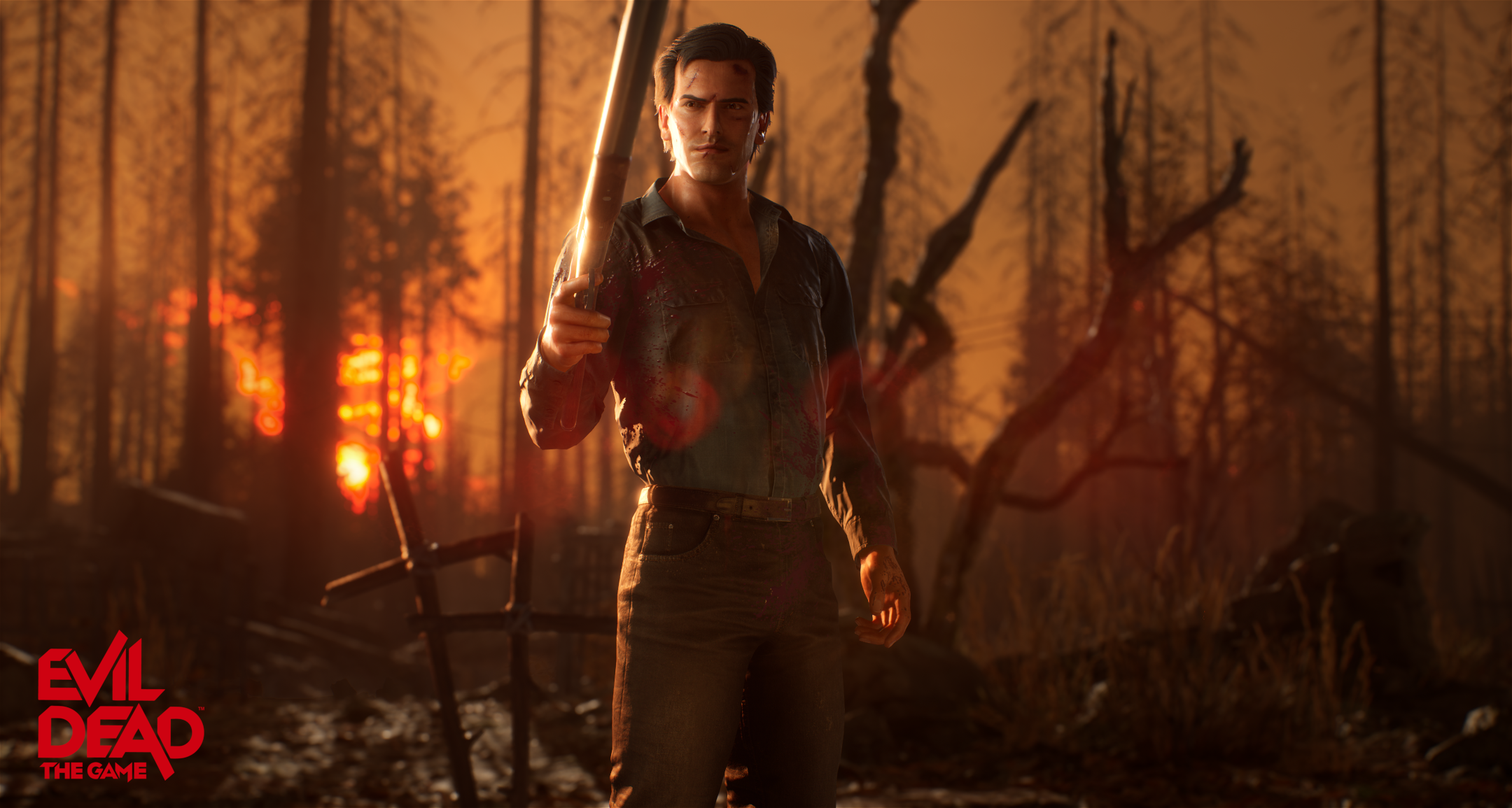
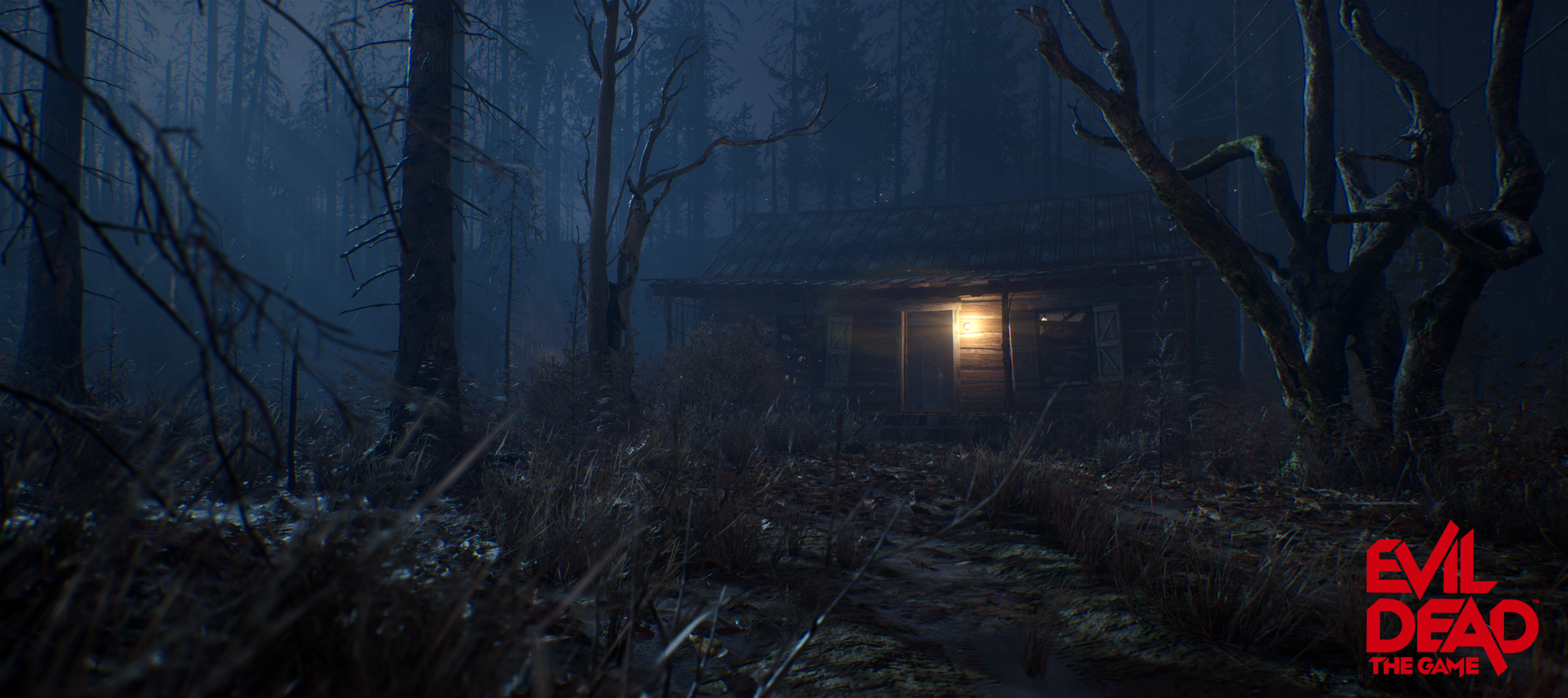
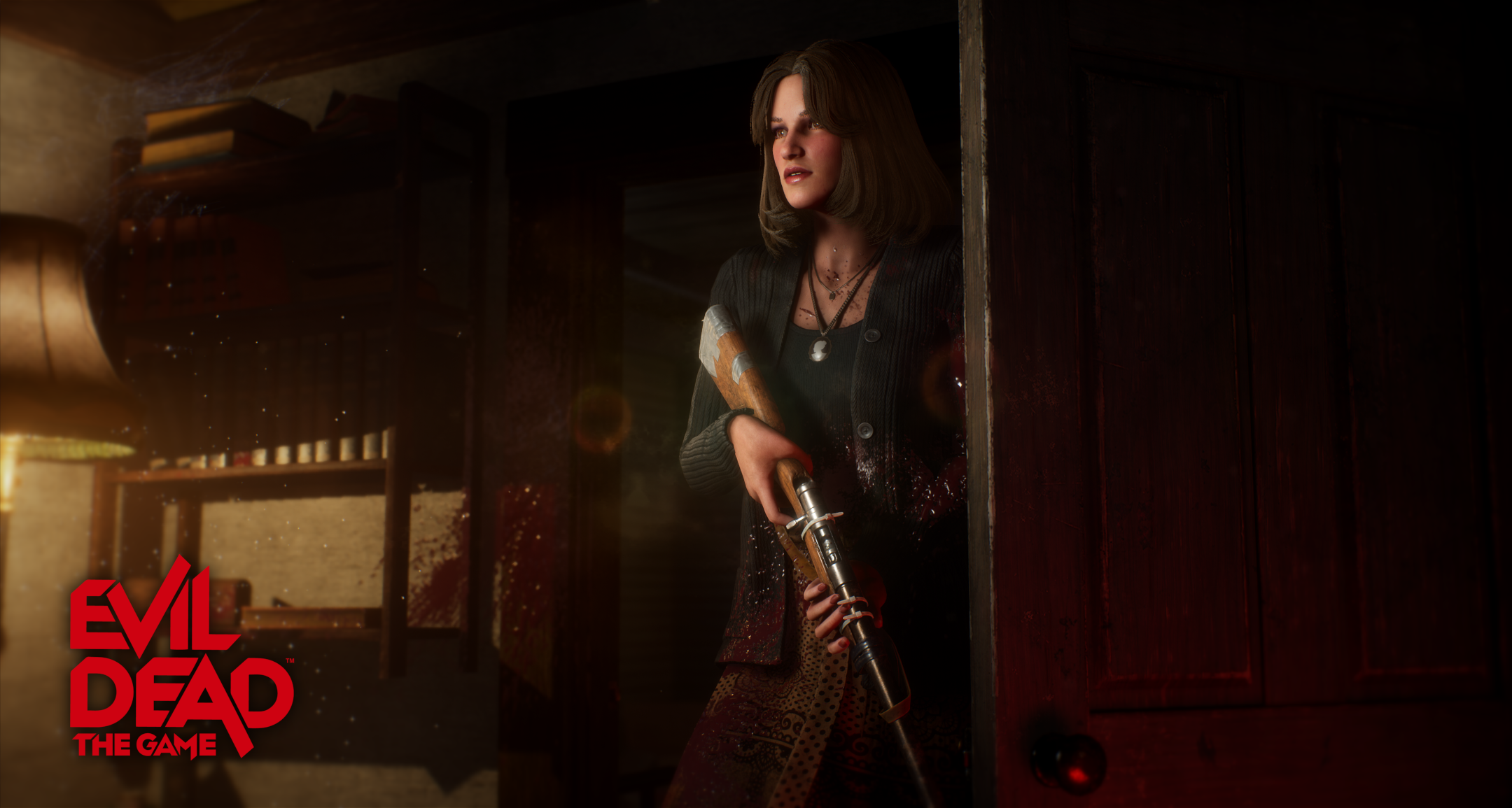


In the interest of full disclosure, VGamingNews was provided with a copy of the game in order to conduct this review.
Ratchet And Clank: Rift Apart
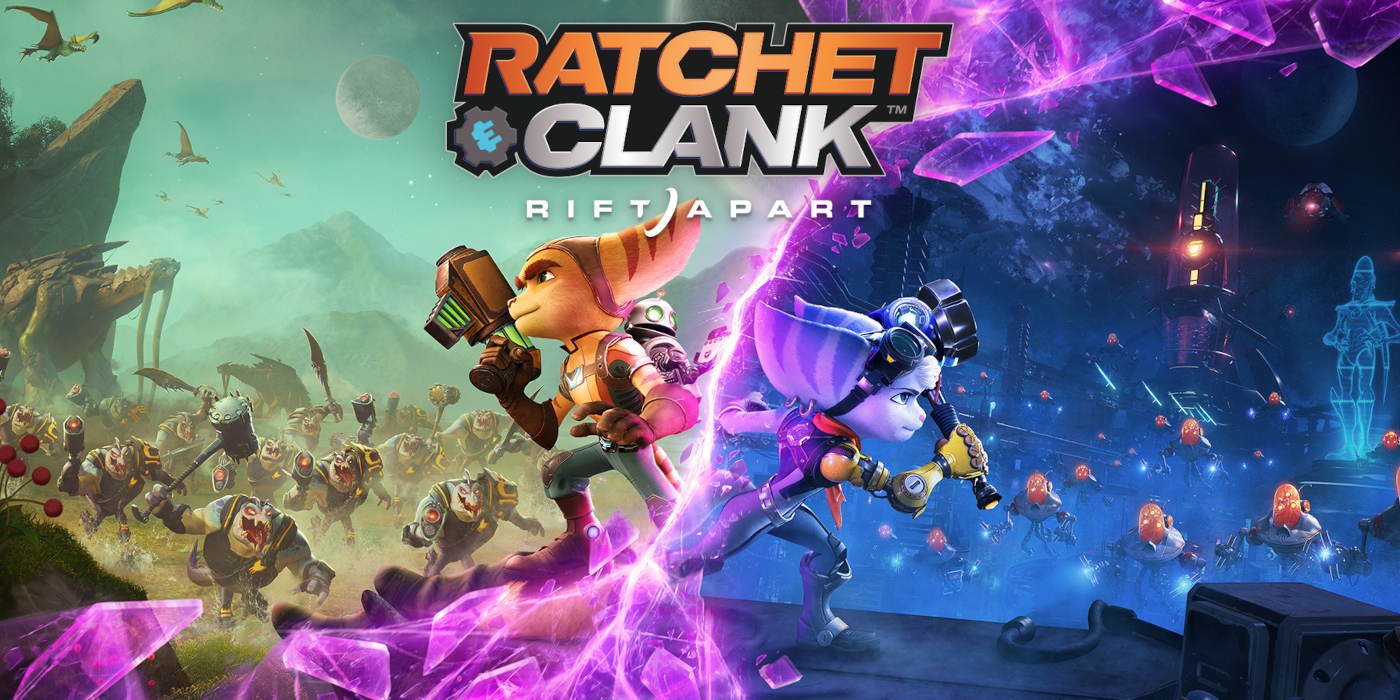

Eight years. That’s how long it’s been since the last new entry in the Ratchet & Clank series. Outside of 2016’s PS4 remake of the first game, I have gone a whole console generation without stepping into Insomniac Games’ crazy universe where a Lombax and a tiny robot team up to save the galaxy. Insomniac seemed to recognise this and, as the PlayStation 5 era gets underway, Ratchet & Clank: Rift Apart has burst onto the scene to not only cure that near-decade long itch, but to showcase the power of the fancy new console. I originally played through the game on its release but a year on since release, it’s time to present my thoughts on it.
At A Glance
| Scores | |
| Visuals | 9/10 |
| Sound | 6/10 |
| Gameplay | 7 /10 |
| Overall | 7 /10 |
| Positives | + Beautiful to look at + Some of the best platforming seen in years + Load times, what load times?! |
| Negatives | – Stale story – Same ol’ glitches – Not much ‘game’ is present |
| Price | £69.99 |
| Our Playtime | 20 hours |
| Available On | PlayStation 5 |
Let me set the scene of Rift Apart. Ratchet and Clank have stepped away from saving the galaxy; we join them as they are being honoured for their past heroics but our favourite Lombax is utterly distracted and wants to find the rest of his race. It’s a plotline that’s been developing for years, and just as Insomniac are about to let him find peace, the series’ main bad guy, Dr Nefarious, has other ideas. Somehow during his assault on the heroic duo, he manages to break space, pulling everyone into an alternate dimension. It’s here Ratchet encounters Rivet, another Lombax who’s leading a resistance against her own Nefarious. Here they must team up to tackle both Nefariouses (Nefarioui?) and save the crumbling dimensions.
The plot is not the most *ahem* riveting, story being told, and after 20 hours felt underwhelming. Another entire dimension should open up the world, but Insomniac has decided to fall back on simply giving established characters a slight twist. Rivet, who was highly promoted from the get-go, is relegated to ‘female Ratchet’ – even her moveset is a carbon copy of her male counterpart. What really irked me is that the humour is as sharp as ever, with a particular highlight being Zurkon Jr taking the role of murderous psychopathic robot as Zurkon Snr becomes a pacifist. It was a confusing juxtaposition, as I loved the humour throughout the game -it made me laugh more than it ought to- but the main plot was tried, tested and annoyingly stale.
While I could go on about the downsides of the story, the same cannot be said about the gameplay. During the opening parade, I was handed the keys to the game while the hapless Captain Qwark fills the crowd in on what’s been happening for the last few years. Reacquainting myself with Ratchet & Clank’s action platform style felt like picking up just where I left off. Since the last game came out at a time when there were only six Fast and Furious films, this tutorial felt warranted and gave me time to knock the rust off before being flung into the game.
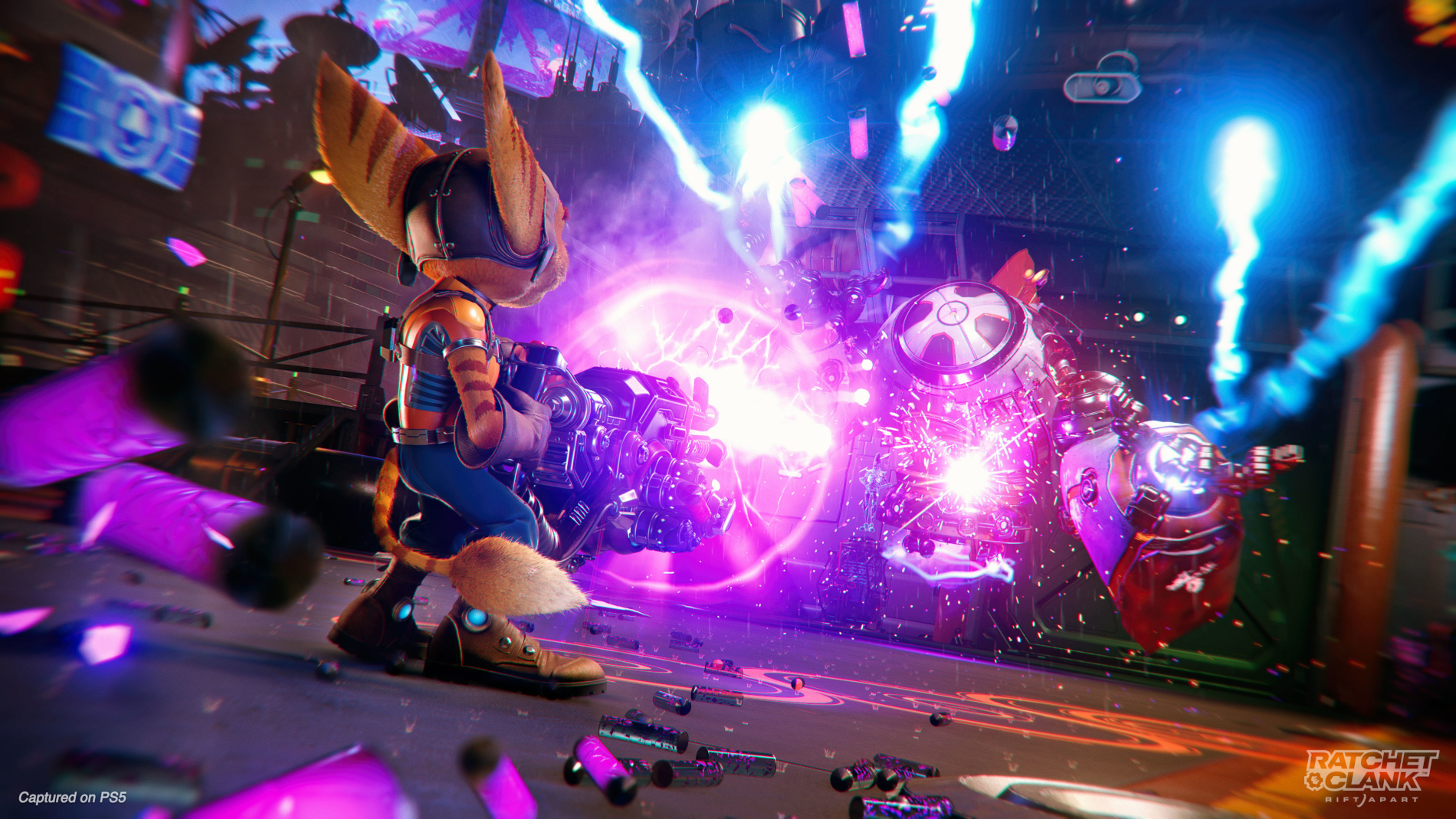
Once the game opens up, it is clear each level appears to be vast. Nefarious City is Rift Apart’s first level and it feels like a living city with NPCs carrying out their daily business. As huge as each level is, not everywhere can be explored and as it’s a 3D platformer it is curiously limited in what can be done. The core concept is simply: land on a level, look for an item, activate a small cutscene, fight a few enemies, use the item on the main objective, activate another cutscene, fight the boss and move on to the next level. The trouble is there is no balance in this pattern and Rift Apart chooses to focus more on the cutscenes,than offering any control over the game.
It felt like the game was tightly holding my hand all the time. Prompts would guide me through the levels, telling me where to go and how to achieve my objectives. On top of this, there is a limited degree of freedom to explore. If I did go off book, there was a sense that all of life would implode in on itself. I felt playing Rift Apart was like watching a hyperactive child in a park – running from one bit of equipment to another in quick succession, only enjoying one thing for the smallest of moments before zipping off to the next toy. Everything felt urgent – even the music was as dramatic as a Christopher Nolan epic, and the constant pressure to move on didn’t give me enough time to process everything. If I did stop for any length of time, it felt as if the game was breathing down my neck, ready to whip away my controller privileges.
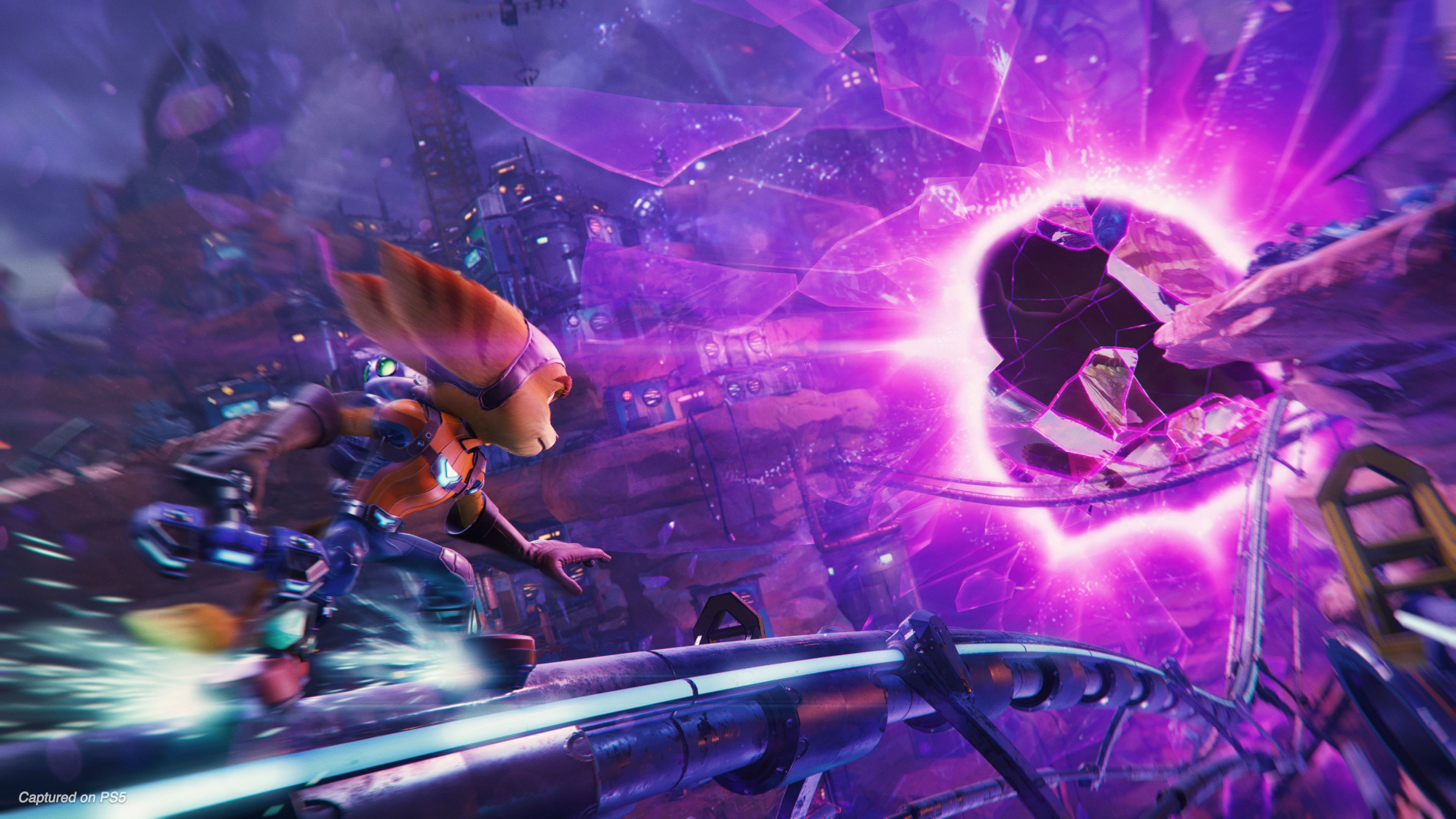
This was a shame because Rift Apart’s core gameplay was phenomenal. I have never played a game with such tight controls. Ratchet and Rivet felt like a joy to control. The pin-point accuracy of moving and jumping just feels natural but the biggest improvement is with shooting. The DualSense controller audiably clunks into place when the game loads up and depending on the weapon used, affects the pressure needed to fire it. The haptics are used cleverly too; when using boosters to skate around the environments, each motor rumbles with the corresponding foot hitting the floor.
Along with the traditional platform elements, there are cool new mechanics to explore. Early in the game, Ratchet gains the ability to harness rifts. If one appears on screen, then the Lombax is able to pull space towards him with a tap of a button. This instantly zips him to a different part of the map, which not only helps with traversing the huge maps, but can be utilised in combat; when being pinned down in one area, I could locate a small rift and teleport behind enemies and finish them off. These might not be groundbreaking features on their own but when it’s all considered as one package, Rift Apart contains the best 3D platforming experience I’ve come across.
The gameplay isn’t the only area of praise; Rift Apart slapped me around the chops with just how pretty it is. From the moment I pressed Start, the menu seamlessly faded away, flowing into the first cutscene. Insomniac must be wizards, as the game snapped to life in milliseconds, with no loading times to speak of at all. In my bewilderment, the only thing I noticed was a blip here or there, but nothing like staring at a black screen for 30 seconds. It felt like being back in the 16-bit era of instant loads.
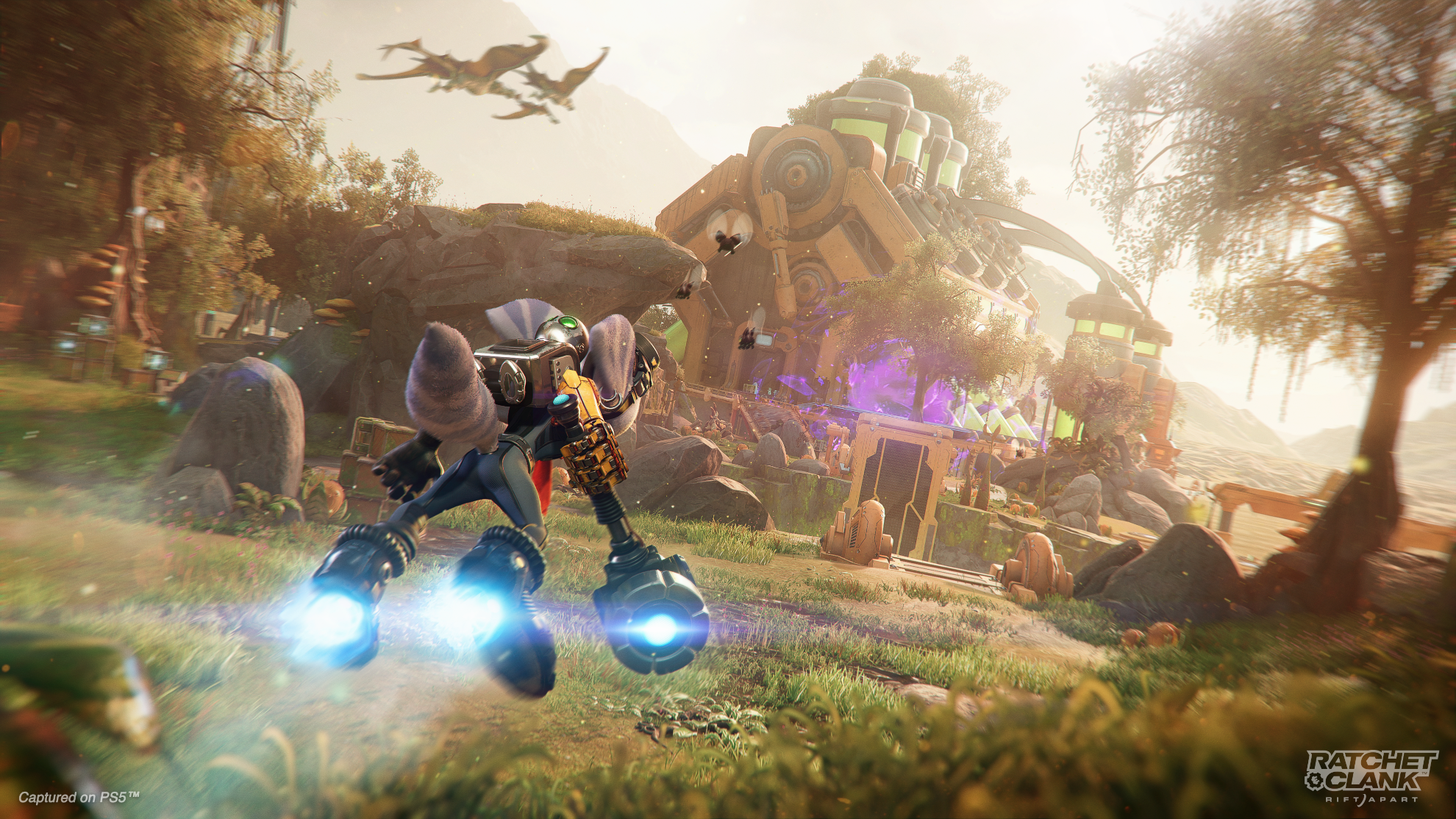
The crisp visuals popped out of the screen and even though flying taxis are staples of Ratchet games, everything looked polished and new. It became clear that Insomniac had devoted a lot of time getting the look of Rift Apart spot on. All of the game’s levels are equally gorgeous and striking to look at. The characters are equally stunning, particularly seeing the minute movements of Rivet and Ratchet’s fur. This detail was so fine, the pair of Lombaxes would look right at home next to Sully from Monsters Inc.
With Ratchet & Clank: Rift Apart pushing the edge of graphical capabilities, sacrifices sadly had to be made. There’s the usual choice to prioritise either visuals or frame rates. The native 4K mode chops the frame rate to 30fps and offers very little gain unless you were utilising photo mode. Rift Apart is best when running at 60fps, as it contributes to that incredible gameplay. On top of this, occasionally assets would refuse to load, even whole levels would simply disappear, causing me to fall through a floor. Patches have been deployed to counter this, but these glitches have been present since the first Ratchet game on PS2, so with Rift Apart, being so close to visual perfection, it was disappointing to see them crop up again.

As a technical showcase of what the PlayStation 5 can do Ratchet & Clank: Rift Apart sets the bar and sets it high. The game is absolutely beautiful with visuals that give Hollywood animations a run for their money. Insomniac have worked their magical voodoo to minimise load times to the point of taking us back to the Mega Drive era. But, from a gaming perspective, Rift Apart plays it very safe. It’s the same story of Ratchet’s longing to find his people and Dr Nefarious attempting to take over the galaxy. These have been part of the series for the best part of two decades, and even the addition of Rivet, who was greatly mishandled, wasn’t enough to shake up the established formula.
Don’t get me wrong, all of the elements of a brilliant platformer are present and the gameplay is phenomenal while it lasts. Out of a 20 hour 100% run, only 5-7 hours of Rift Apart is spent playing the game, while the rest of the time was spent watching cutscene after cutscene full of explosive set pieces. So long as I didn’t deviate from the set path, those few hours where I had control were absolute perfection, but it felt like Insomniac Games was focused more on how pretty they can make a videogame look rather than producing a memorable game that fans have waited eight years for.
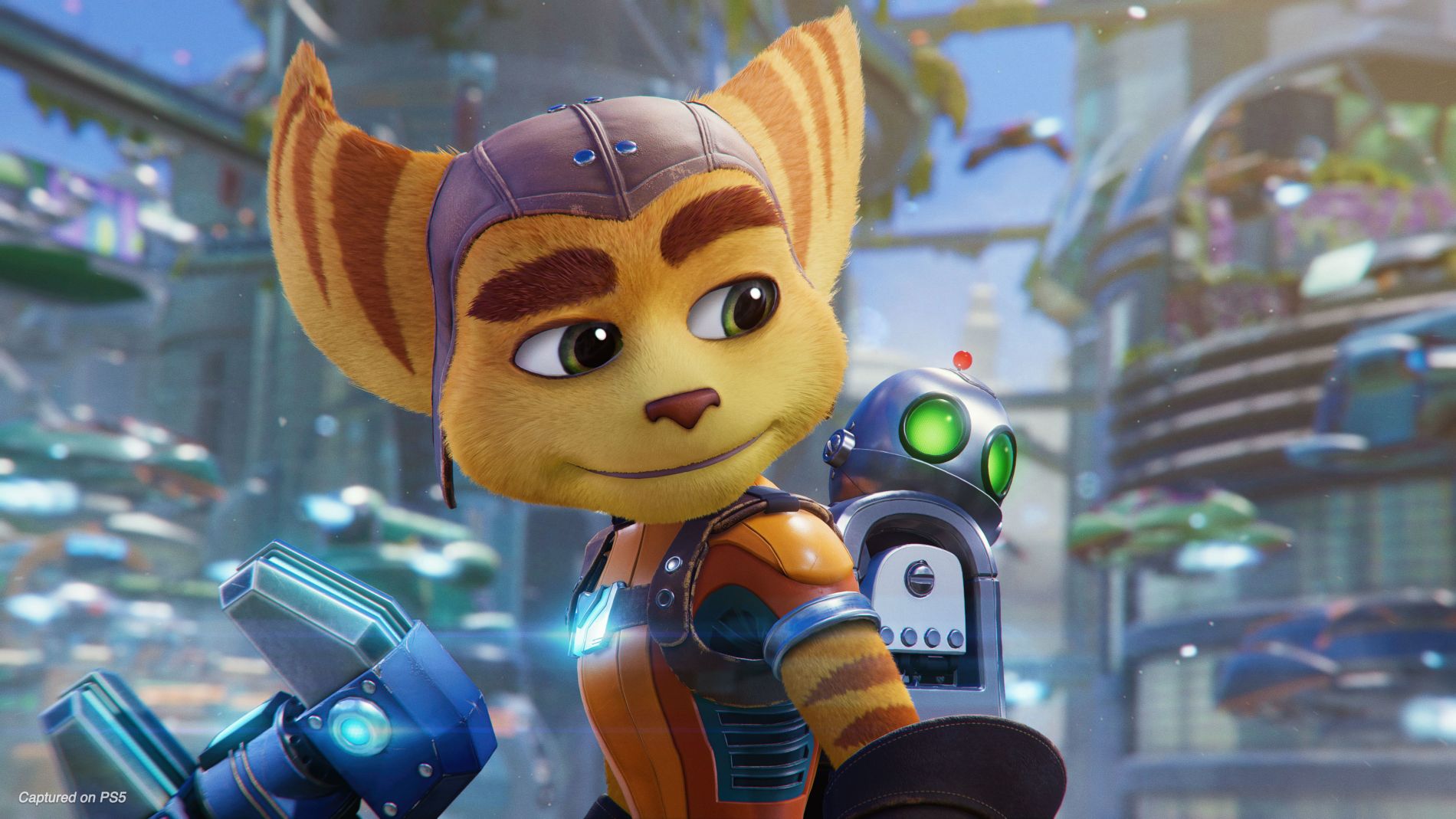
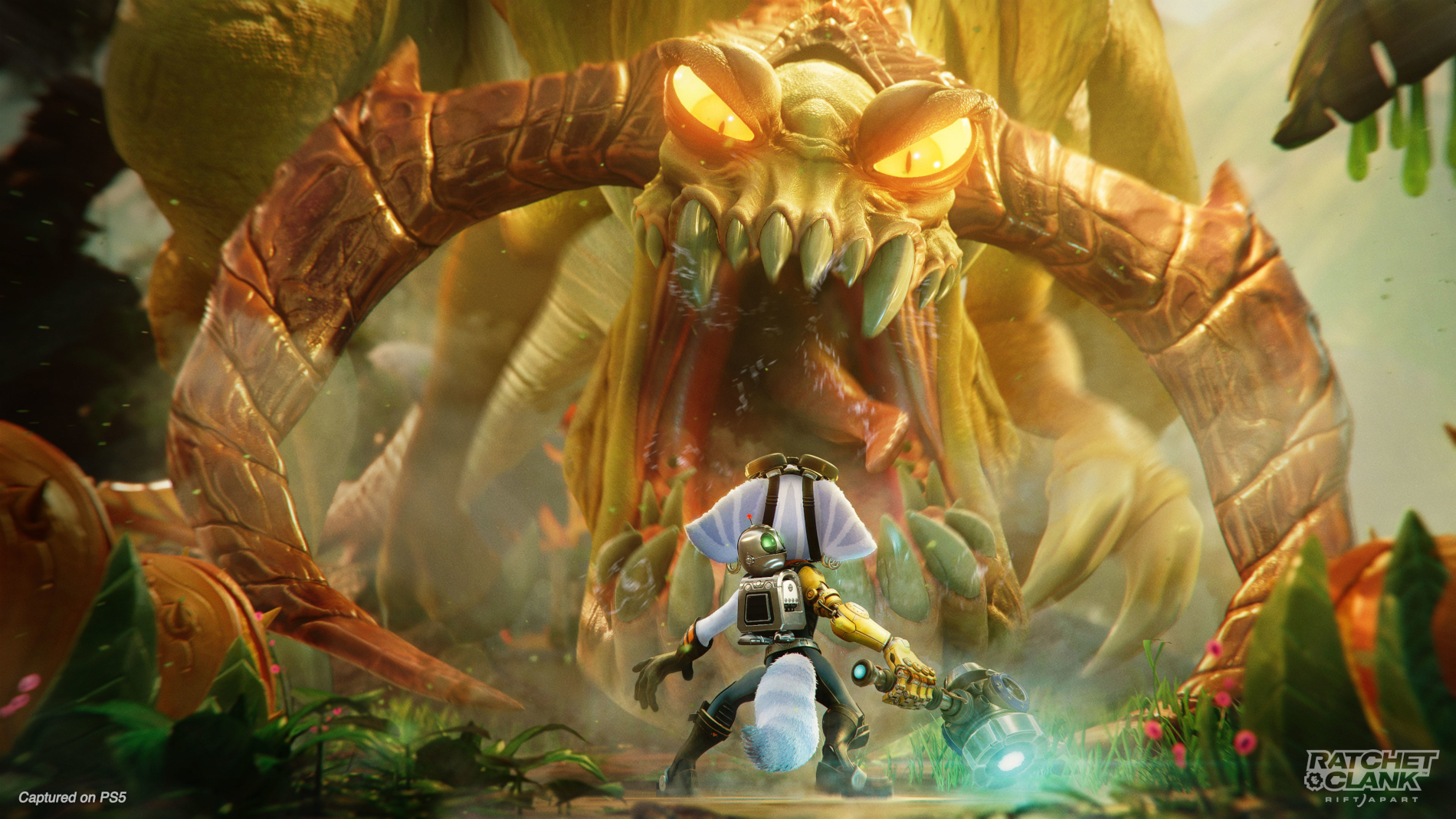

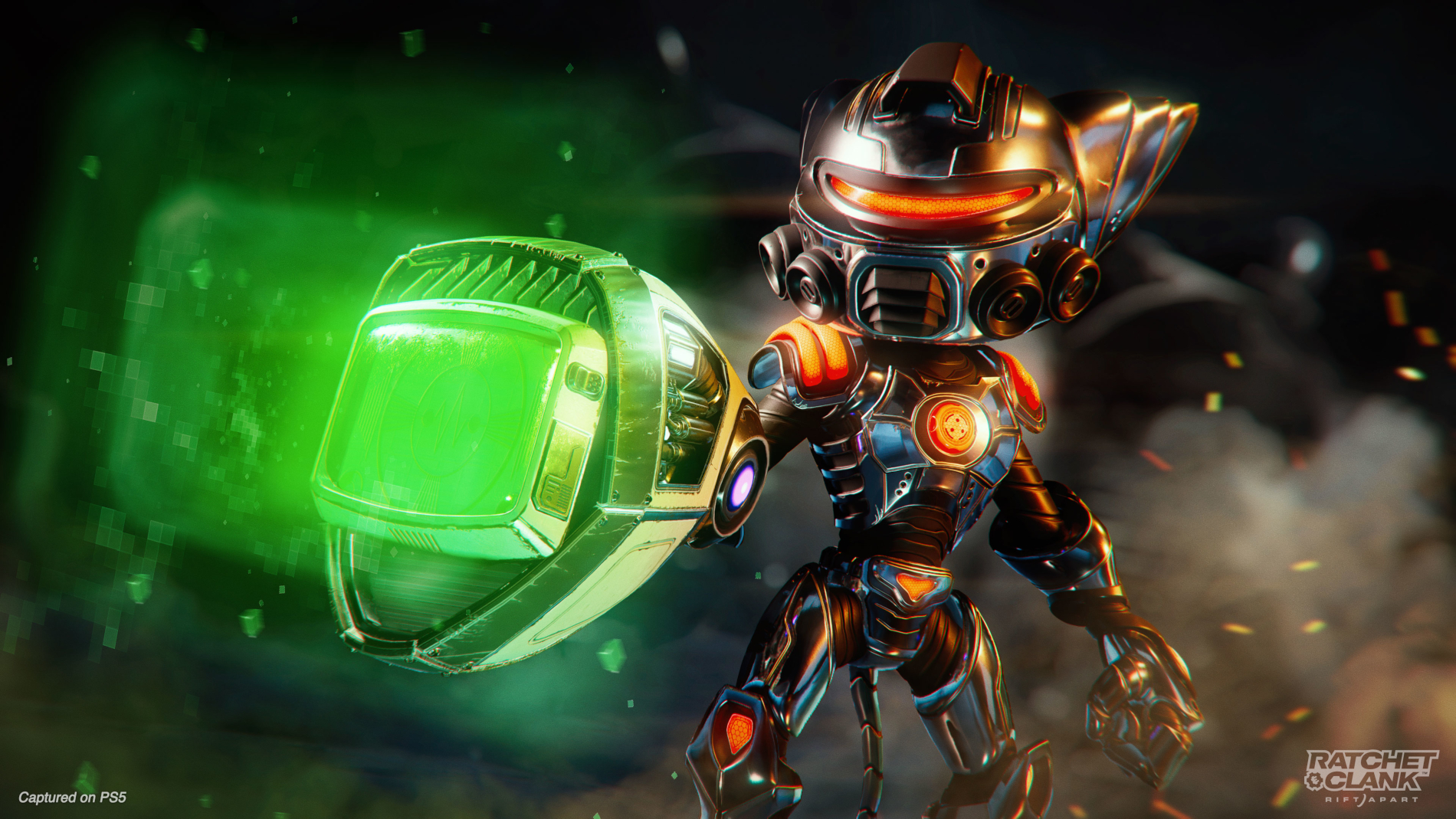
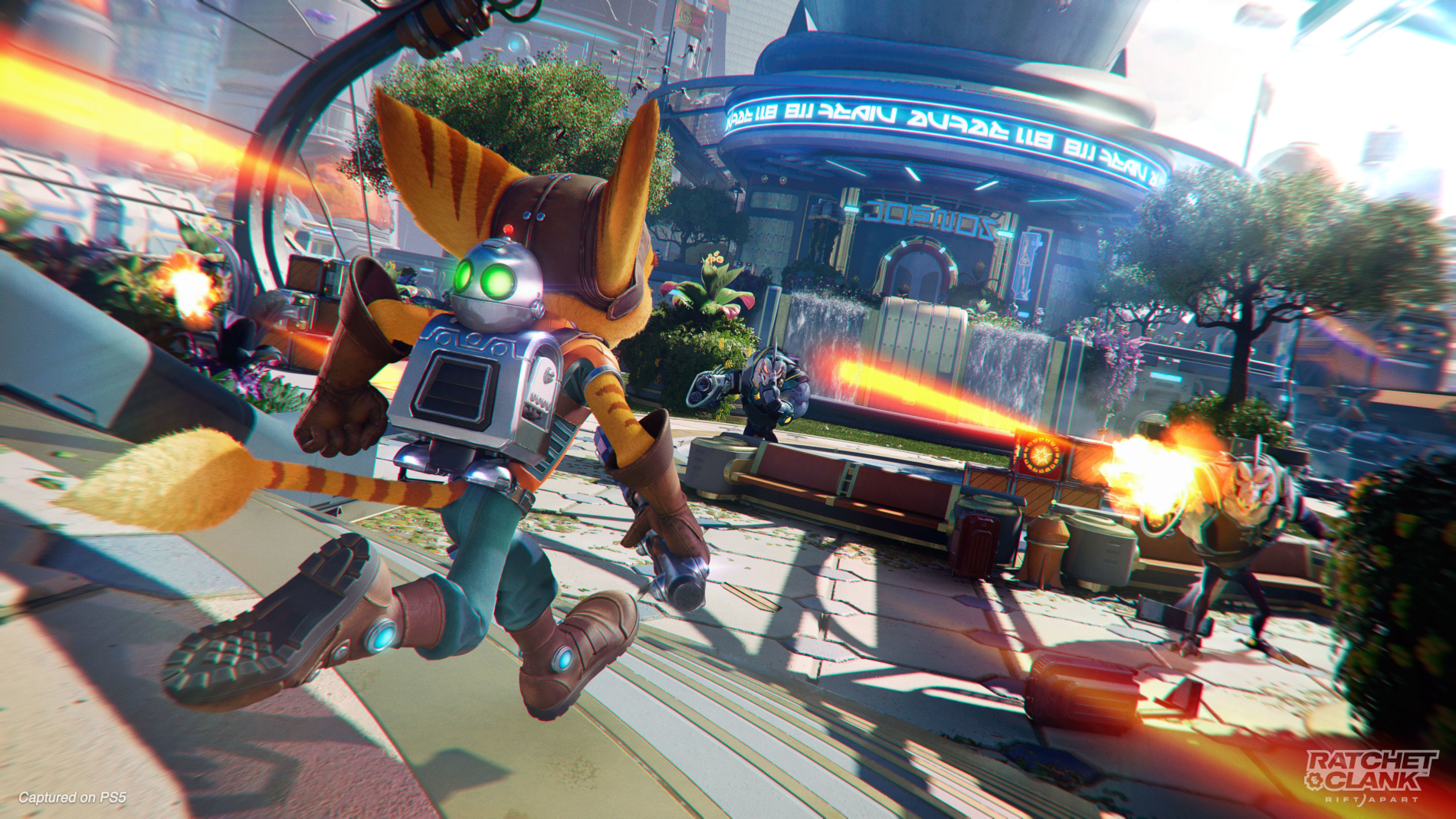
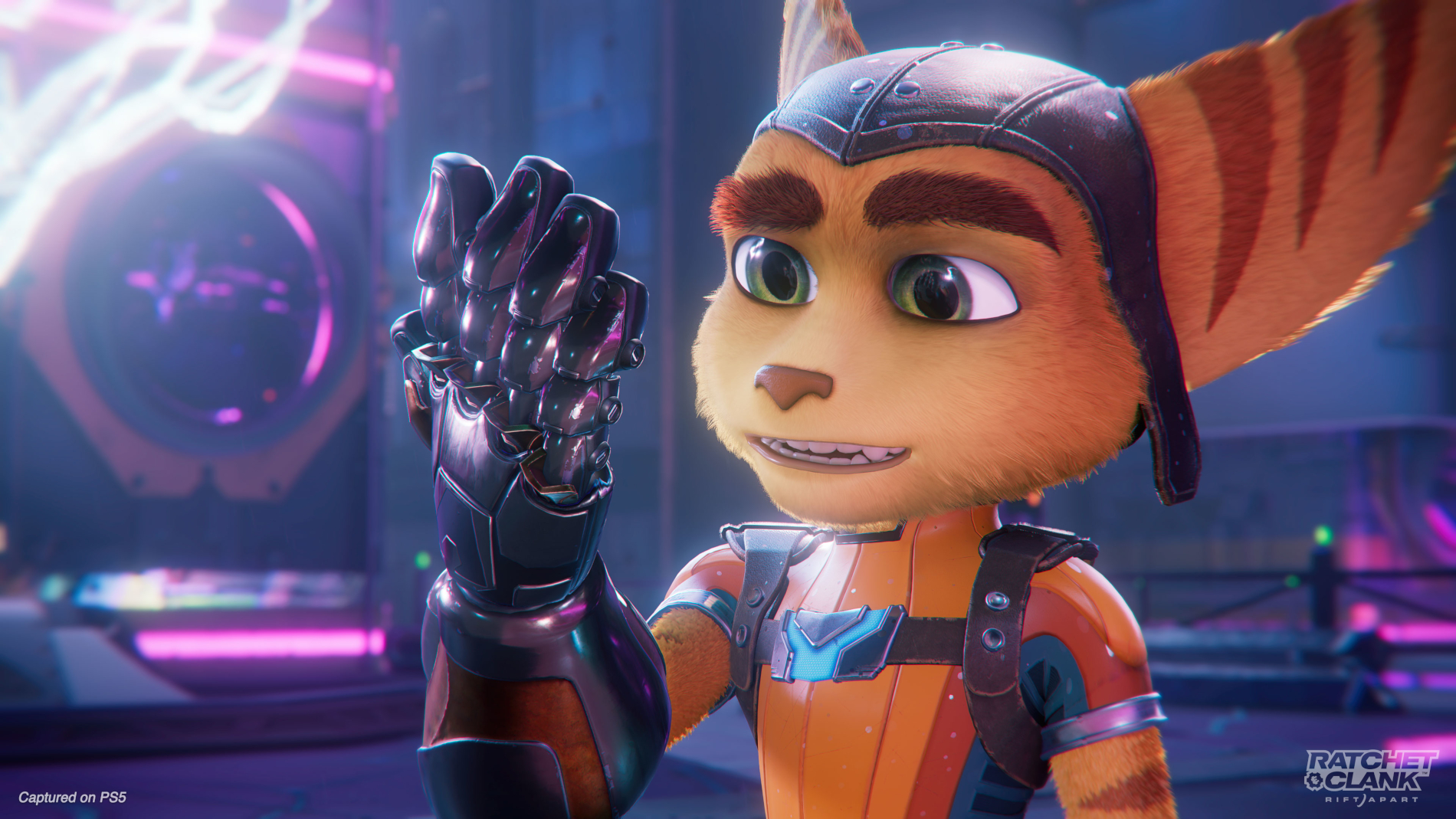


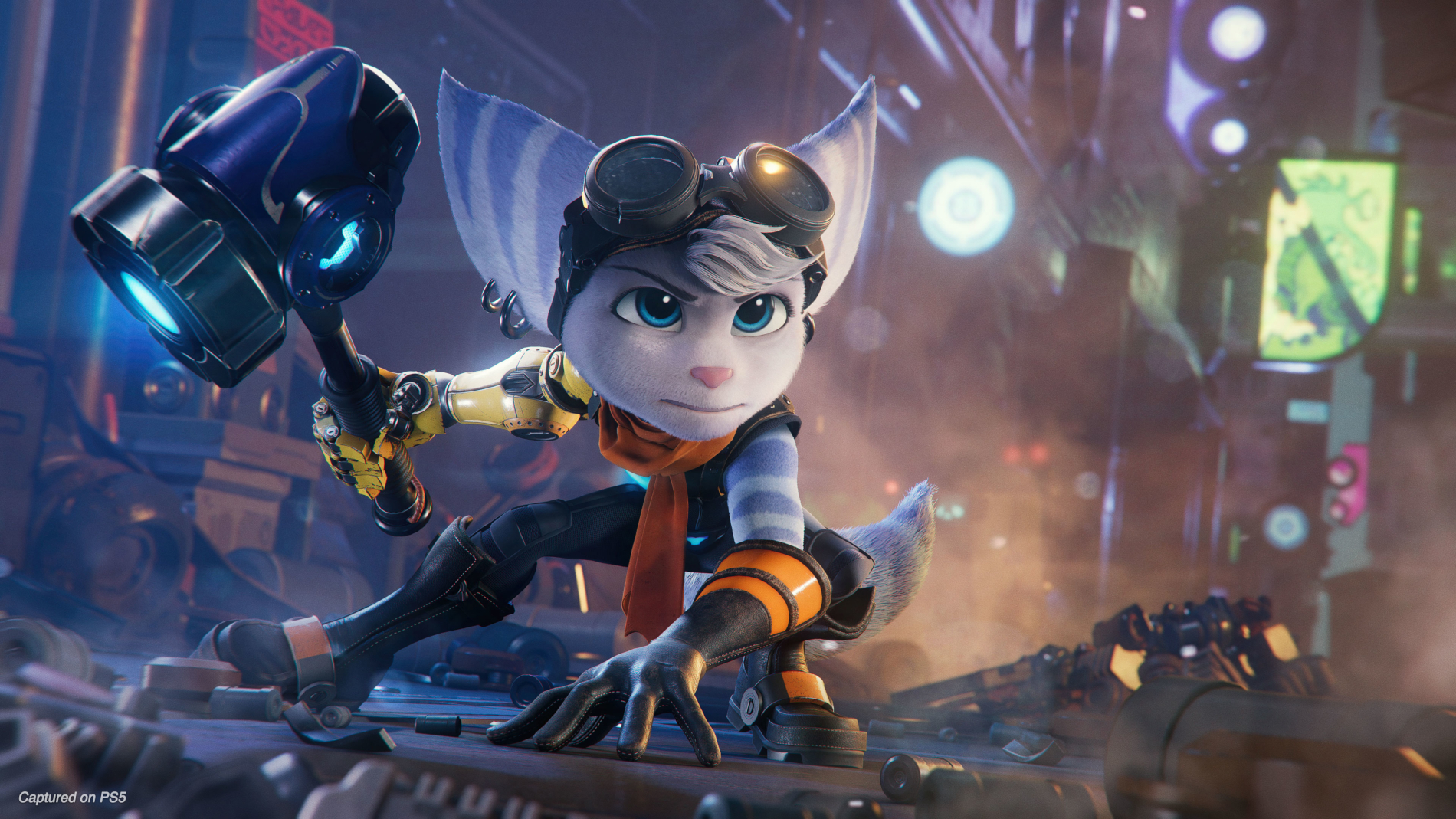

Destiny 2 – The Witch Queen

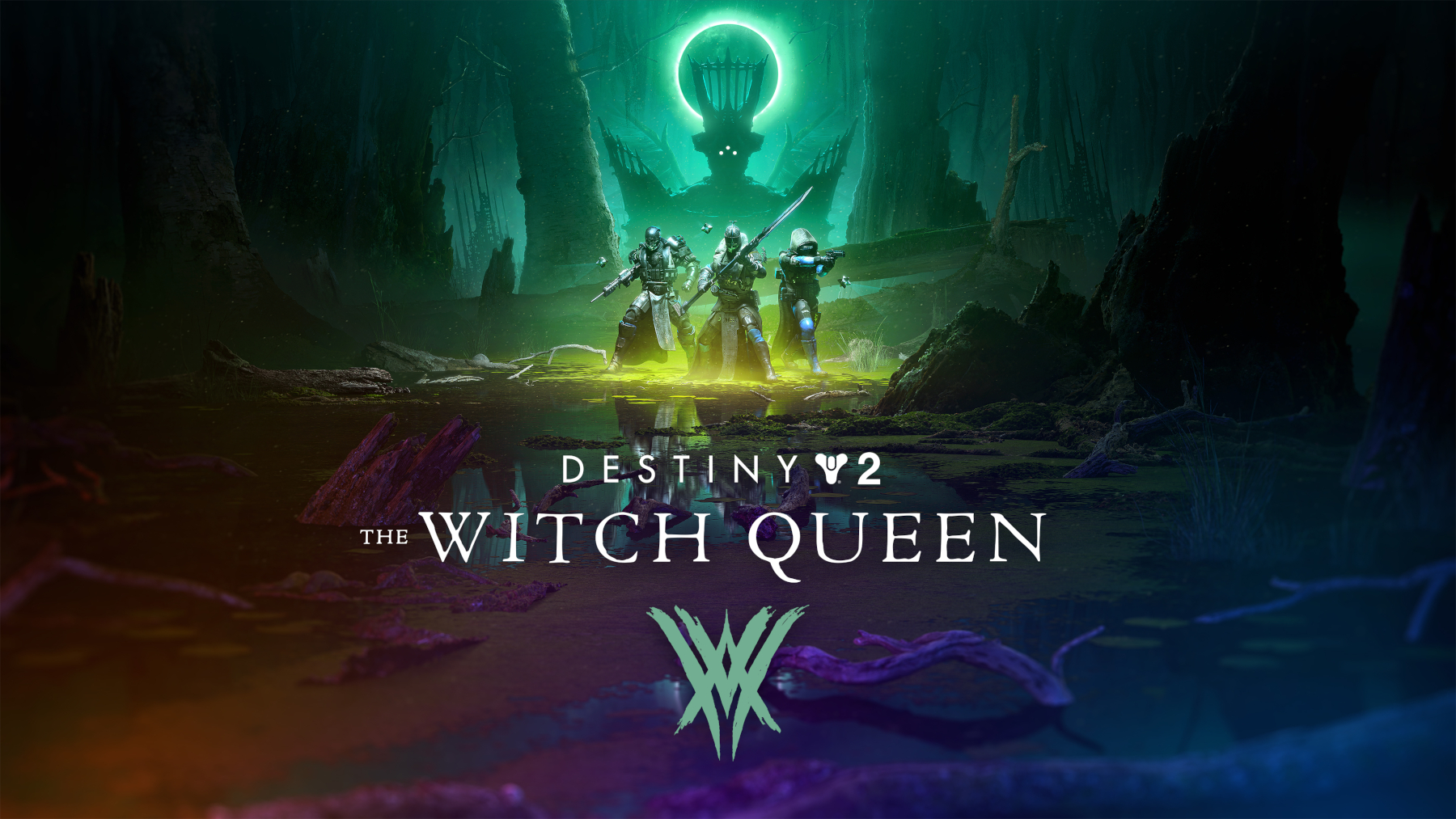
With Destiny 2’s The Witch Queen Expansion, Bungie have brought a massive overhaul to the world of Guardians. The story will be told over the course of the next year, but out of the box there are a number of game changes, improvements and an overarching story that ripples throughout the game’s lore. New weapons have been welcomed into the game, and along with the re-emergence of Mars as a playable map, the gameplay has been tweaked significantly over the last overhaul, though there are some caveats to this expansion which may irk long time players.
Note from the Editor: As Destiny 2 is a live service game, we’ll be reviewing all of the expansions and what they mean to the overall game. Current reviewed expansions are found below:
At A Glance
| Scores | |
| Positives | + Beefy expansion with large storyline + Fully customisable weapons + Hive Guardians are challenging |
| Negatives | – The new area is a little too small – Relies on sheer numbers of enemies – Enemy types are limited |
| Overall | Recommended |
| Price (When Reviewed) | £34.99 |
In Destiny 2 – The Witch Queen, Savathûn, one of the ancient Gods of the Hive who has been weaving her influence throughout the world since the original Destiny, is finally unveiled. She is sister to The Taken King, and now she’s ready to act out her plans for capturing humanity. Along with the emergence of her Throne World, The Witch Queen has brought her Lucent Hive army, who’ve somehow managed to manipulate The Light to power them up, allowing a brutal assault on our solar system. As the allied generals scrabble to form a plan of defence, it’s up to the Guardian to load up and investigate just what’s going on.
Savathun’s arrival and her use of The Light brings a whole new layer of story to Destiny 2. For years it was accepted that The Light, the gift that was bestowed on humanity, was to be destroyed by the various alien forces. Once the expansion kicked off, it felt that The Witch Queen had finally brought a grey area to the typical Light vs Dark war we’ve seen in the past. This twist works brilliantly as the game became less about defending humanity, turning it into a preemptive full-scale assault against an enemy that is more powerful than ever before. It becomes apparent early on that the human generals will do anything to stop the enemy and this causes the game to pose questions about tactics used in war that could be unethical. It was an unexpected turn – you don’t often expect a game about alien invasions to question the boundaries of war and how far they should be pushed, but it certainly brought an element of humanity to the game.
Leading the charge against the Guardians is the Lucent Hive – enemies using The Light to draw the same powers as players. The serious issue however are the Hive Guardians; enemies acting as the player counterparts with the power to become Super Charged. Along with throwing void shields like Captain America, they also have corrupted ghosts – meaning that if you don’t destroy the ghost, they will respawn. I found that battles become more intense – even the standard fodder enemies have the ability to cause problems, especially if I was on my own, but the biggest trouble I had was that the Lucent Guardians are sparsely utilised. Bungie seemed to rely on using an overwhelming number of disposable grunts rather than the harder enemies and the combat becomes stale after defeating the same enemies wave after wave.
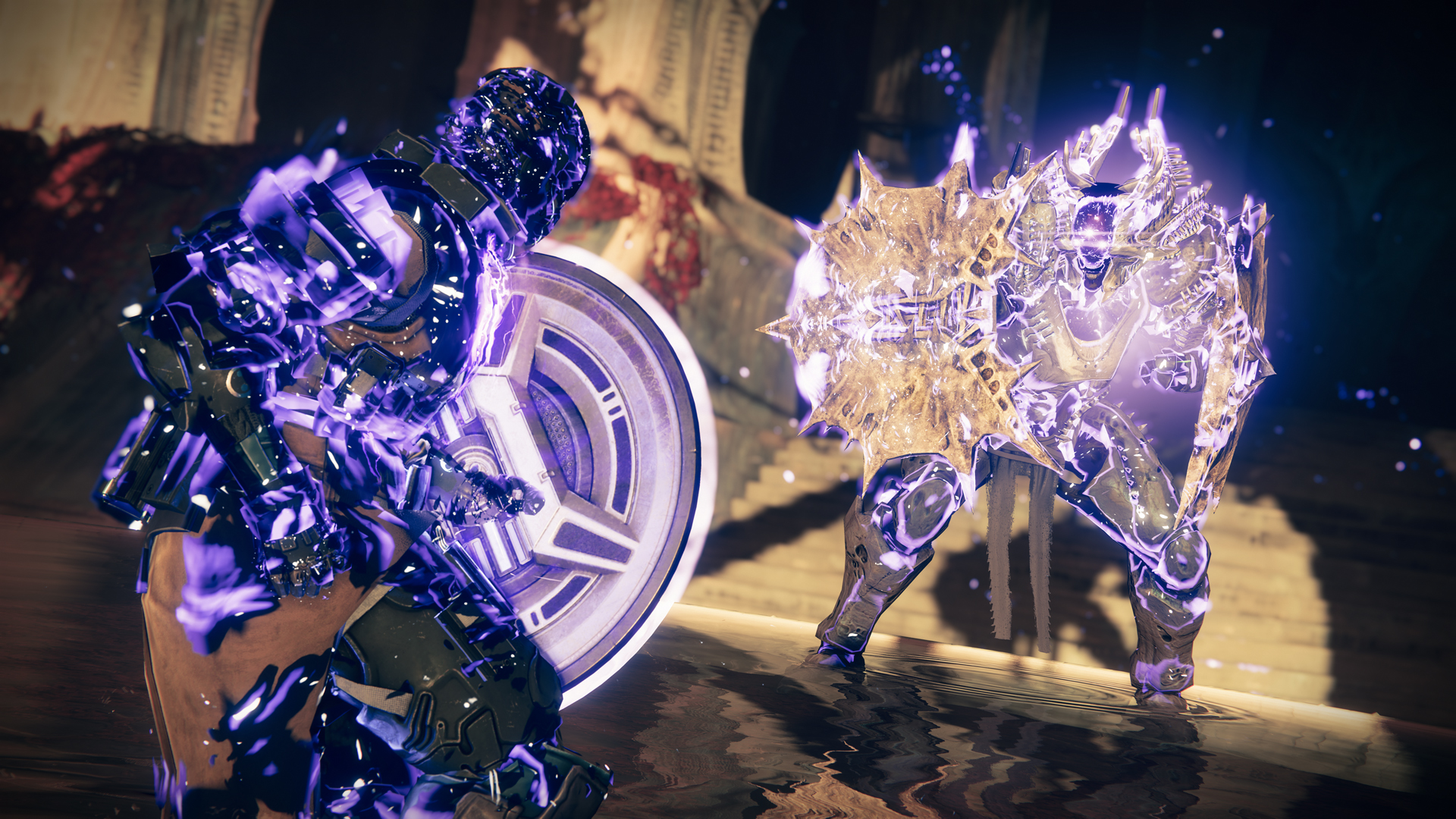
To counter the Hive, there are a new glut of weapons to get your mitts on and these can be found throughout the main story or by undertaking various raids and missions. But to mix things up, there’s a brand new weapon type, the glaive – it’s a power staff that can not only be used as a melee weapon, but shoots projectiles and can even have a shield option. Unlike the various swords and energy weapons we’re accustomed to, this retains the first person perspective and allows for a combination of melee attacks along with the long range blaster. Every time I use this weapon, it makes me feel like Gandalf has arrived in Destiny 2 and it’s such a simple weapon that it makes me wonder why Bungie hadn’t implemented it sooner.
Along with the glaive, the weapon system has also seen an overhaul, as weapons and armour can now be upgraded by heading to Mars. I was able to have fun customising my current loadout, making fast weapons more impactful and giving the slower weapons a quicker reload function. As the seasons progress this will be further expanded upon but it was fun exploring the various loadout options. There is one big problem with upgrading the weapons though, and that’s its location. One third of Mars is carved out as a base of operations, with the rest of the planet making up Savathûn’s Throne World. The new map is smaller than the various planets and moons we can already visit and the lack of space means there is a lot of backtracking and visiting the same locations over and over again. I found that, while I enjoyed the story, the environment was boring and done to death half way through the season.
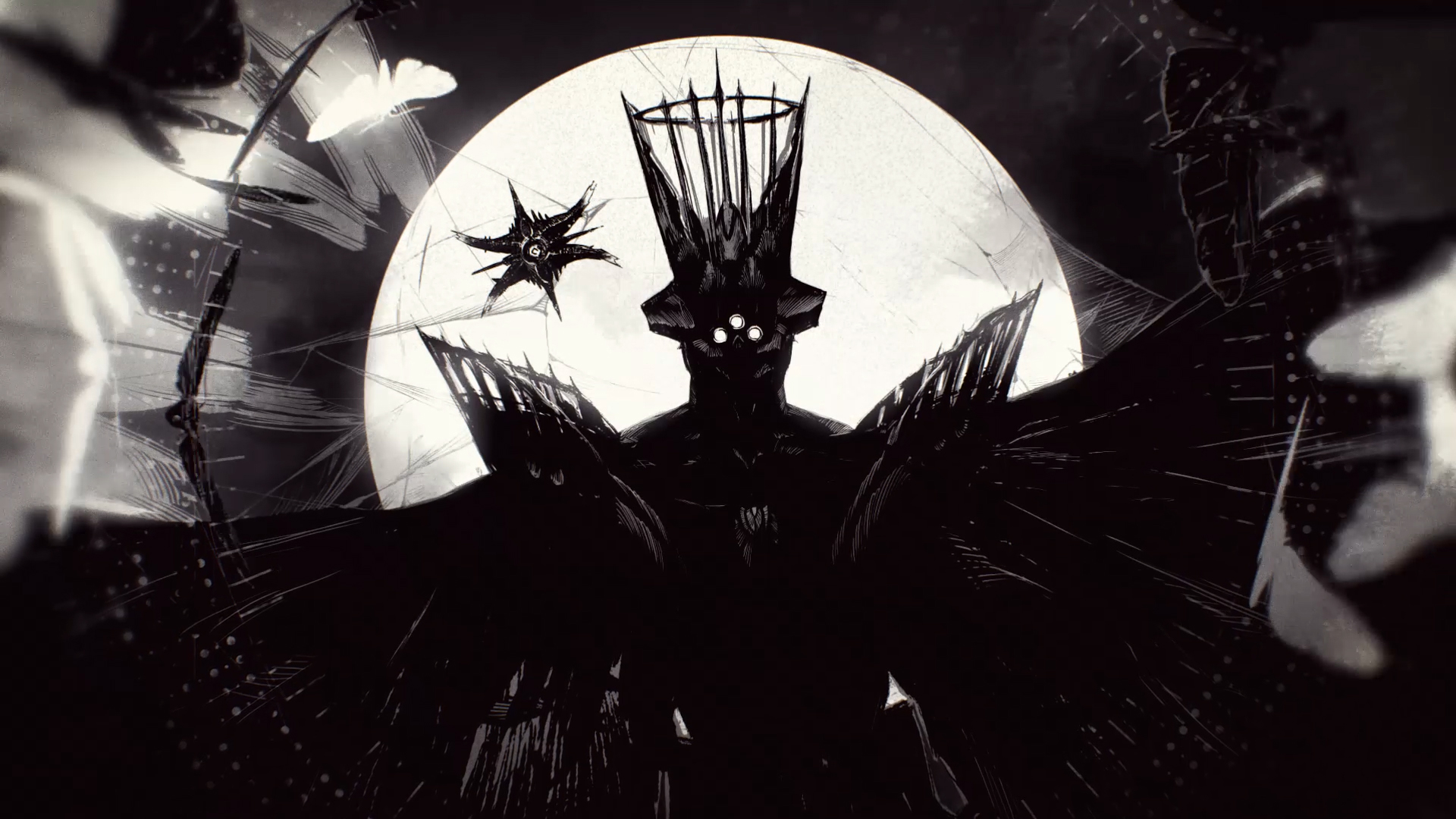
That being said, I cannot overstate how much I’m looking forward to playing the next three seasons to complete The Witch Queen Expansion. It started off with a bang and the story brings changes to Destiny 2 that were needed. There are a couple of negatives to The Witch Queen, particularly with the smaller map, which is severely limited compared to other areas. I’d have also liked to have seen the Hive Guardians utilised more often, as they only seem to be trotted out sporadically, but these are just minor points on a well put together expansion. If the remainder of the year continues in this vein, it’ll be hard for me to leave The Witch Queen alone long enough to play other games. Even as it stands, The Witch Queen Expansion is a recommended addition to Destiny 2.
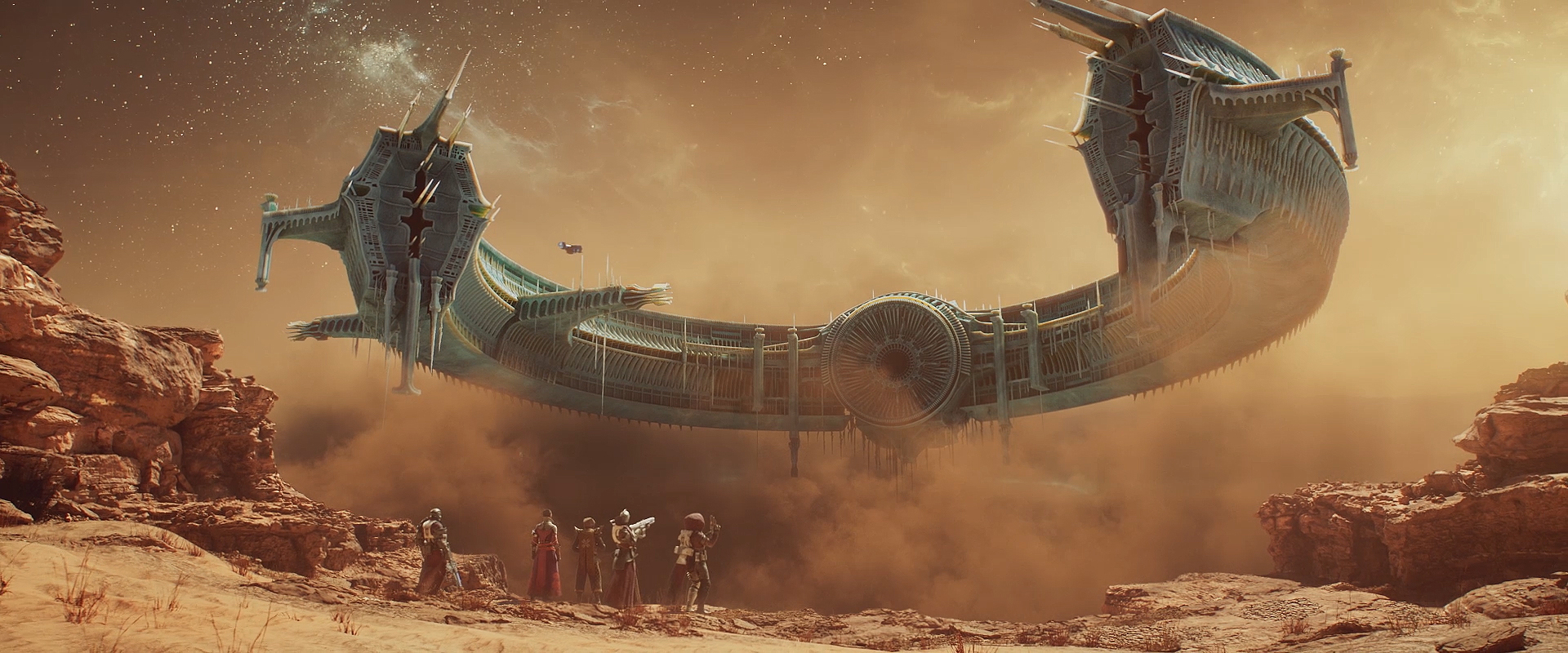

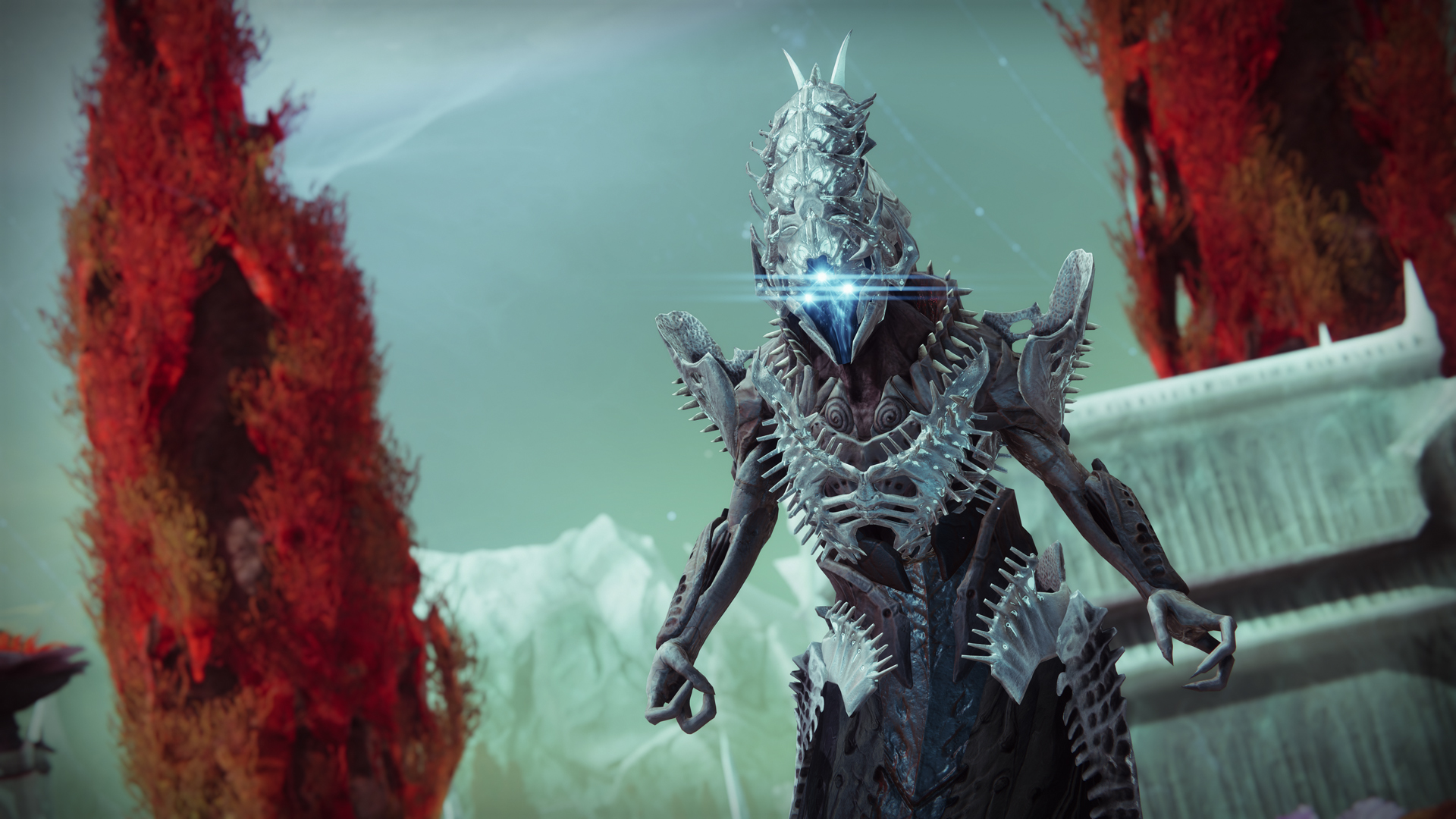

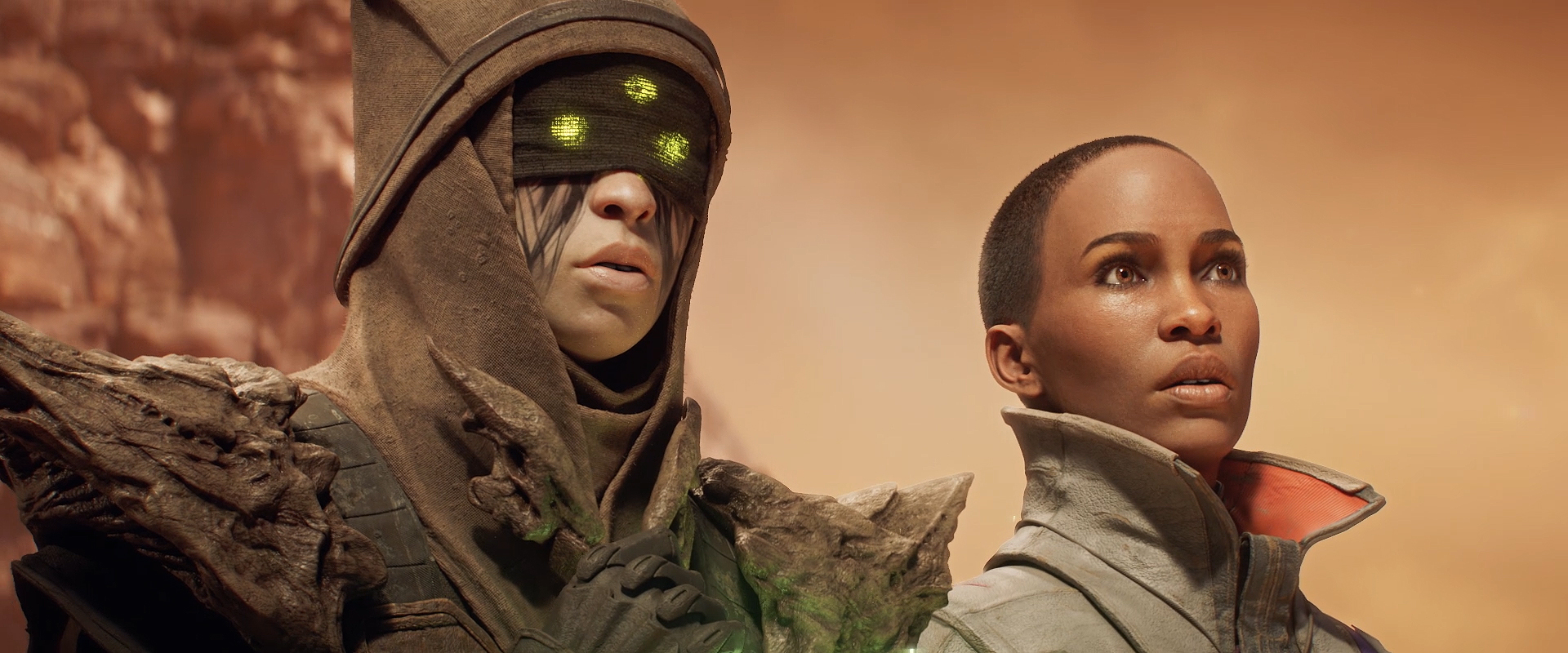
In the interest of full disclosure, the publisher provided VGamingNews with a copy of The Witch Queen expansion in order to conduct this review.
Thanks for taking the time to read our review. If you’d like to support us further, please consider buying us a coffee!
Destiny 2

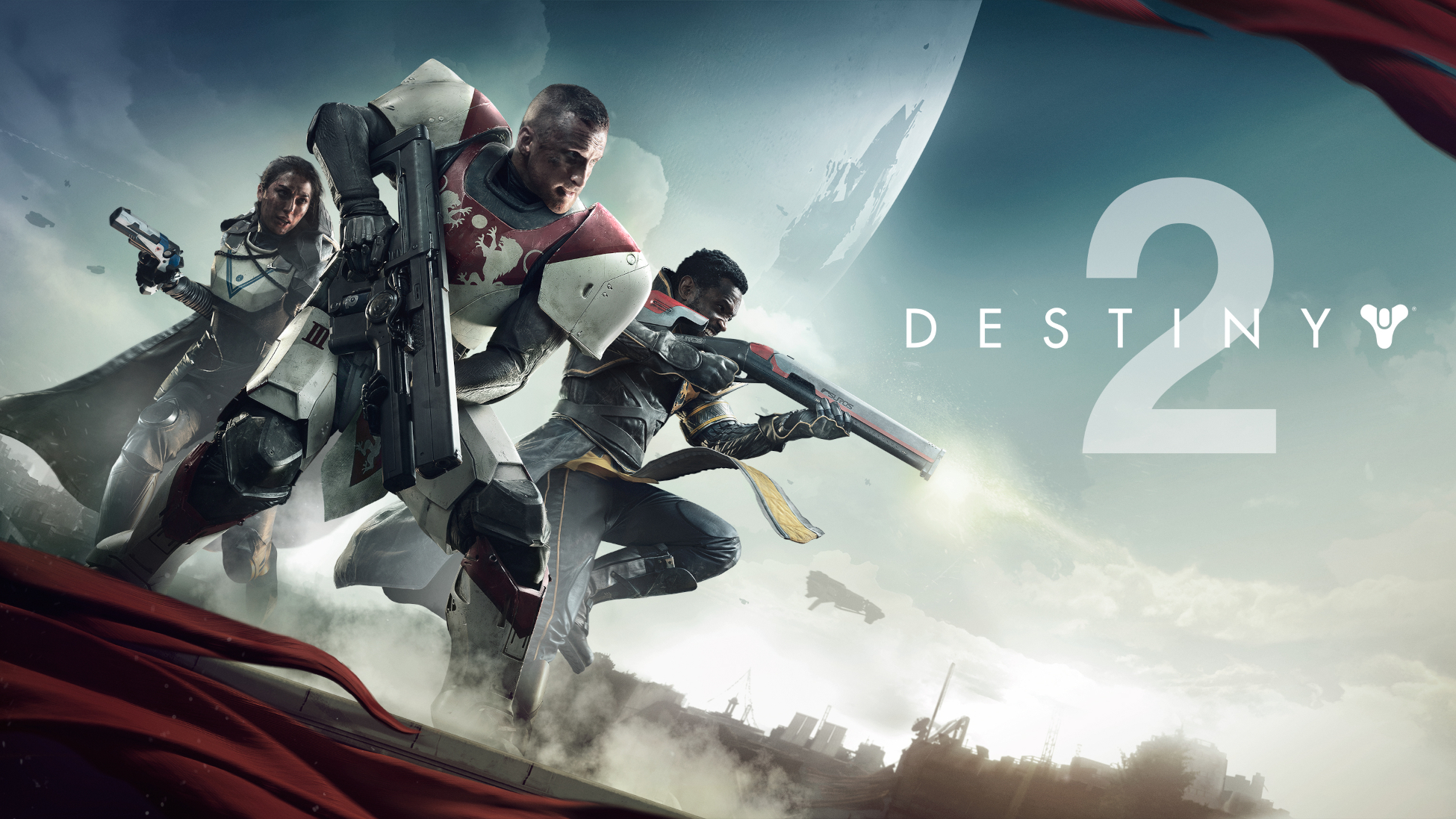
In 2007, after over a decade of working on the Halo franchise and being owned by Microsoft, developers Bungie decided it was time for a change. After completing their last Halo game in 2010, the team split from the Redmond company, becoming independent once more, and decided to leave their epic, first-person, futuristic space shooter behind, as they went in search of something completely different. Four years later Destiny, a futuristic, epic first-person space shooter was released, and while they might sound familiar on paper, this was a different beast completely. Fast forward to 2017, the team thought it time to release a sequel that managed to build on the previous game in every way.
Note from the Editor: As Destiny 2 is a live service game, we’ll be reviewing all of the expansions and what they mean to the overall game. Current reviewed expansions are found below:
At A Glance
| Scores | |
| Visuals | 7.5/10 |
| Sound | 7 /10 |
| Gameplay | 9/10 |
| Overall | 8 /10 |
| Positives | + Perfect difficulty curves + Beautifully weighted combat + Loads to do, for no cost! |
| Negatives | – ‘Vaulted content’ means original campaigns are gone – Menus are fiddly and complicated – Matchmaking modes not always available for solo players |
| Price (When Reviewed) | £0.00 |
| Overall Playtime (inc expansions) | 70 hours and counting… |
| Available On | PS5, PS4, Xbox Series X|S, Xbox One, PC |
Destiny 2 starts by explaining the Traveller – a huge white space-ball that has found its way to Earth and has chosen Humanity as it’s next target to imbue with ‘The Light’. This spurred on the Golden Age of Space Exploration and technological advancements the likes of which the human race has not seen since the Stone Age. Needless to say a few alien races didn’t take kindly to all of this and launched an all-out assault on Earth, completely decimating it. 700 years later and the fight for Earth has evolved. Alien nations from around the galaxy are constantly trying to destroy The Light and our solar system. It’s here where the fun starts…
Starting with a trek through the Cosmodrome, players, or Guardians as Bungie call them, are introduced to the world of Destiny 2. Joining in on the journey is a Ghost, a floating companion who serves as a guide and saves my soul if an enemy manages to shoot me dead. As the game ambles along I’m introduced to various characters who throw small missions and bounties at me to get a feel of the set up. Coupled with a live action war going on between real world players and their bug-like opponents, I thought this set up worked quite well. The game didn’t force me from one area to another like most tutorials, and instead I was left in a large open area to either follow the plot or jump in with other players and start shooting at my own pace.
The intro to the game in 2022 is a lot different to when the game first launched in 2017. Bungie has replaced the original opening section, which was directly impacted by the events of the first game, and replaced it with Destiny 1’s tutorial, and for the most part it’s OK. There is a lot of information to digest within the first dozen hours, like learning the menu systems, weapon management and game modes, as well as the story itself. It can be a little overwhelming to begin with, especially to people who are brand new to the game. My tip is to think of the game on a mission by mission basis and that way you won’t be as swamped by the heavy lore.
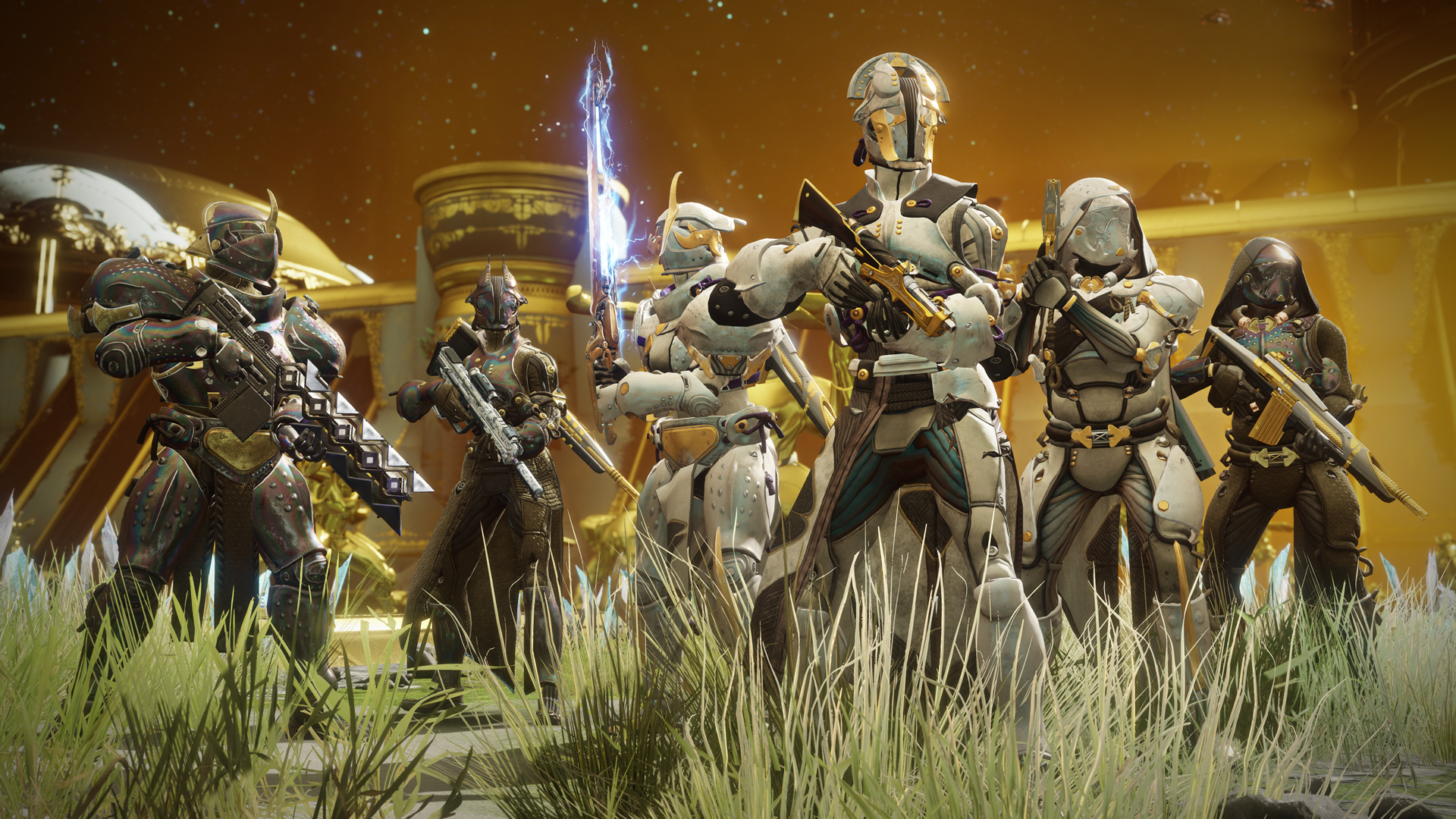
The plot revolves around the ongoing fight for survival, and the missions the Guardians undertake are key in bringing about the end of the war. As I zipped around our solar system, it was noticeable just how different the style of each environment was. Earth was a decimated place, not only littered with mechanical wreckage from wars past, but the planet had begun to reclaim the roads and buildings too, and were covered in creeping vegetation. All the while Europa (the frozen moon of Jupiter), was an isolated tundra; it’s sparse on the surface, but digging down revealed a sprawling network of caves where the Hive had taken hold. When exploring a planet or moon, it feels like you really are on that planet. Other locations were equally unique and, unlike arena shooters, are all surprisingly vast in scale. There is a lot of land to traverse throughout the game, and there are a few dead spots where there’s nothing to discover and no enemy spawn points, which was disappointing as these areas are just lifeless.
Given the post-apocalyptic setting, Destiny 2 presents itself very nicely, and this is mirrored in the enemy types too. The most common ones encountered were the Fallen – bug-type creatures who scuttle around the screen, ducking and diving for cover while shooting at you at every opportunity. Other types include the Cabal, who are brutish soldiers who look like Warhammer’s Space Marines with flamethrowers attached to every limb. The only criticisms I have in the looks department is that the enemy types don’t offer much variation; there’s only 3 or 4 variations of the six alien types so blasting wave after wave of enemies quickly becomes repetitive. If you’ve played Halo, chances are you’ll also get Destiny’s Fallen mixed up with the Covenant as they look almost identical. These are only small issues though, and certainly didn’t affect the fun I have blasting them to pieces.
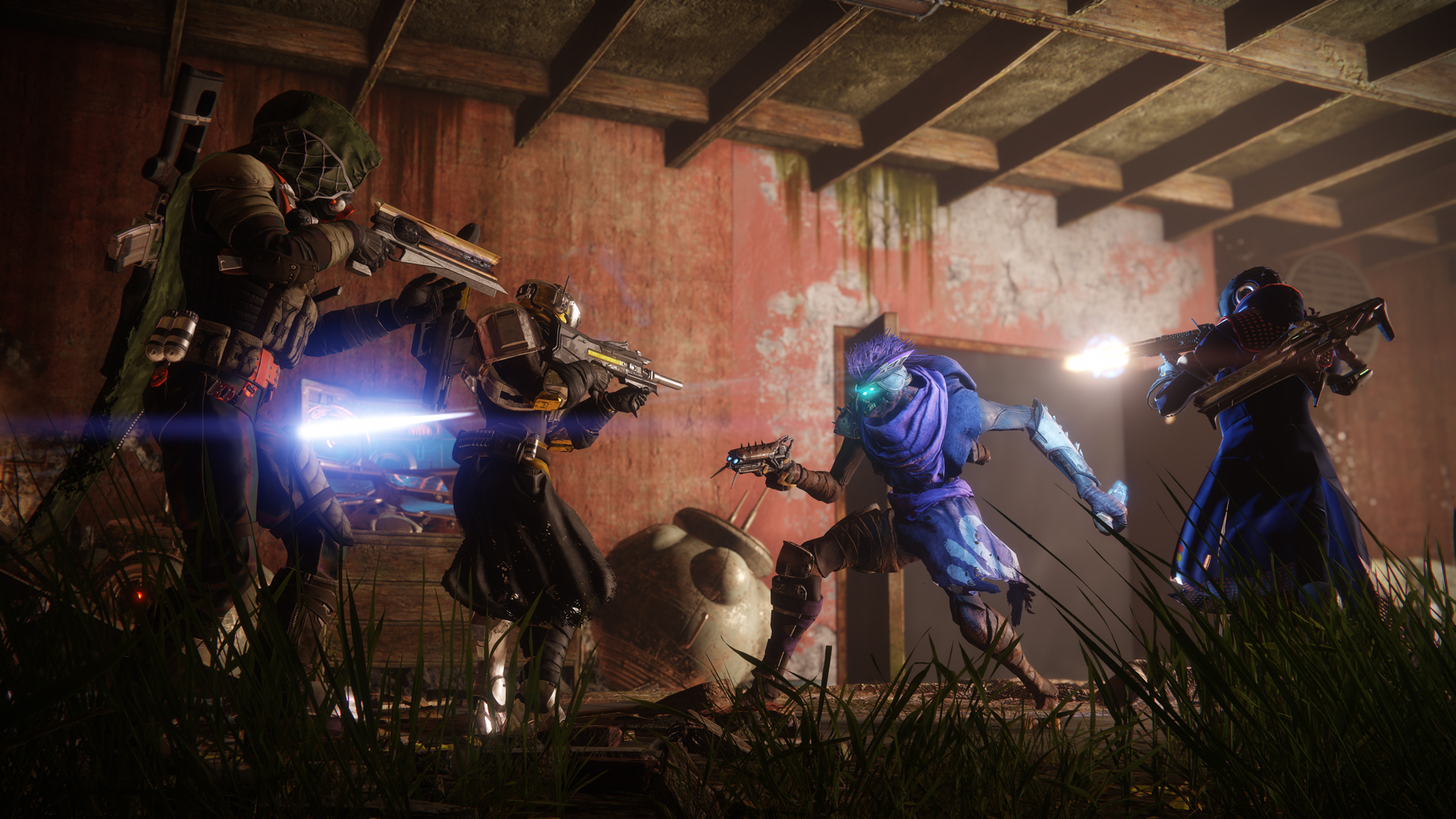
And oh boy is shooting fun in Destiny 2 – Bungie have absolutely nailed the shooting experience. The game feels responsive in hand; aiming down the sights of a side arm is a quick snap, and machine guns fire with a satisfying klak-klak-klak that makes me feel like John Rambo on his boat shooting at hordes of nameless goons. I wasn’t limited to just shooting either – with swords, bows and arrows and even a staff on hand to mix up the game – the combat is generally a lot of fun. Who you choose to be at the beginning will influence the different abilities and stats you get to play with, so whether your preferred playstyle is more acrobatic, or you prefer to be an immovable object, then you can alter your experience accordingly.
It’s not all fun and shooting in Destiny 2 though, as the menu systems are muddled and confusing to the point of annoyance. The menus are clunky, with three separate ones mapped to two different buttons. This kind of rooting around in menus should be limited to management sims and 1980s text based adventures, and while it’s understandable Destiny 2 needs a place for equipment to be used, it can sometimes feel like too much time is spent opening up the wrong menus rather than shooting aliens in the face.
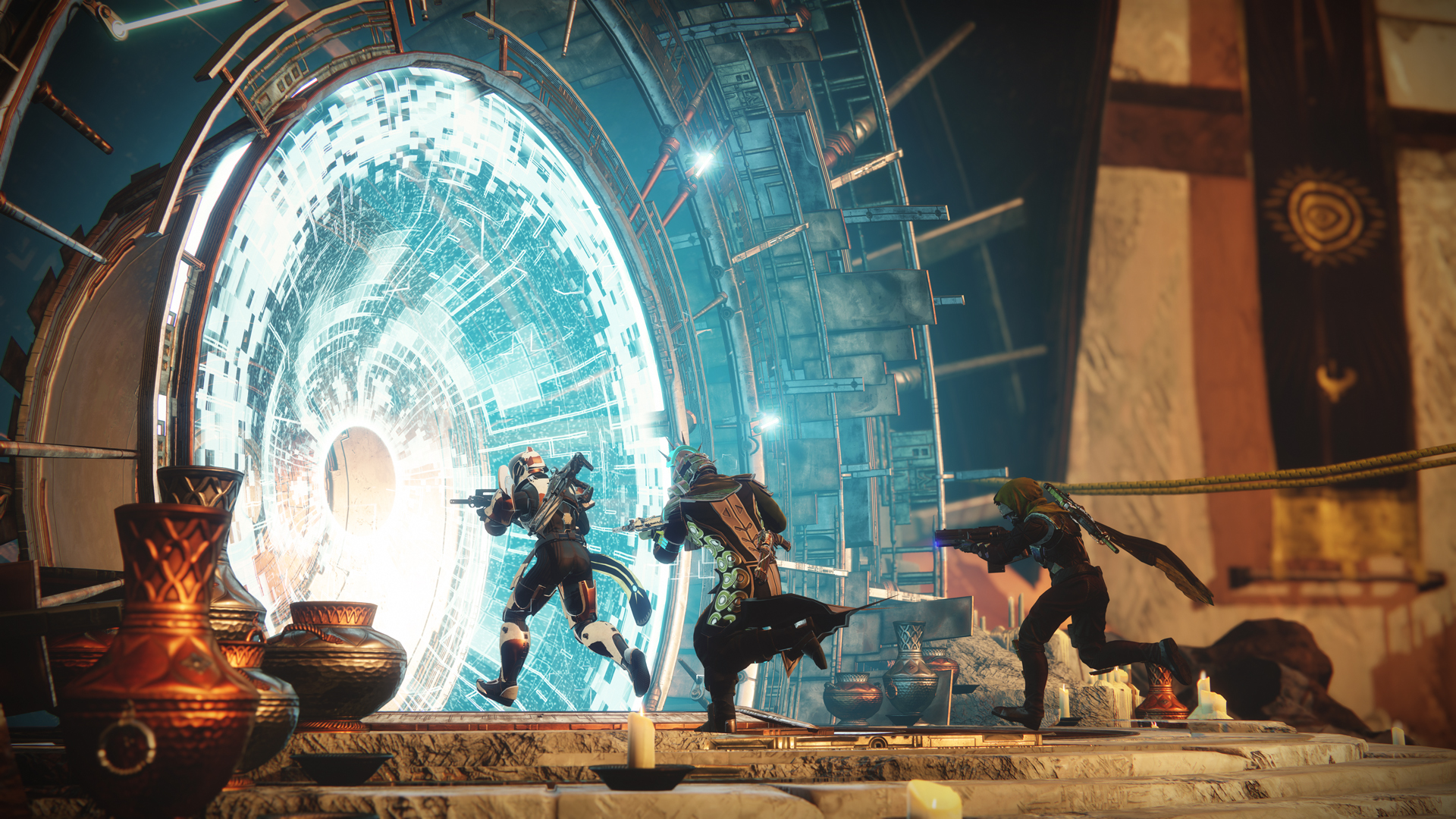
Menus aside, the Destiny 2 experience is largely positive and has a range of enjoyable gameplay mechanics to get to grips with. The game can be played in single player modes (for the most part), but this is an MMO, so teamwork is the key to success. The multiplayer modes are vast and all encompassing, from traditional deathmatch-style 3v3 competitive tournaments to six player fireteams, who collect together to take on various challenges for a chance to nab some fancy gear. While multiplayer modes can be tackled solo it’s not recommended for the raids, which give you the best-of-the-best items. It’s also worth noting that not all multiplayer modes are matchmaking ones, and to get the absolute best out of every area of the game, you’ll need at least two other friends (or two randos from forums if you’re into that kind of thing) to play with.
The snappy and fluid controls of Destiny 2 are the standout features and work like a dream. It elevates the game to a point where the action is never overwhelming enough to make you want to throw your controller down the nearest black hole. Even if you prefer playing solo, there are hours upon hours of content for you to enjoy. The game treads a line that keeps the game challenging yet accessible, so players of any skill can join in, and while Destiny 2 can feel like a Halo knock off at times, Bungie certainly delivers a AAA experience at a price that’s hard to complain about.

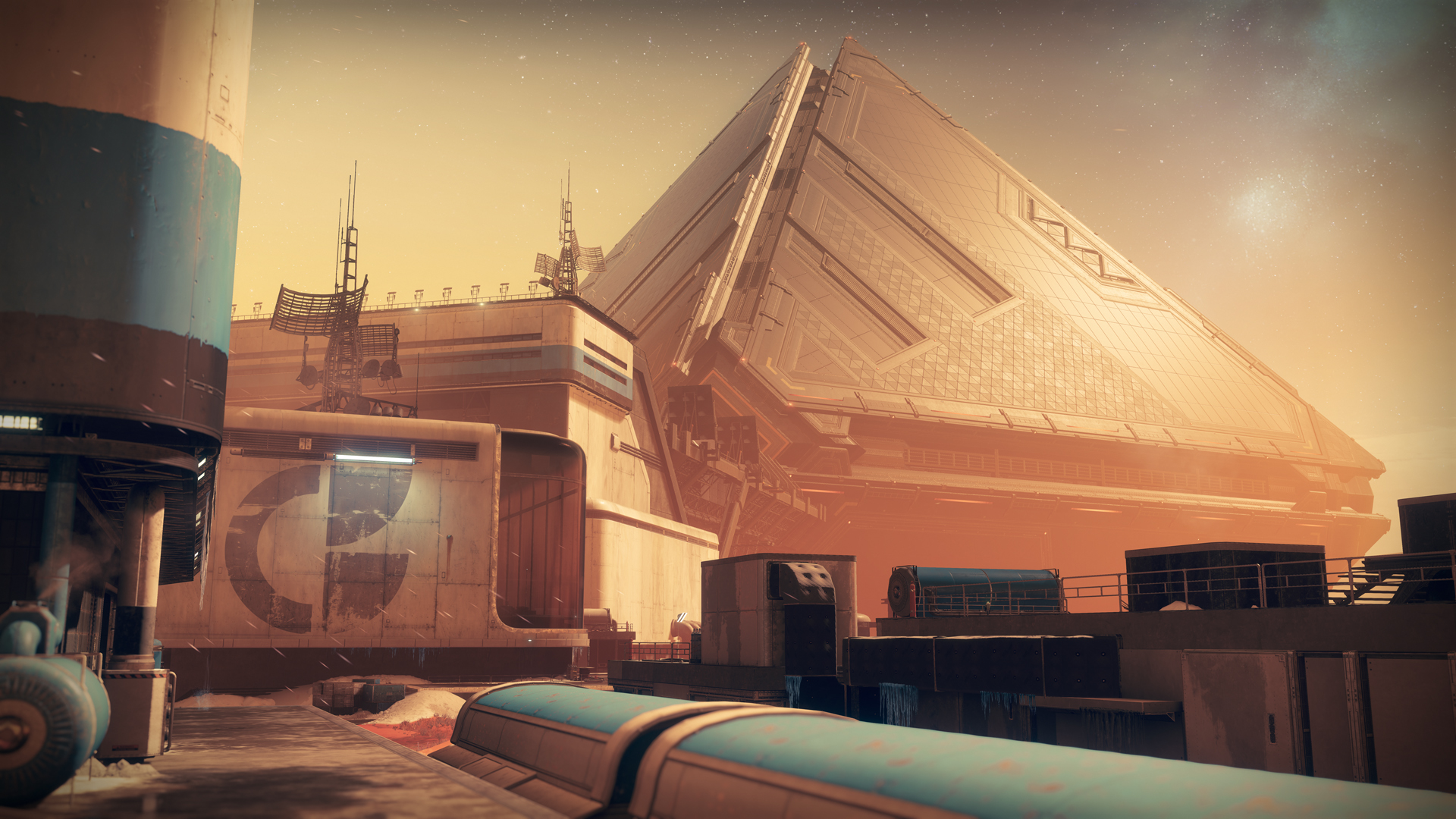

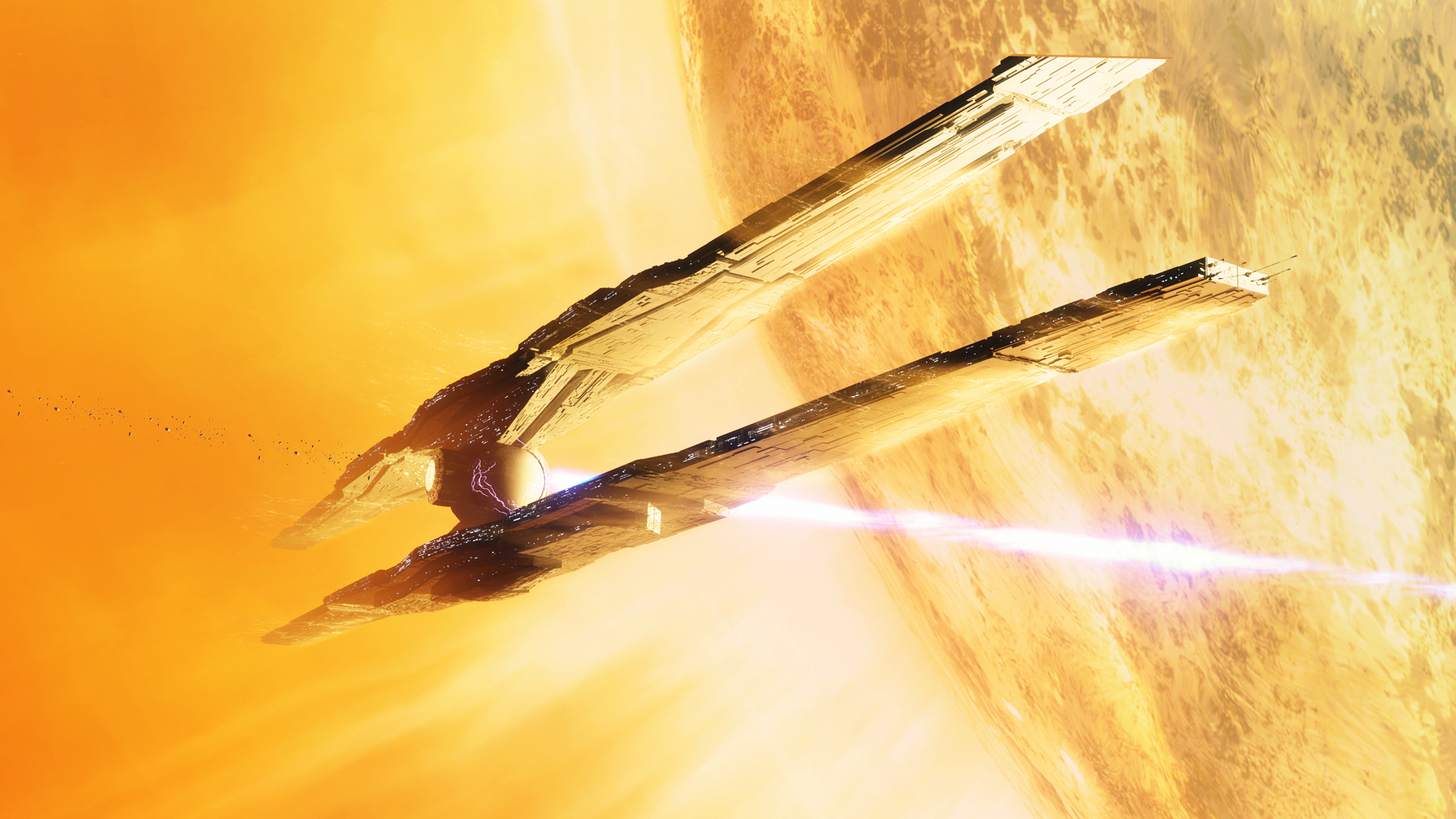
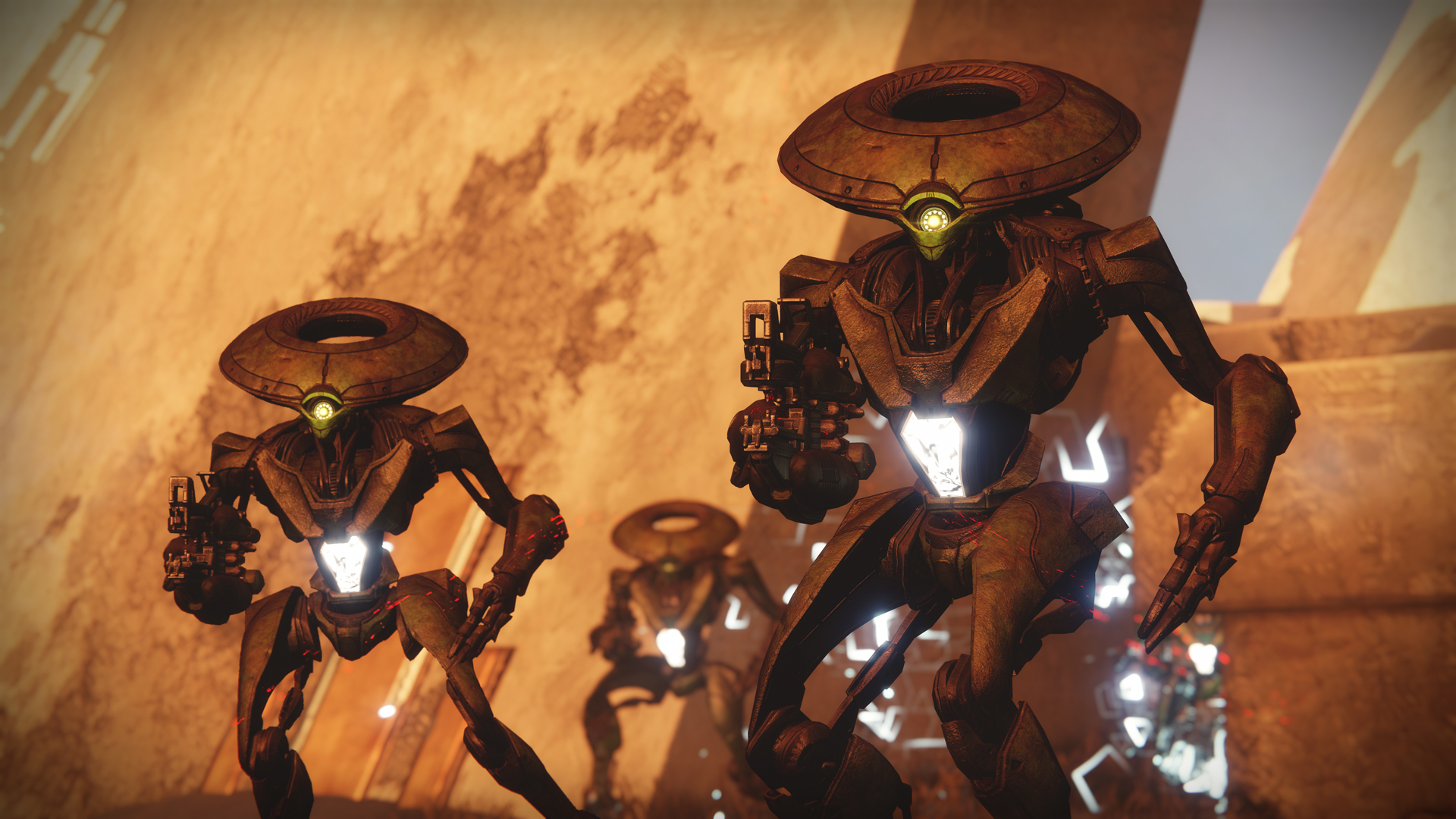

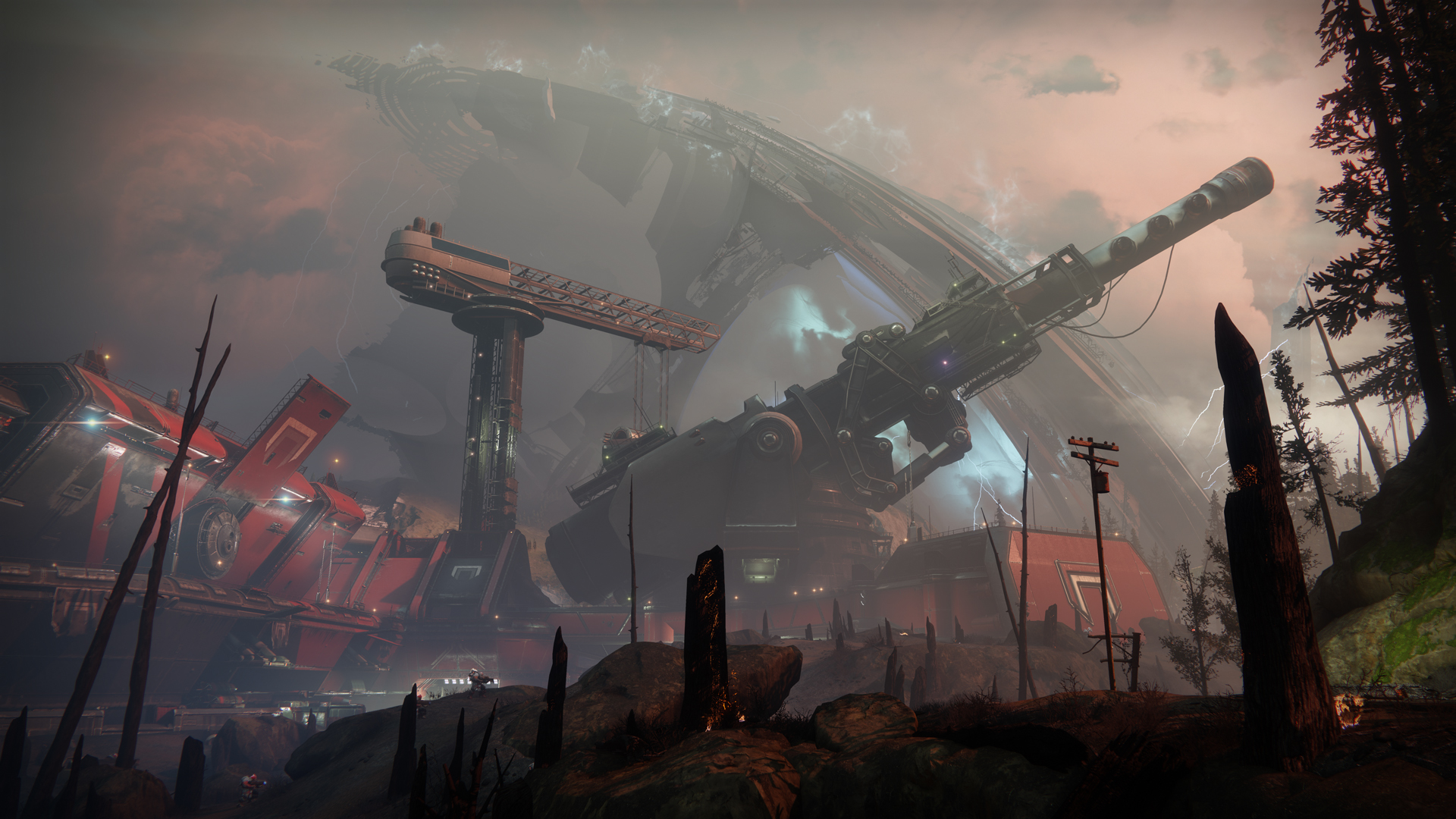
Thanks for taking the time to read our review. If you’d like to support us further, please consider buying us a coffee!
The Dead Tree of Ranchiuna
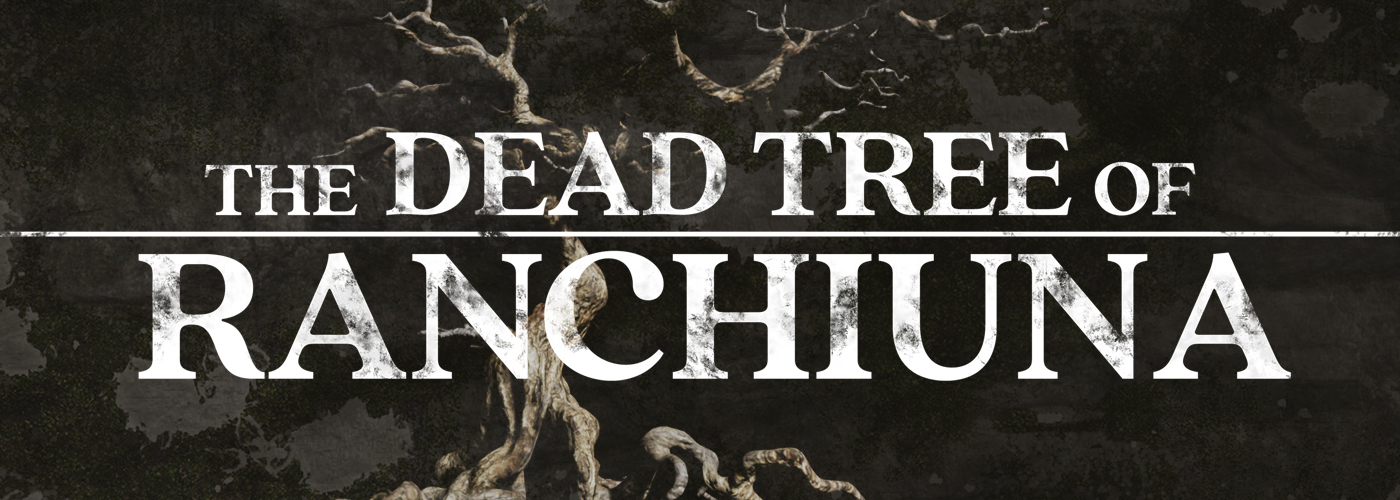
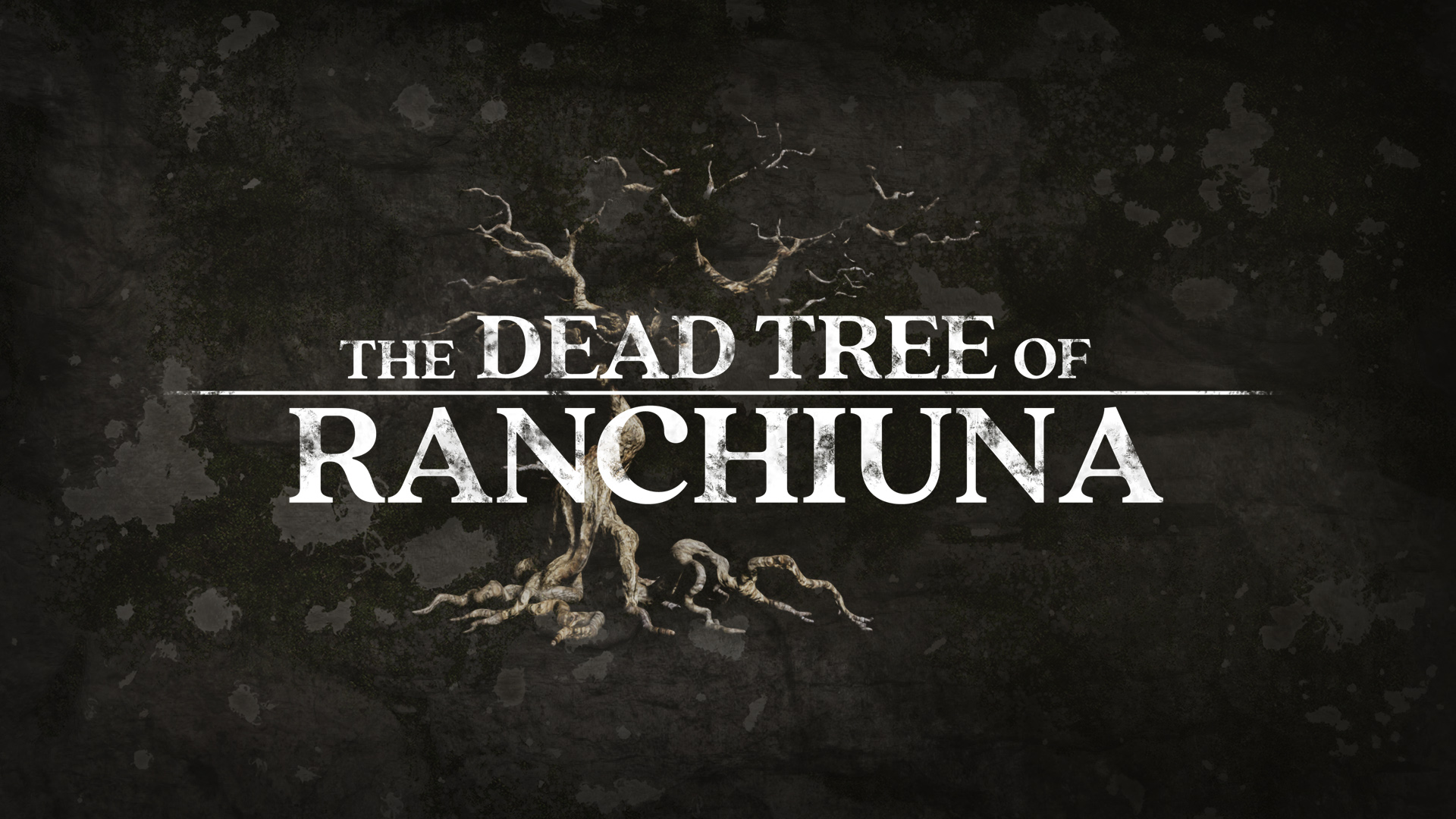
Much like last year’s foray into the world of visual novels, the walking simulator genre largely passed me by until I played What Remains of Edith Finch, and it was rather good. For those who don’t know, a walking sim forgoes the traditional exploration found in most video games and instead focuses on leading the player through a well written story that’s usually capped off over a single rainy Sunday afternoon. Sometimes there are elements of puzzle solving or perhaps there’s a little exploration, but the key selling point is always the plot. The Dead Tree of Ranchiuna from atmospheric developer Tonguç Bodur is another entry in the easy going genre, but does it live up to the highlights in this niche, or even his other works…?
At A Glance
| Scores | |
| Visuals | 8 /10 |
| Sound | 6.5 /10 |
| Gameplay | 2.5 /10 |
| Overall | 4 /10 |
| Positives | + Really good soundtrack + Pretty visuals + Auto walk for when you just can’t hold a control stick |
| Negatives | – The tale doesn’t make much sense – Lasts an hour – ‘Puzzles’ in the loosest sense |
| Price (When Reviewed) | £7.99 |
| Our Playtime | 2 hours |
| Available On | PS5, PS4, Xbox Series X|S, Xbox One, Nintendo Switch, PC |
The answer in short, is unfortunately, a resounding “no”. The Dead Tree of Ranchiuna tells the story of a young man who returns home from the big city after his university course has finished. The narrator starts by explaining how exciting it is to come home after such a long time away, but on arrival finds no one is there, just empty houses and an ominous tree. It seems the villagers have all left their homes due to some unfortunate event; in fact the only things of note when you arrive are some ghostly wisps of colour that pulsate as they talk, seemingly to represent the memories of the villagers, and during the course of the game they start to unravel the story in more ways than one.
The Dead Tree of Ranchiuna drops you right into the story, and after a brief introduction by the excellent narrator, I found the aim of the game is to simply follow the aforementioned spirits. They vaguely guided me on my journey, and as I progressed, the problems with the game also came into focus. What starts out as a nice visual jaunt turns from an ethereal fact finding mission about what happened in the village and ends up being a pile of gibberish that revolves around a dark event, lost love, and possibly a stolen toy.
After two clear playthroughs, I’m still not 100% sure on what’s going on, and neither it seems is the narrator, as he flicks from the standard rekindling of love to a tale of revenge seemingly at random. I think I grasp the main concept, but it took much longer than the game lasted to work it out. An example of the muddled story is shown with the disembodied spirits as they discuss what pranks they should play on someone. Just as that conversation was done, the next time I saw them (literally rounding the next corner), it was a month later and they were all laughing about what a success it had been. The narrator doesn’t help matters either, as he’s either talking about events that unfold later in the game or speaks disconnected waffle that has no bearing on anything relevant. It was all rather disappointing as what I think was trying to be told could have been so much better if there had been a longer and more thought out script.
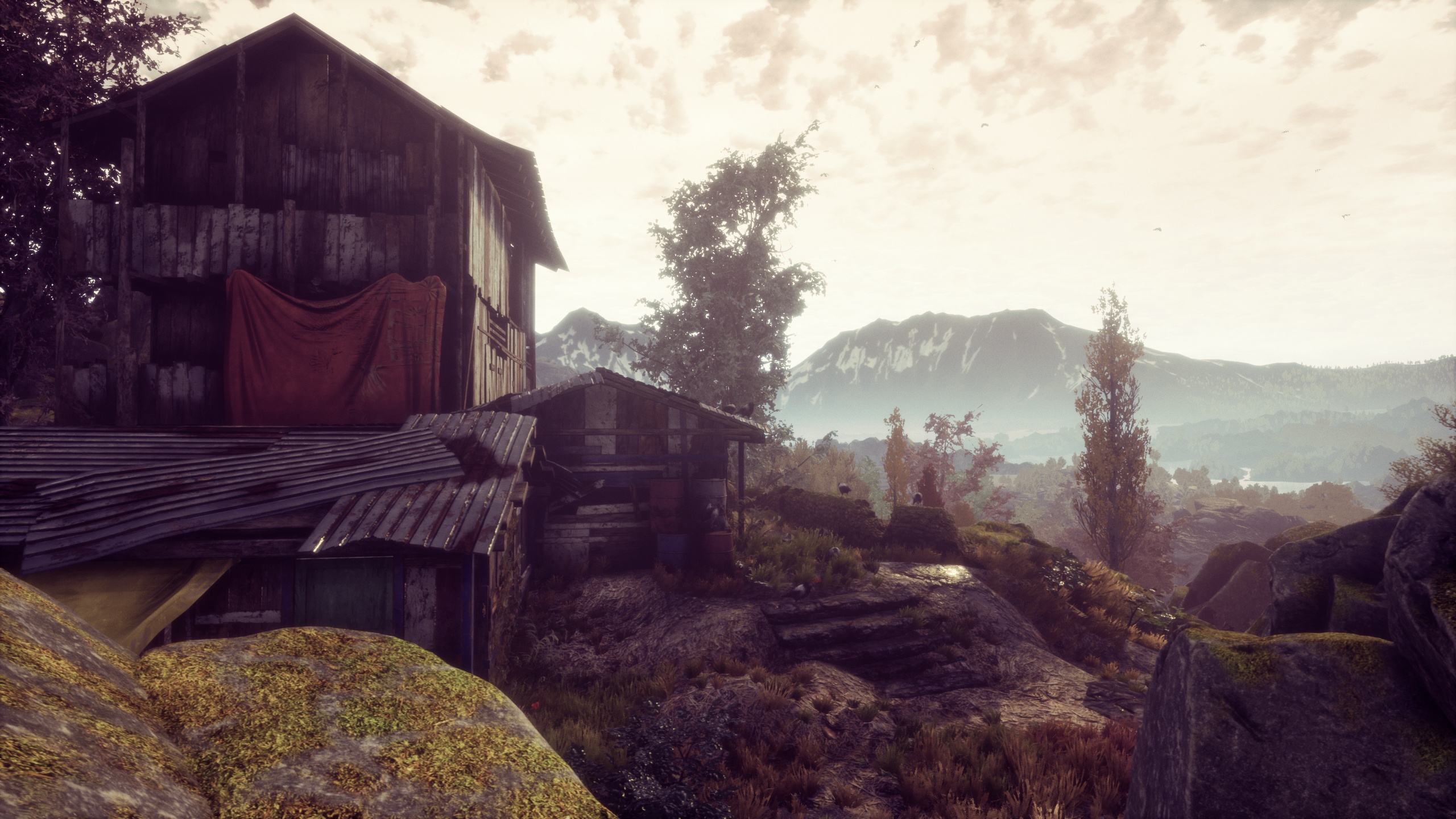
As it stands, The Dead Tree lasts around an hour and by the end, I was happy it was over. I think some of the negative experience also stems from the fact that the game is a very literal walking simulator, and aside from the occasional “puzzle” (read: flipping a switch to open a gate), there was nothing to it. An auto-walk feature is even built into the control scheme, which I can only imagine is for someone who wants to make a cup of tea but also comes in handy for those of us who doesn’t want to sit through 45 minutes of muddled storytelling. To Bodur’s credit, there is some post-game content that involves picking locks to discover more history of the village, but this should have been incorporated into the main story to give it some variance.
Where The Dead Tree comes to life is definitely in the audio department. The orchestral music swirled around the mountain in a peaceful and unimposing manner, and would rise and fall depending on the actions that unfold on screen. The voice acting though is a little more miss than hit, with the dreamlike spirits having awful dialogue to speak that’s been delivered with more cardboard than an Amazon delivery. It’s not all bad though, the narrator speaks with such vigour that I couldn’t help being pulled in, no matter what pretentious, nonsensical words were actually coming through the TV speakers.
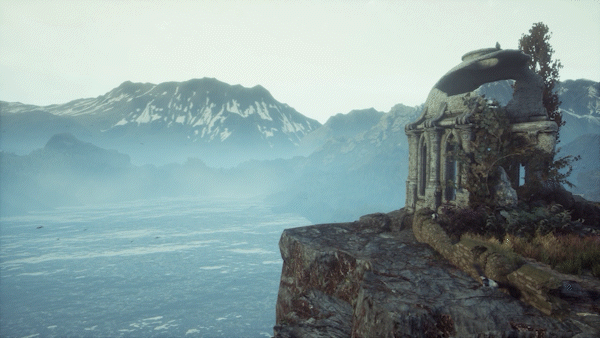
The soundtrack isn’t the only thing The Dead Tree has going for it, the game is also really lovely to look at. The mountain range is vast, with a wide field of vision and is absolutely beautiful to take in, especially coming from the high resolution output from the console. The village, though sparse, has a degree of detail on the buildings that even some triple-A studios wouldn’t think of. If anything, the visuals from the one-man developer looked a little too good. This is because the game employs a tactic of asset flipping; effectively using free assets available as a perk of using the Unreal Engine. It’s a practice that allows a creator to use generic components provided without having to build them from scratch. This might erk some pickier gamers as Tonguç Bodur has only rearranged some existing buildings, landscapes and characters and hasn’t crafted them from the ground up, but I’m personally all up for this method of game development. It would be like seeing a contestant of the Great British Bake Off create a visually stunning bake that tasted terrible, and dragging them over the coals that the flour was shop bought instead of homemade.
But where The Dead Tree excels visually and in the sound department, it is a shame about the rest of the experience. Don’t get me wrong, I desperately wanted to like The Dead Tree of Ranchiuna; from the opening of the game my senses were firing from the visual treat on my eyes, and when the narrator started telling the story, I could feel the beginnings of an exciting tale. But it wasn’t long before the sheen from such a powerful first impression began to fade. The story tries to be cohesive, but it quickly descends into a dark tale revolving ostracisation and finally slides into something so far-fetched it completely ruins the experience. The short play time doesn’t do the game any favours either. Clocking in at around 45-60 minutes long, The Dead Tree felt as if the original story was too long and cuts had been made, leaving a terribly short experience where the plot jumped all over the place, and left me feeling that the game I was finally offered dragged on longer than it could have.

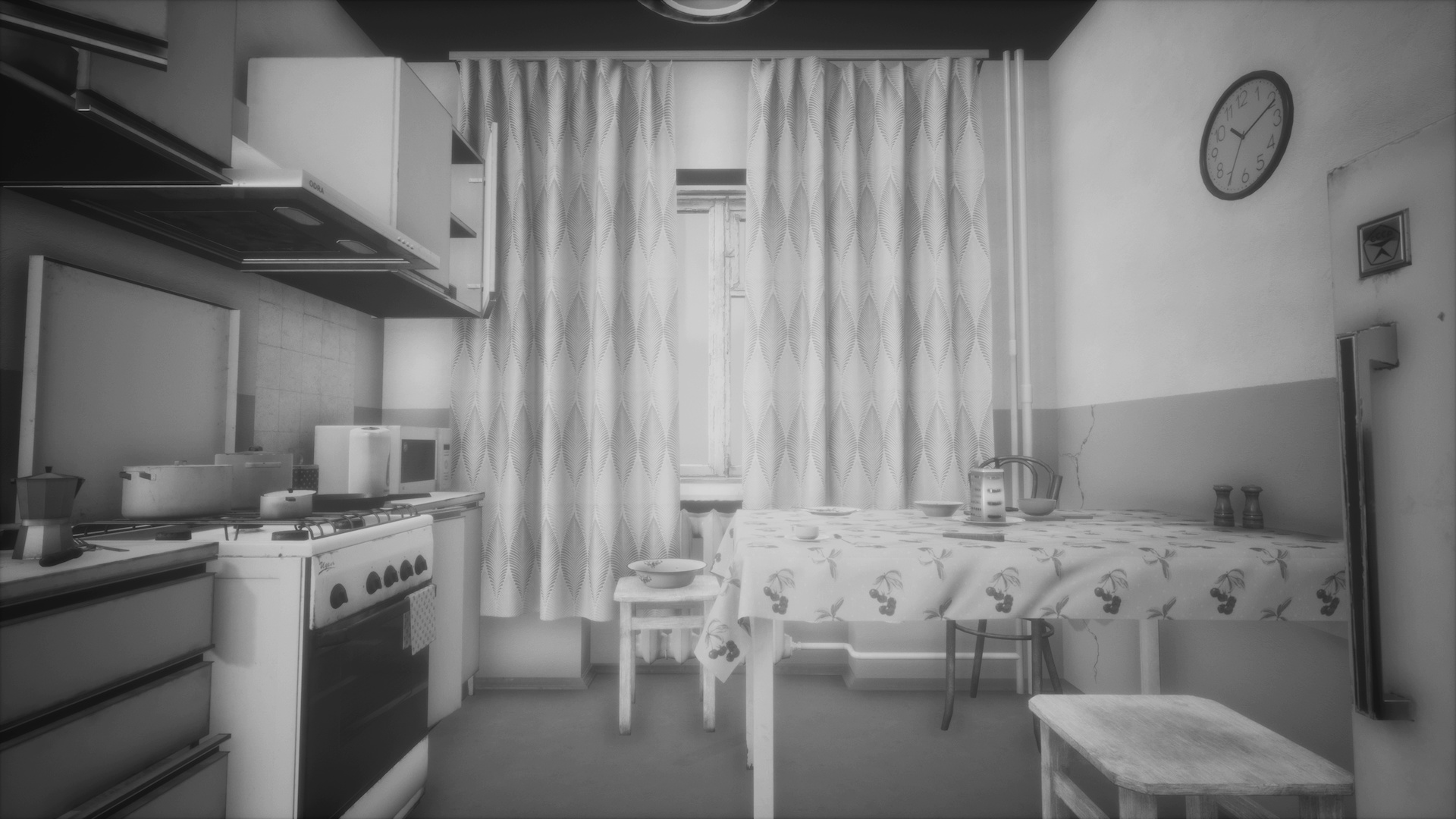
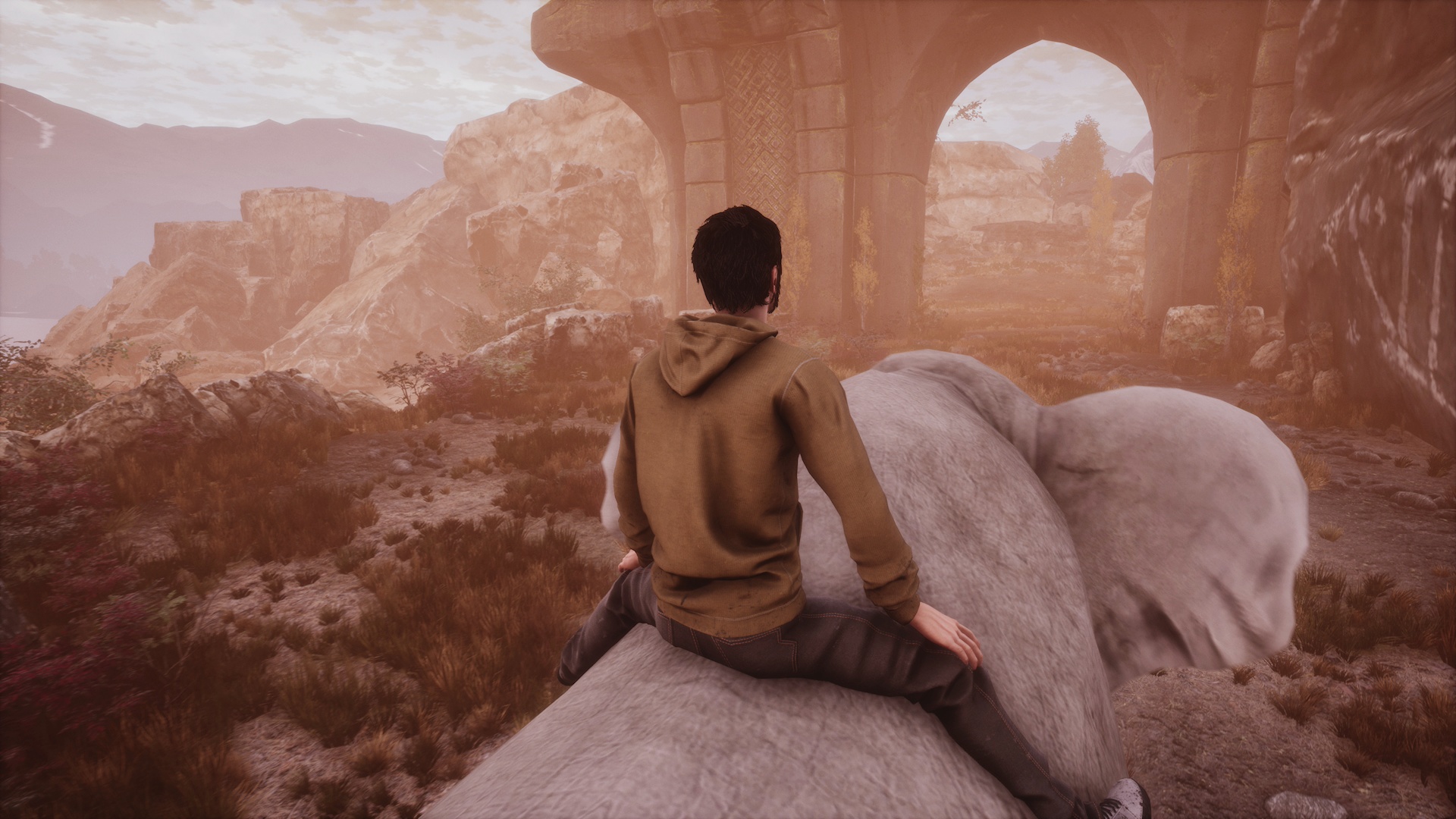
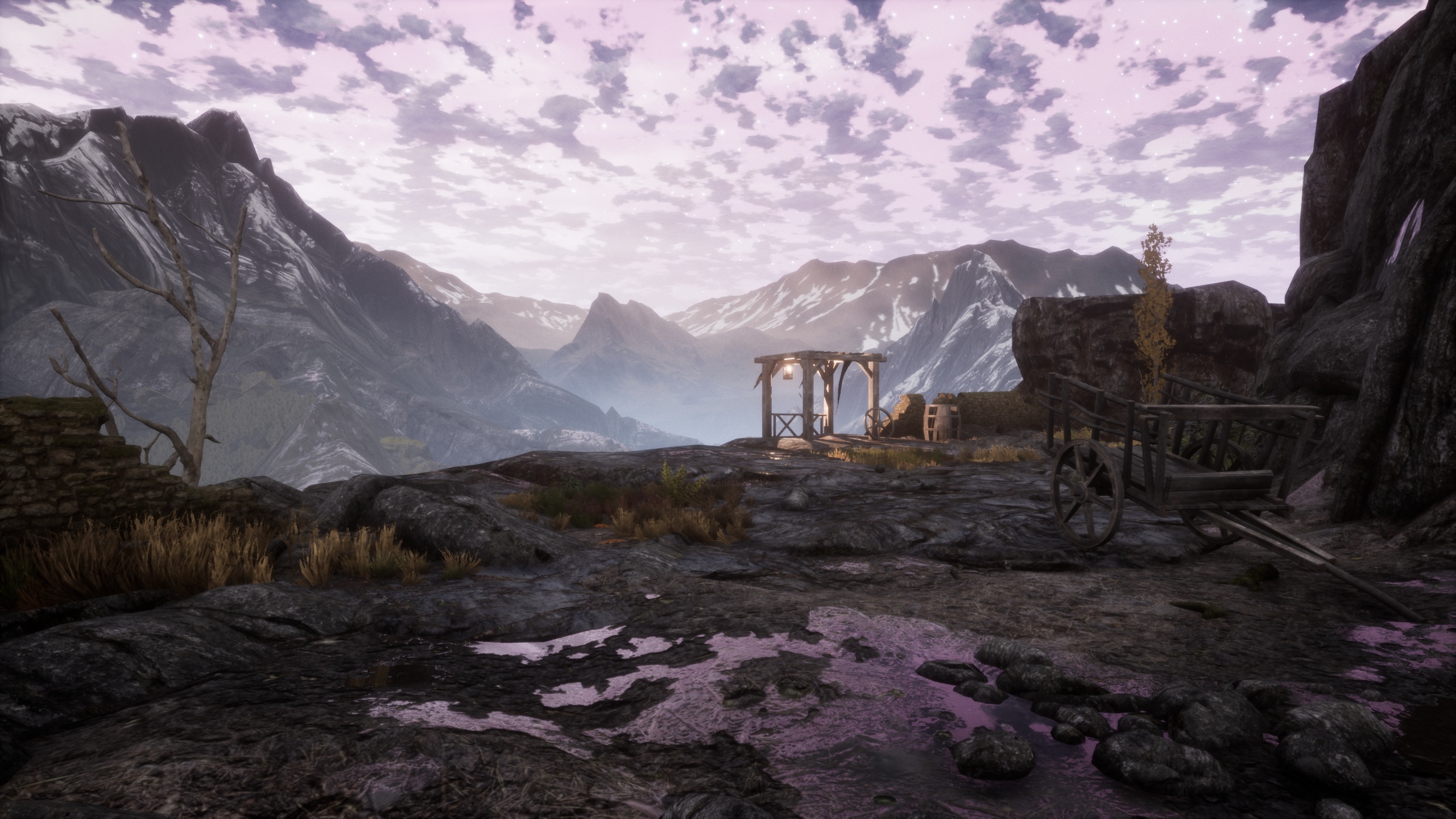
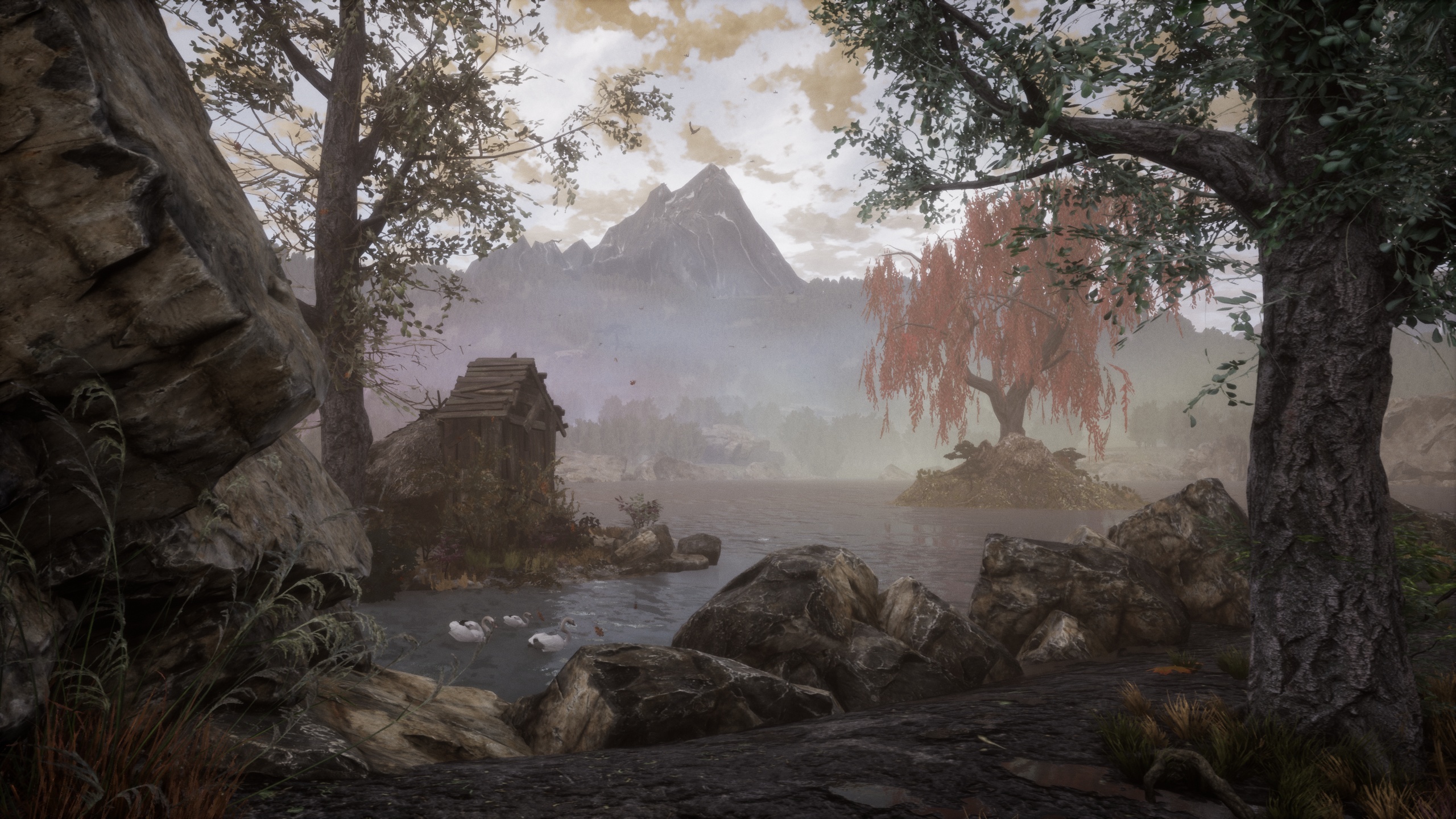
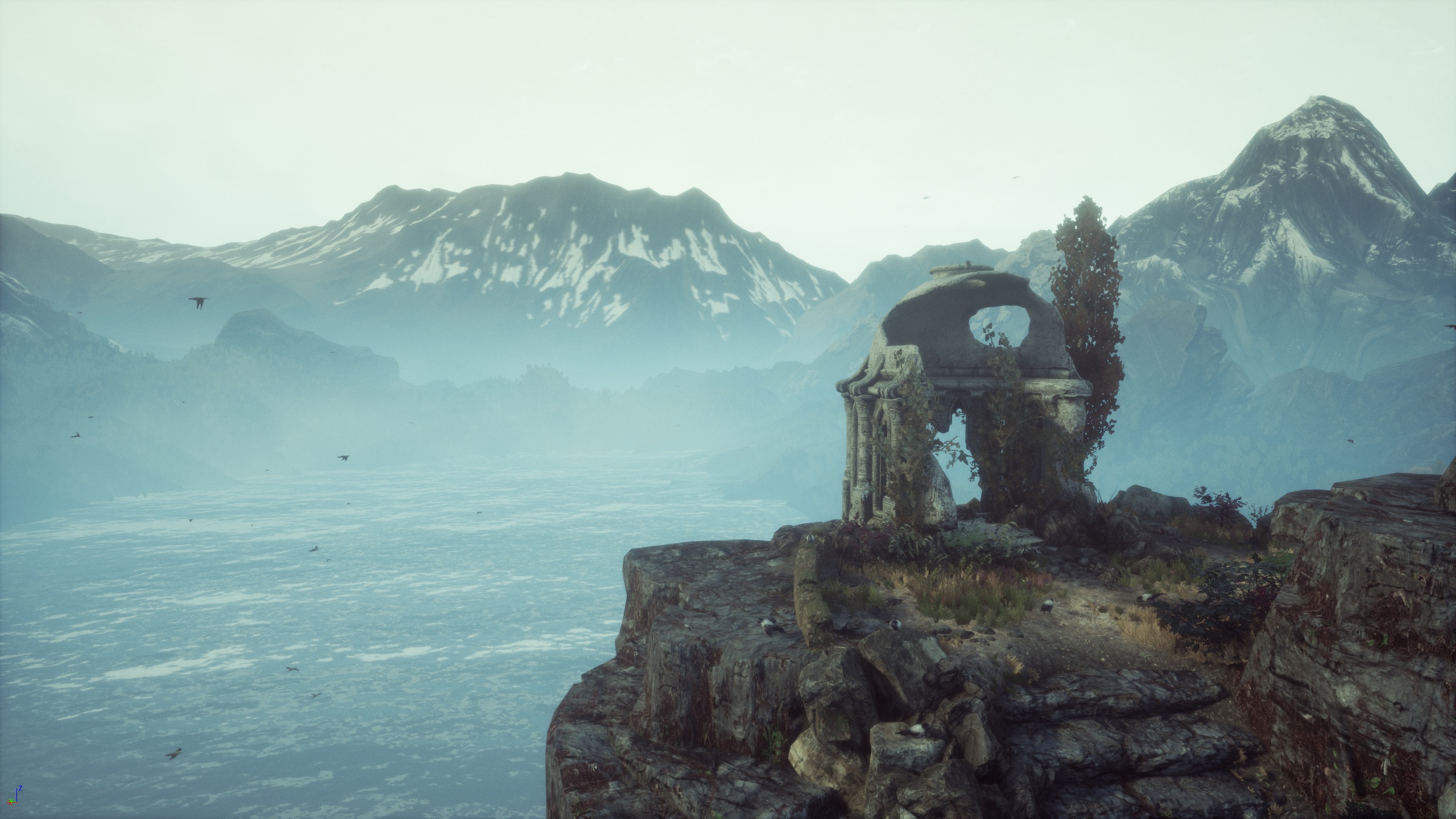
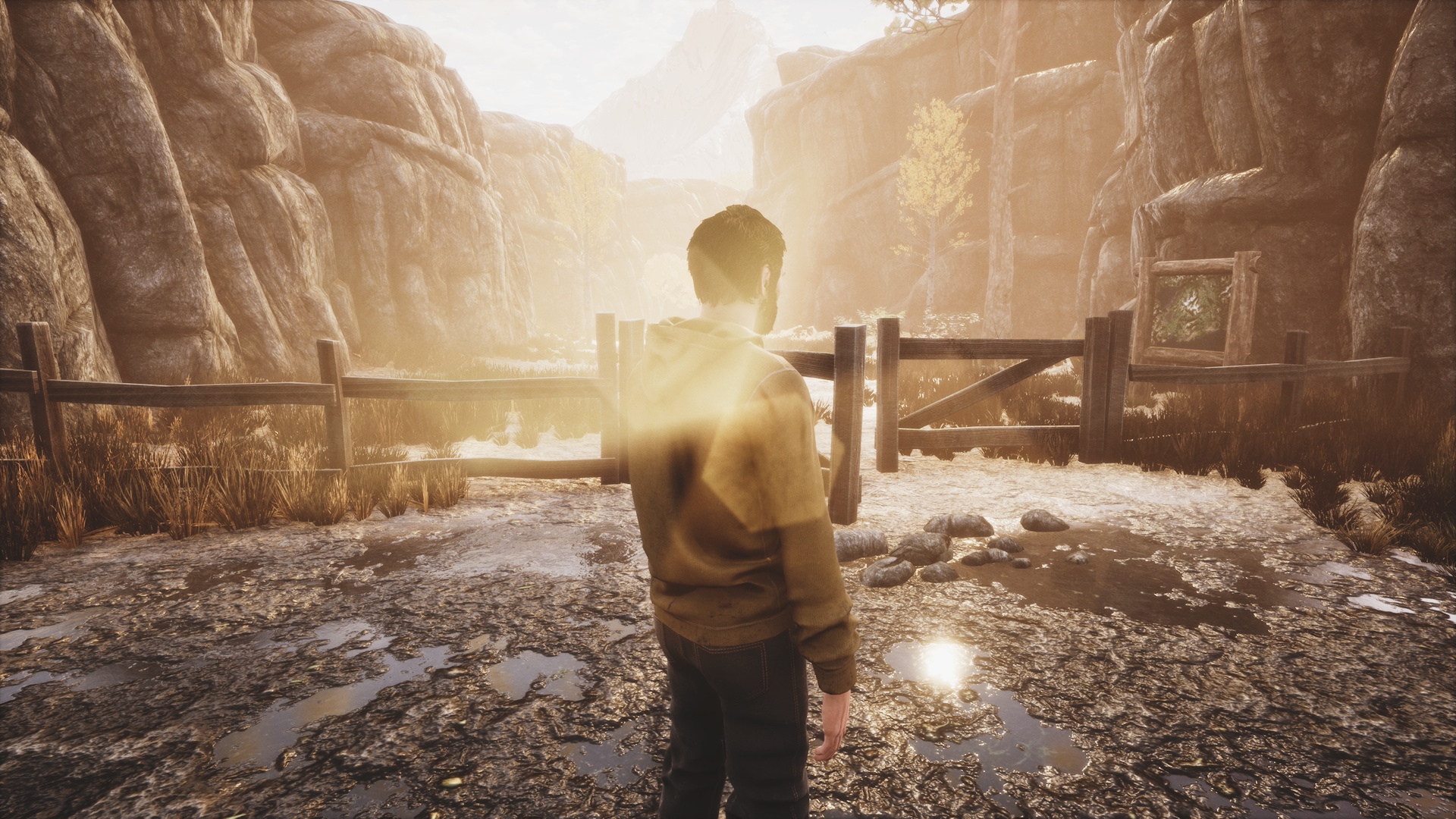
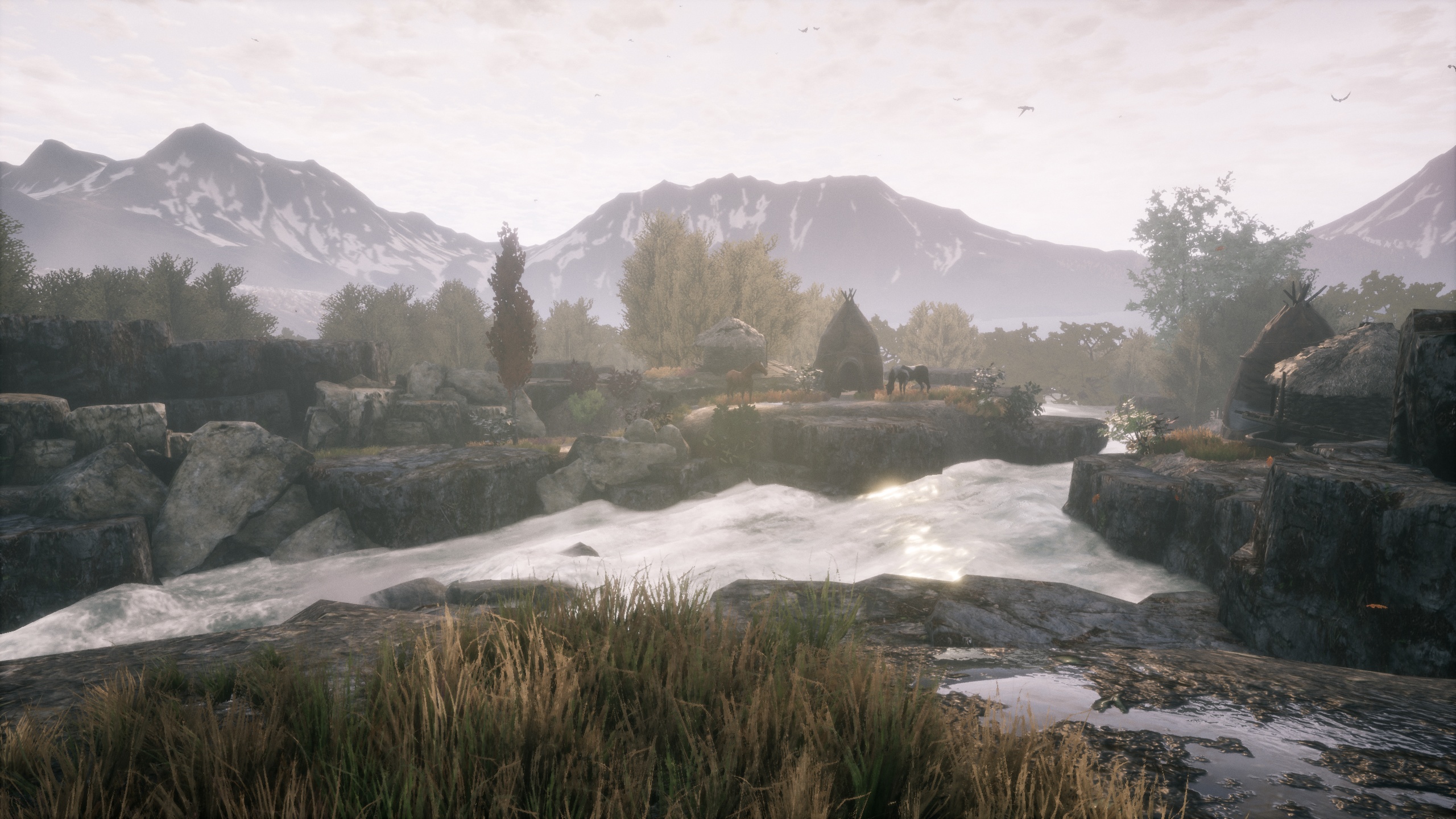
In the interest of full disclosure, the publisher provided VGamingNews with a copy of the game in order to conduct this review.
Martha Is Dead
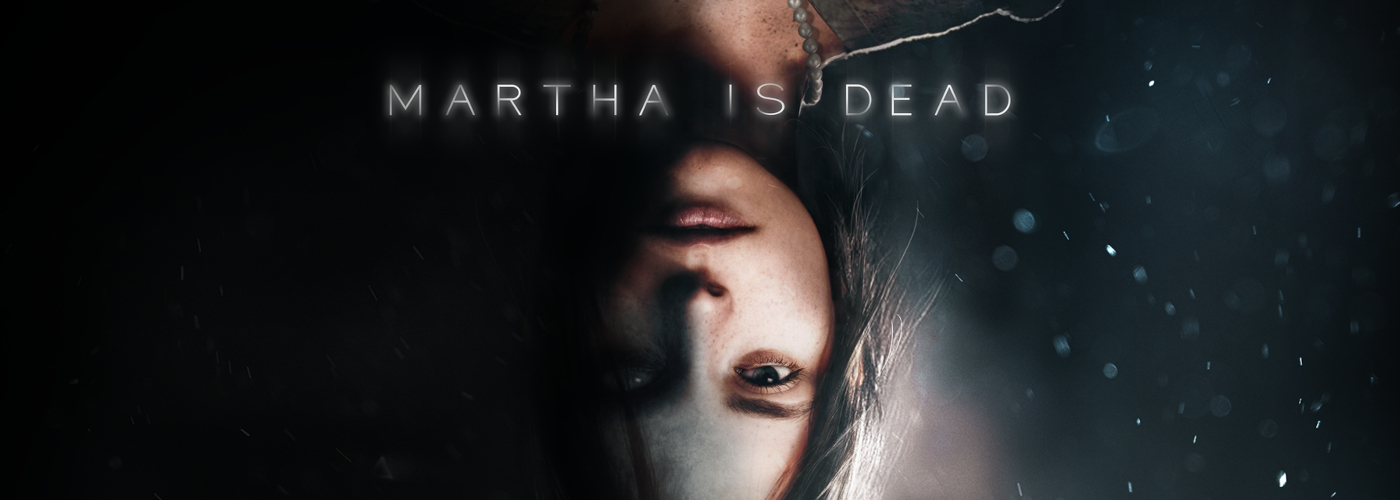
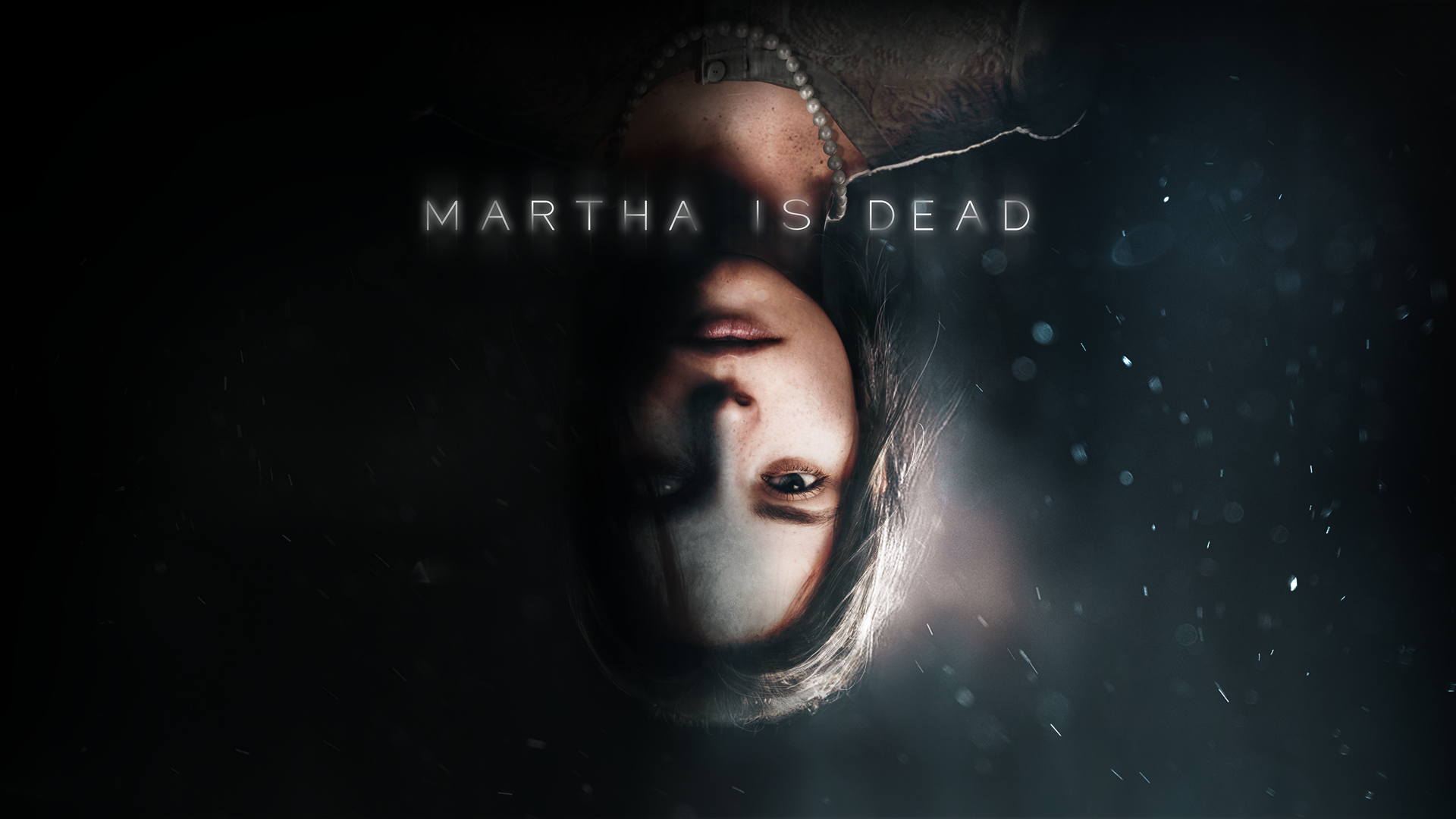
Entertainment of any medium where the title tells a story is always interesting to me. Netflix pulled me into their latest drama, The Woman in the House Across the Street from the Girl in the Window, simply because the plot was right there in the heading; there’s no faffing about with an obscure title like A Clockwork Orange, that has neither clockwork nor oranges in it. A good title that (as those old Ronseal adverts used to say) “does exactly what it says on the tin”, is exactly what’s needed in today’s world. Martha is Dead is no exception to this marketing ploy; there’s no spoilers or shocks to find out that Martha is indeed dead in the game, and the purpose isn’t to stop her from dying, it’s to find out who and why.
At A Glance
| Scores | |
| Visuals | 9/10 |
| Sound | 8/10 |
| Gameplay | 8/10 |
| Overall | 8/10 |
| Positives | + Dark, atmospheric story + Visually stunning + Multiple options to explore |
| Negatives | – Unsettling scenes, not for everyone – A fair few game crashes – Cheap dream sequences |
| Price (When Reviewed) | £24.99 |
| Our Playtime | 8 hours 30 mins |
| Available On | PS5, PS4, Xbox Series X|S, Xbox One, PC, |
LKA Games have created a first-person psychological thriller with Martha is Dead which is set in the idyllic Italian countryside of Tuscany during the closing days of World War 2. Just before the collapse of the German occupation, Giulia, the daughter of a German general, finds her twin sister Martha drowned in a lake. As she sets about uncovering the truth of the traumatic event, her mind burdened with past abuses, the toll of war and now the death of her sister sends her into a deep spiral that explores the human psyche and dark themes that certainly earn the game’s trigger warnings.
Without straying too far into spoiler territory, Martha is Dead explores the mind of a young girl on the brink of a mental collapse, who uses children’s folklore as an escape mechanism. This is presented on screen as dreamlike sequences featuring ghosts, self-harm and mutilation, which later spreads into the real world. And while there is a question to be had about the need of such detailed plot drivers, particularly about a scene that plays out in the family crypt, there’s a clear link between what the characters are experiencing and the actions they subsequently take. LKA have done a great job in not glorifying the subject matter, and by presenting it in such a matter of fact way made Martha is Dead even more poignant.
Giulia falls into a world where she cannot tell what is real and what is in her mind; she takes photos to prove that she isn’t crazy, and a large part of the game saw me ambling through various landscapes looking for clues and taking pictures and this is where Martha is Dead excels. The visuals are impeccable, perfectly encapsulating the Italian countryside. The vineyards and woodlands that are presented on rolling hills are a delight to behold, and when exploring the villa Giulia and her family are staying in, I was shocked at how much detail was packed into each room. From the authentic illustrations of fairy tales to the furniture that filled up the rooms, everything looked as if it could be plucked from the screen, and even zooming into the brickwork, I could see the mottling. The only slight, and I mean slight, negative I could draw from the visuals was that the farm animals looked as if they didn’t have the same amount of polish applied to them and stood out against the rest of the scenery. Again, this is just a tiny criticism since it has no impact on the game, and to highlight just how beautiful the game is.
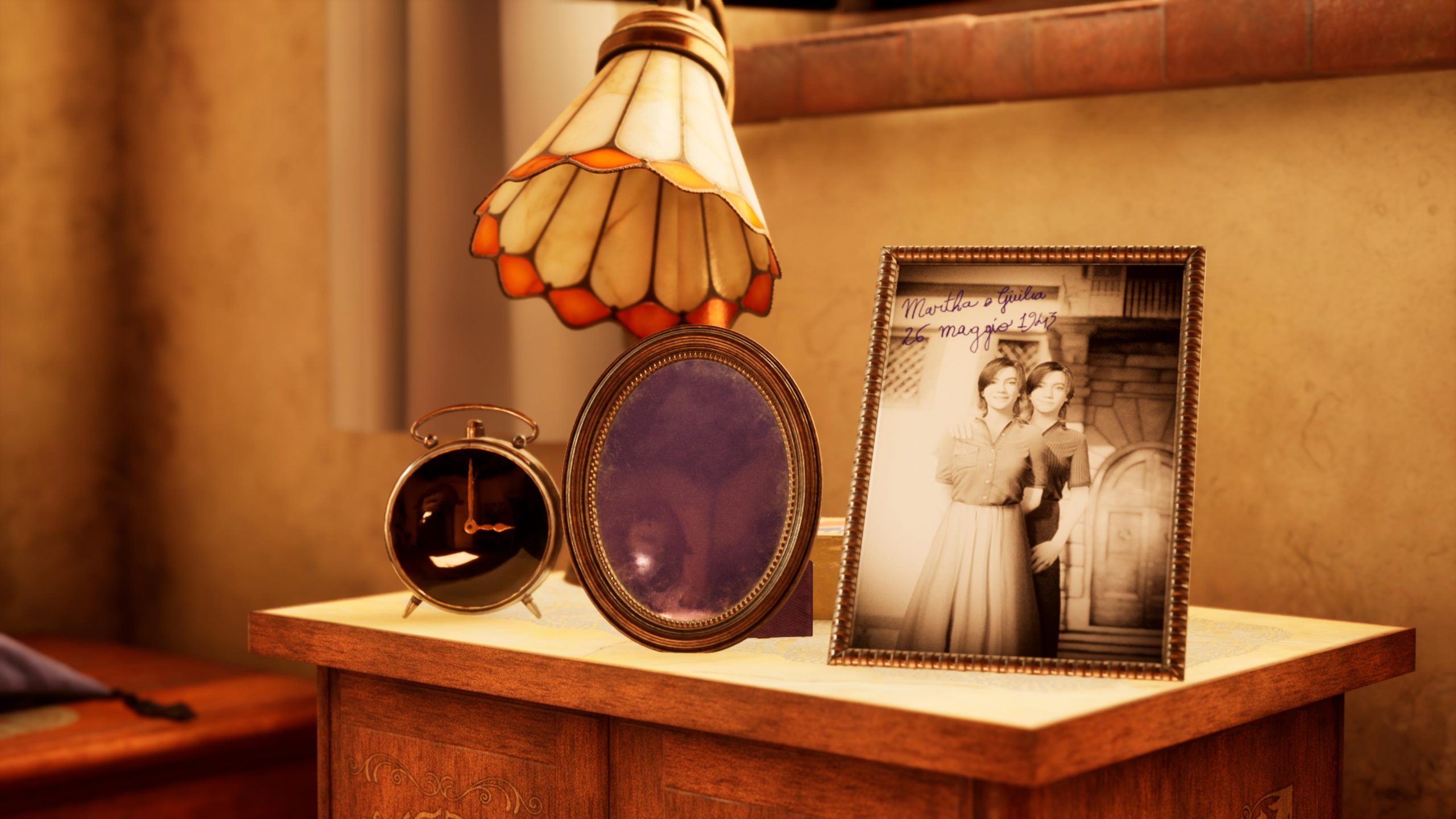
For the moments where Martha is Dead slips into the surreal, the visuals continue to hold up, especially when it becomes bloody. At specific points Martha is Dead encourages the player to undertake during a cutscene. Early on, I was taken through the motions of loading film into a camera by pressing a sequence of buttons but as you progress these interactions become more violent. There was a little controversy with the game’s content which forced the publishers Wired Productions to rejig the PlayStation versions at the behest of Sony. I am assuming this surrounds a scene involving a face being carved from a body, but Wired were unusually mum on the subject. After playing the game to completion, I can assure you that the scene is most certainly as graphic as it was in the demo but it is no longer a QTE – instead it simply plays out with no input. This leads me to suspect that Sony took umbrage with the interactivity of certain scenes rather than the content itself.
While it is disappointing that there is some form of censorship on the PlayStation version, LKA have excelled in implementing DualSense features with Martha is Dead. Everything is considered, from the left and right motors matching Giulia’s footsteps, to phone calls coming through the speaker, to the resistance of the camera shutter when snapping a photograph -everything felt more immersive through the controller. Right at the beginning when Giulia finds Martha, the controller conveys the heartbeat of the distressed twin, which gradually gets faster and faster andis a layer of detail I would never have thought would be considered.
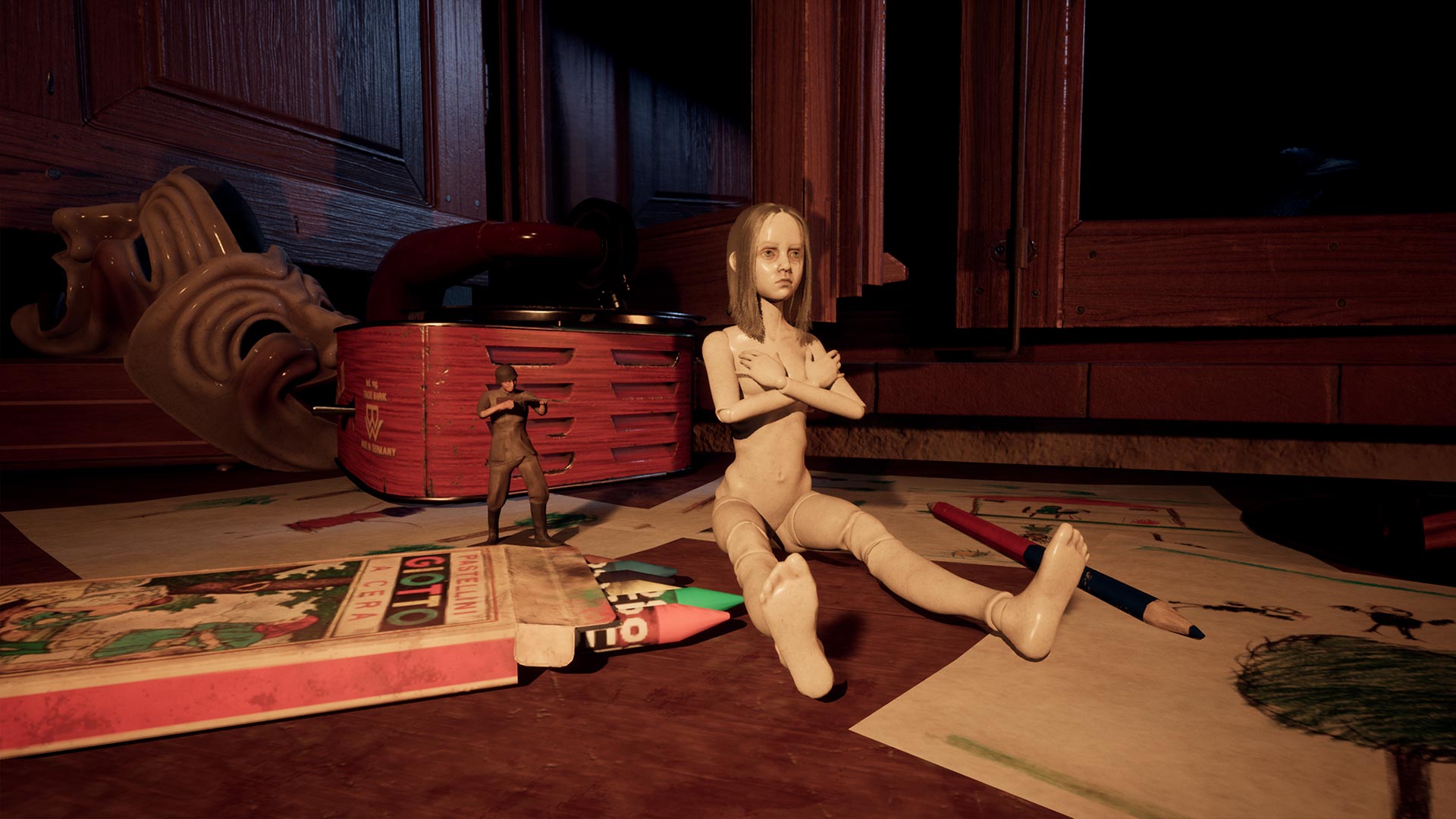
Another area LKA seems to have hit the nail on the head is the sound design. Quite often in games set in foreign places you’d hear “English with an accent”,but hearing all of the characters speak in their native Italian was refreshing to say the least. There are options to change this, but the voice acting is superb and not once did I feel the need to change anything. Accompanying the voices was authentic 1940s music, from both Italian and German bands blaring from radios. It’s these cultural touches that just goes to show the level of detail that LKA took to showcase an immersive period.
I have to say that it’s not all perfection though, as there were a couple of times where the design choices didn’t make sense. On occasion, to segue to a new chapter, I would guide Giulia through the woods, taking a left or right and trying to build a sentence that summarises the chapter, which felt clumsy and oddly out of place considering the rest of the presentation. Another struggle was trying to use a telegraph machine in which a list of words had to be tapped out, except that the box that highlights your selection was justa thin black line that was almost invisible, resulting in a frustrated few minutes trying to work out what was going on. That said, these issues are the extent of the strange design choices that didn’t fit in with the rest of the narrative and don’t impact too much on the enjoyment of Martha is Dead.
I unfortunately have to say that during my nine-hour play time, there were more than a handful of crashes resulting in me having to restart the game. Thanks to the PS5’s quick load this wasn’t too much of an issue but certainly pulled me out of the immersion for a few moments. When Wired Productions kindly provided the game for review, they were upfront in saying bugs were present and that a day one patch will be released. Normally we would wait to test the retail version of the game, but I felt that a handful of crashes didn’t dampen my experience enough to affect the overall score and once the retail version has been tested, I will amend the review accordingly.
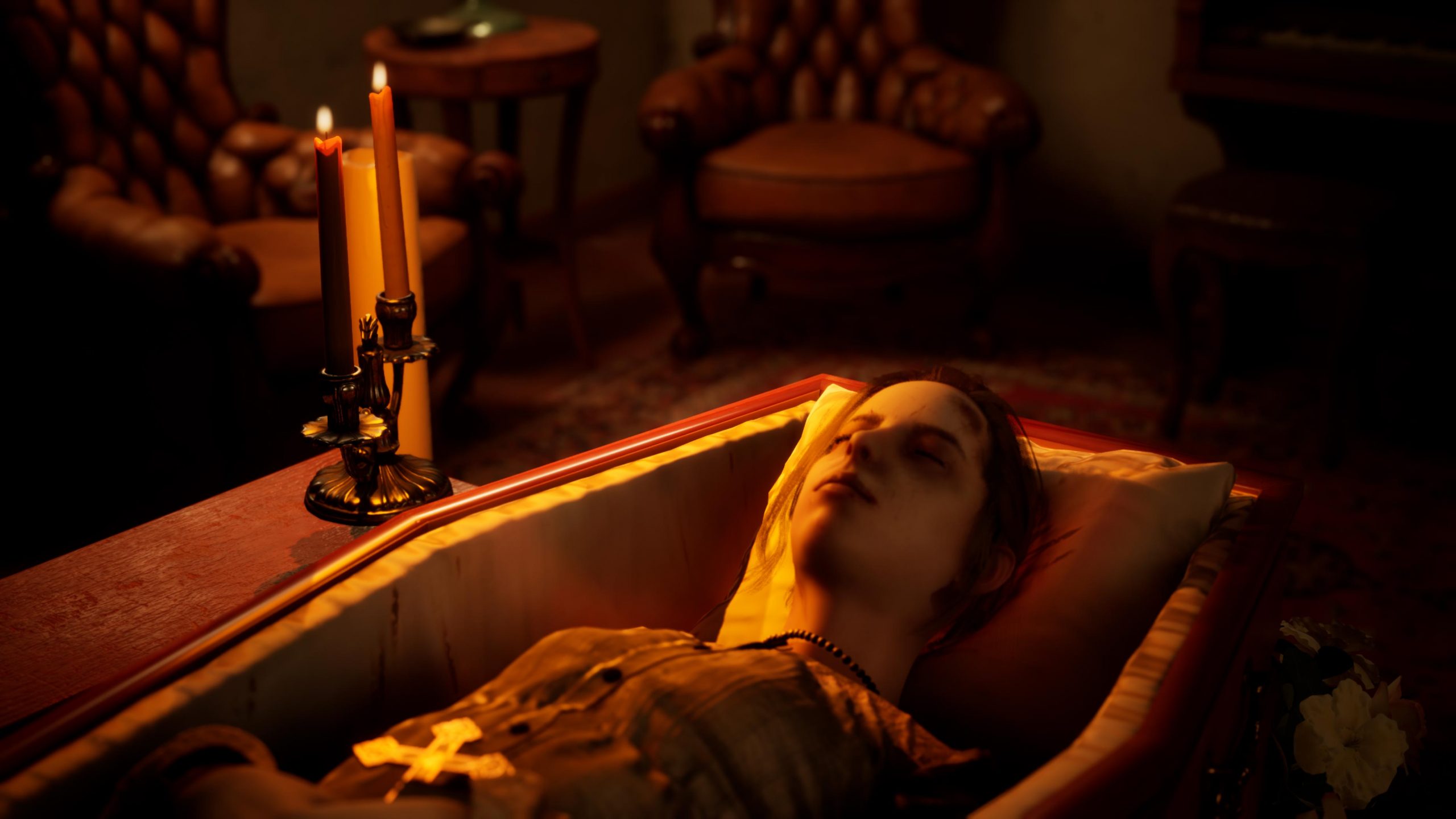
Martha is Dead isn’t a horror game in the sense that ghosts will try to jump scare you around every corner, but the atmosphere LKA have created certainly made me think that might happen, and after realising that Giulia isn’t as a reliable narrator that you think, the game twists and turns in a way I simply didn’t expect. The visuals are stunning and are a great showcase for the new generation of consoles, and when they are paired with an authentic soundtrack, it really felt as if I was in Italy in the 40s. There are moments in this beautifully dark video game that forced me to change the direction of my playthrough and I am already excited to go back and explore the additional routes, especially once those bugs have been flattened out. The subject matter must also be praised – it doesn’t glorify and isn’t just present for entertainment value, it’s there to make an impact, and as a result, Martha is Dead certainly packs a punch.

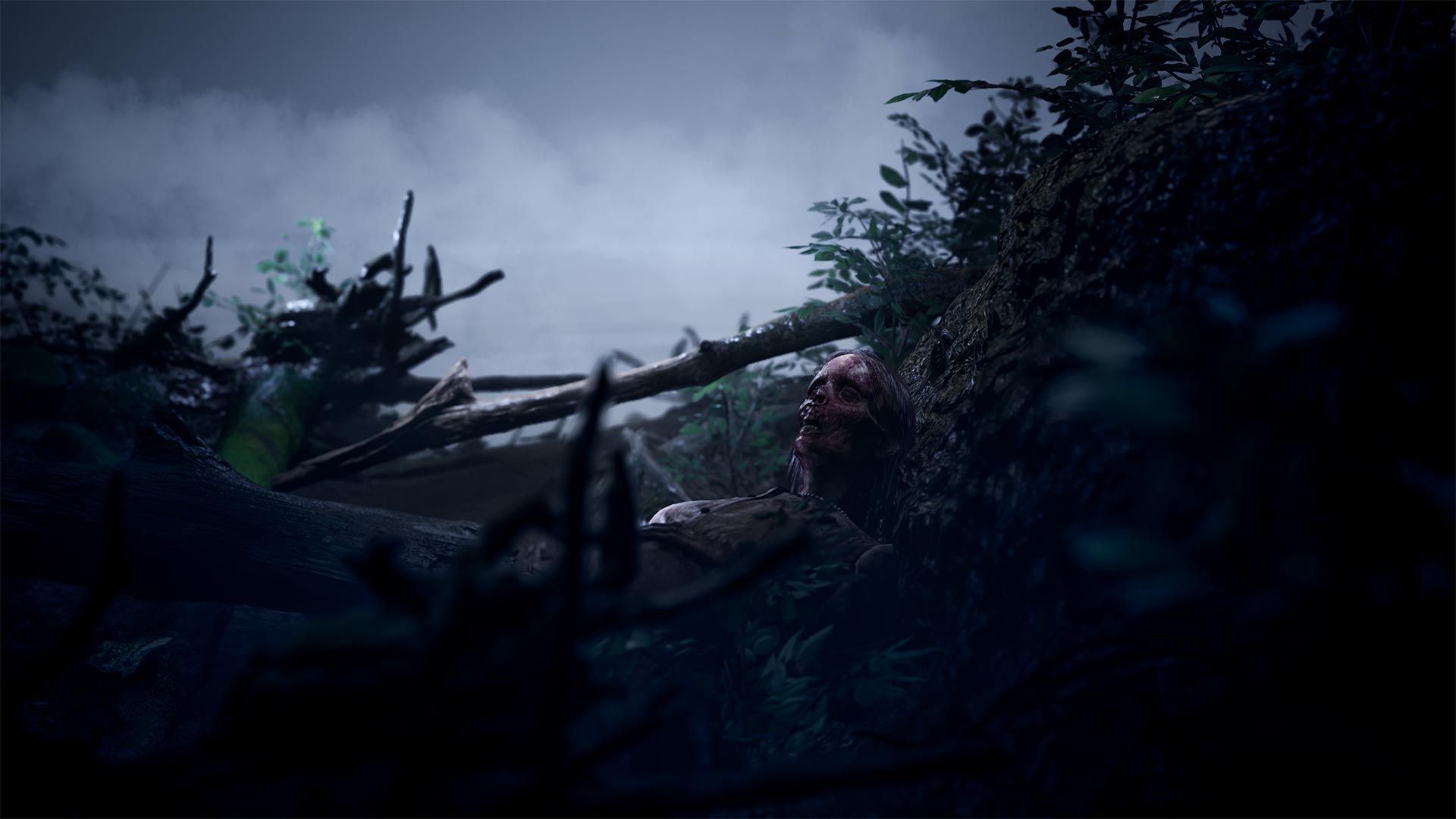

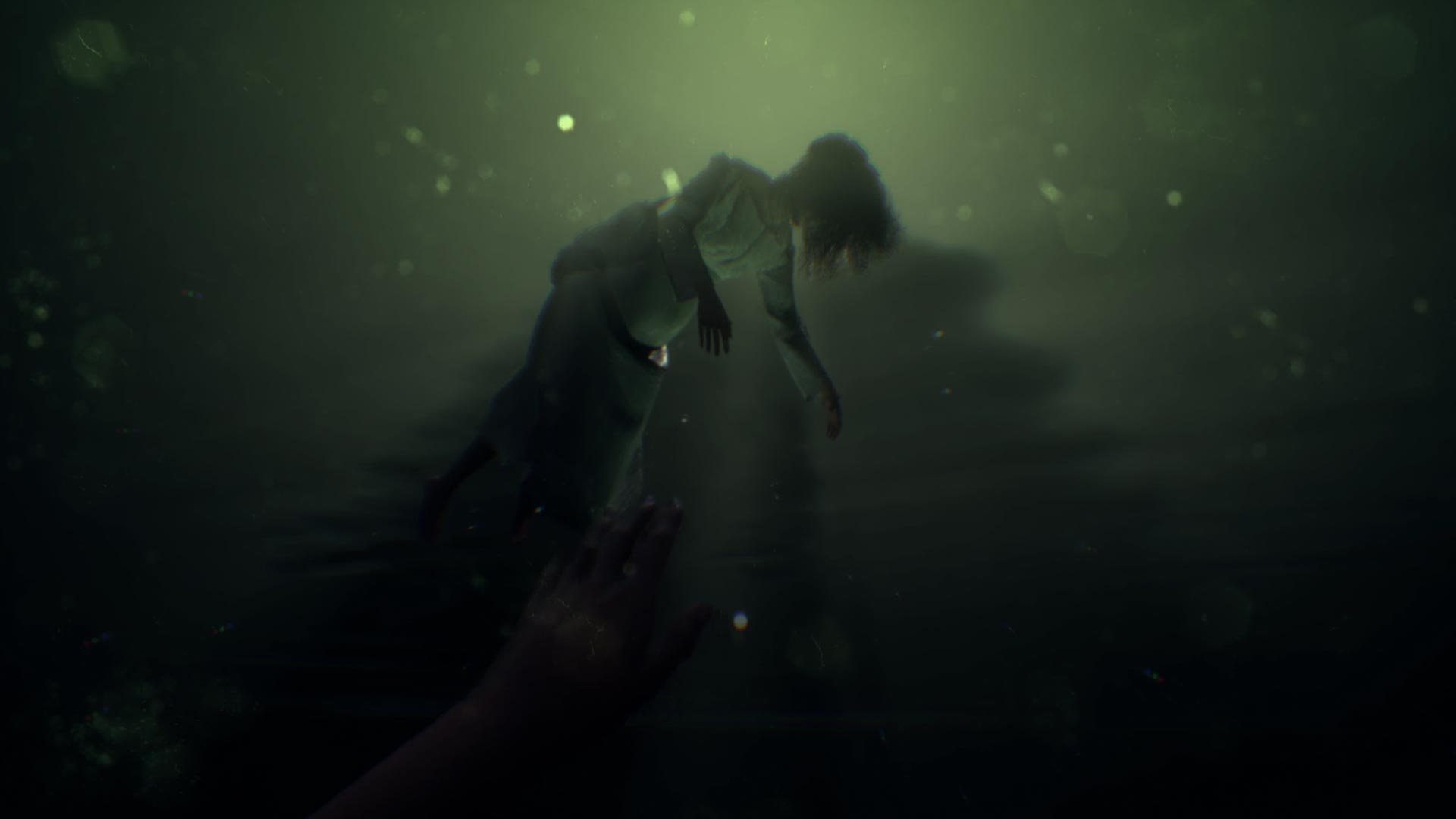

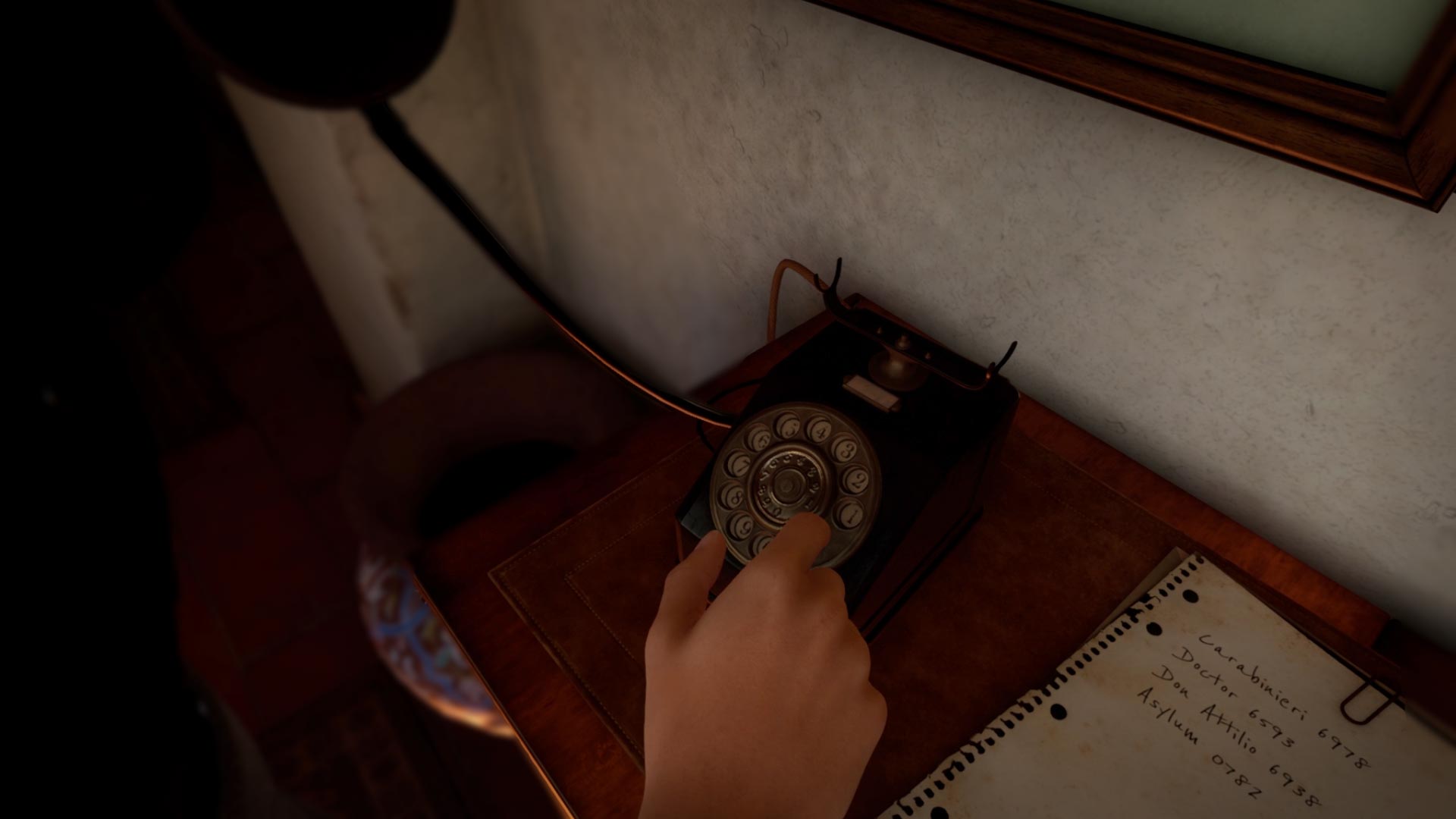
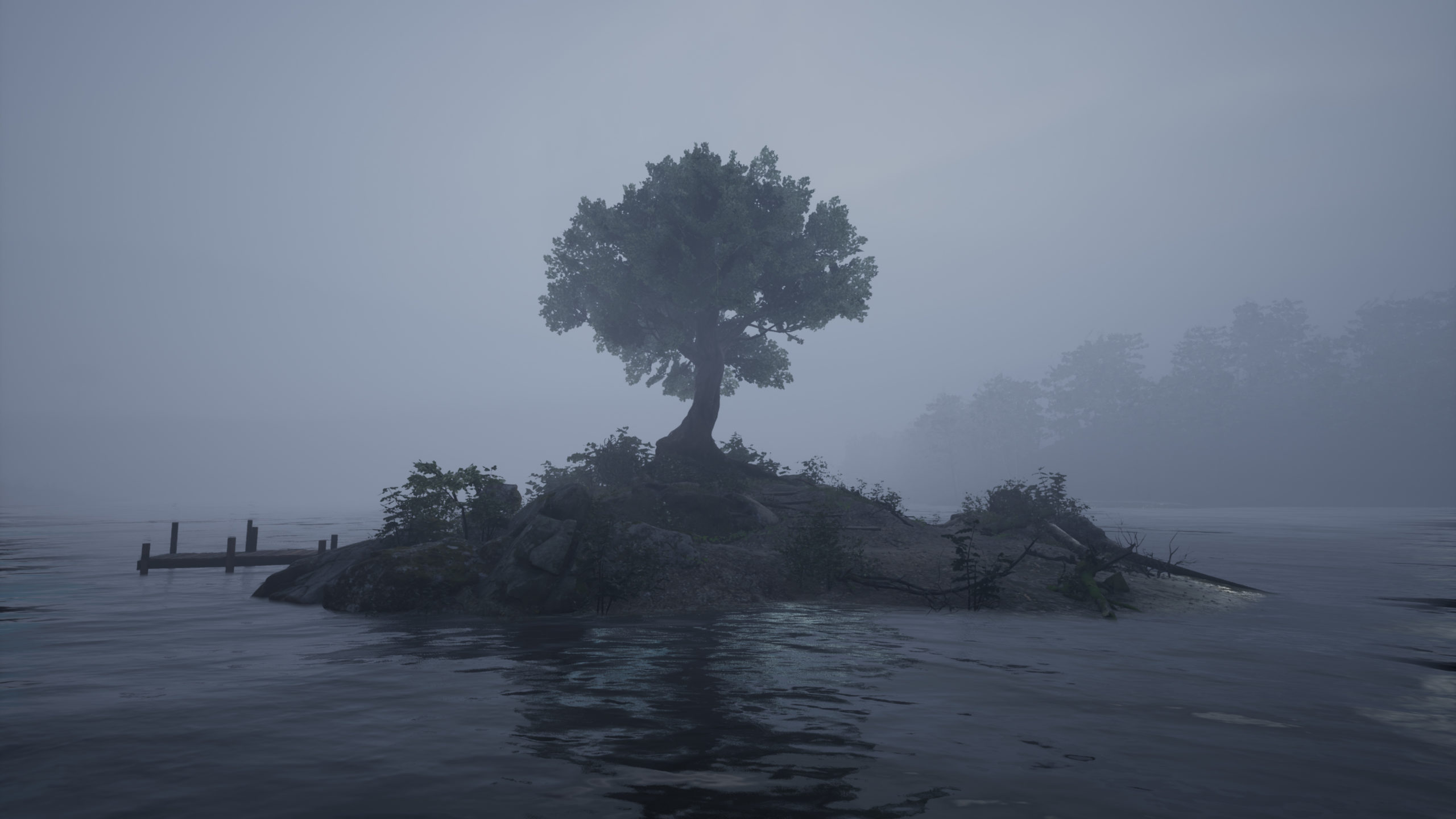
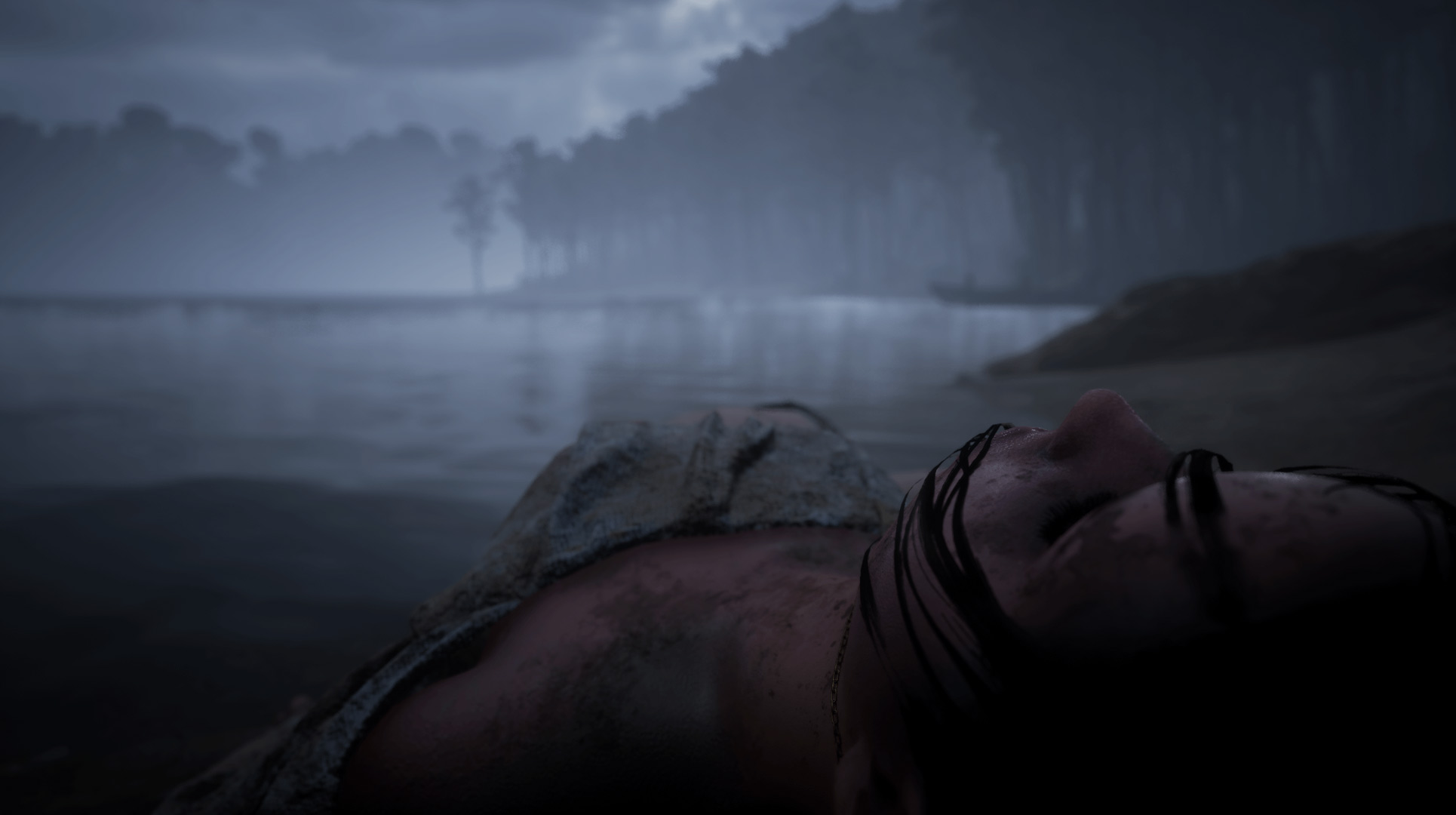
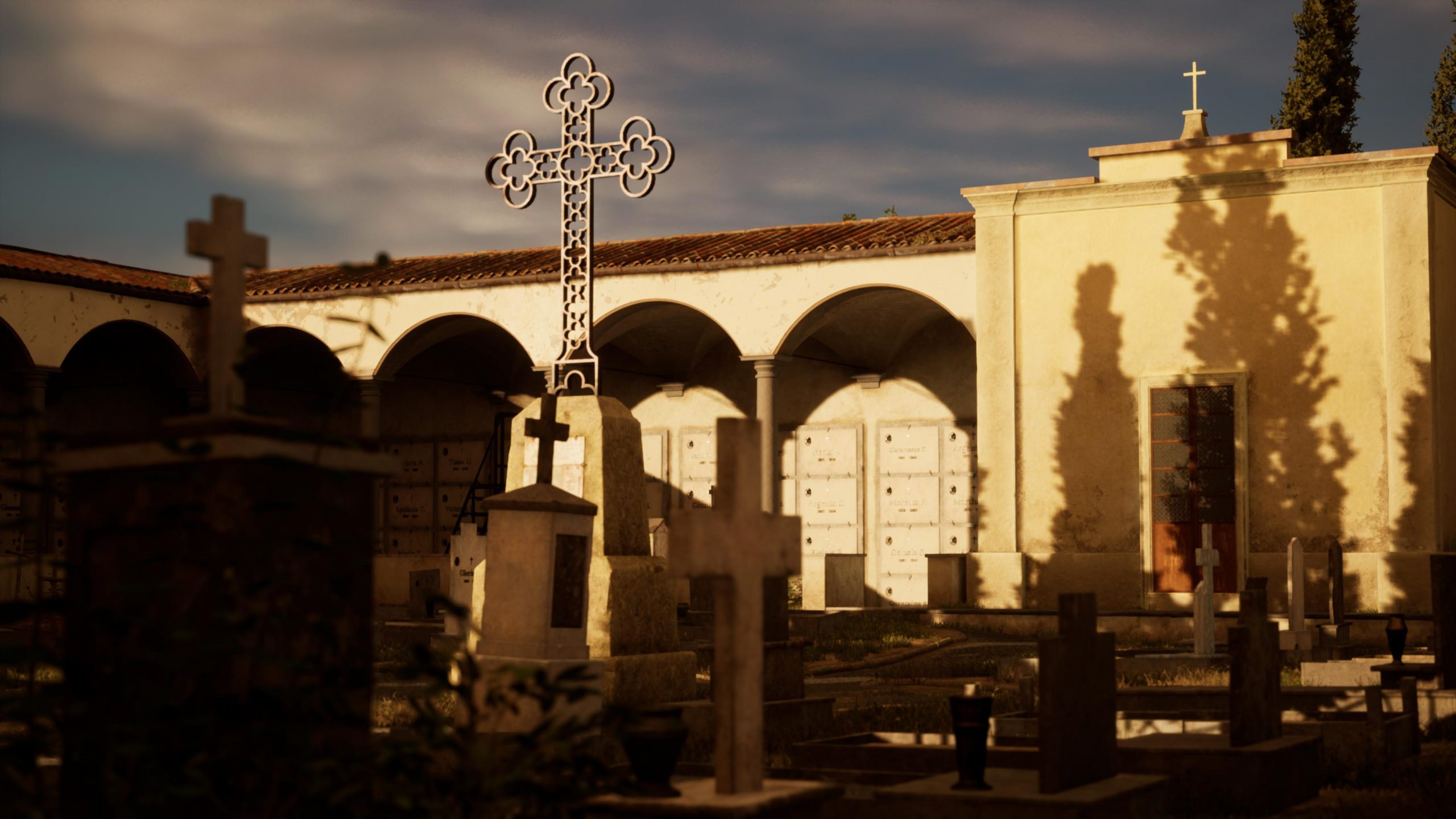
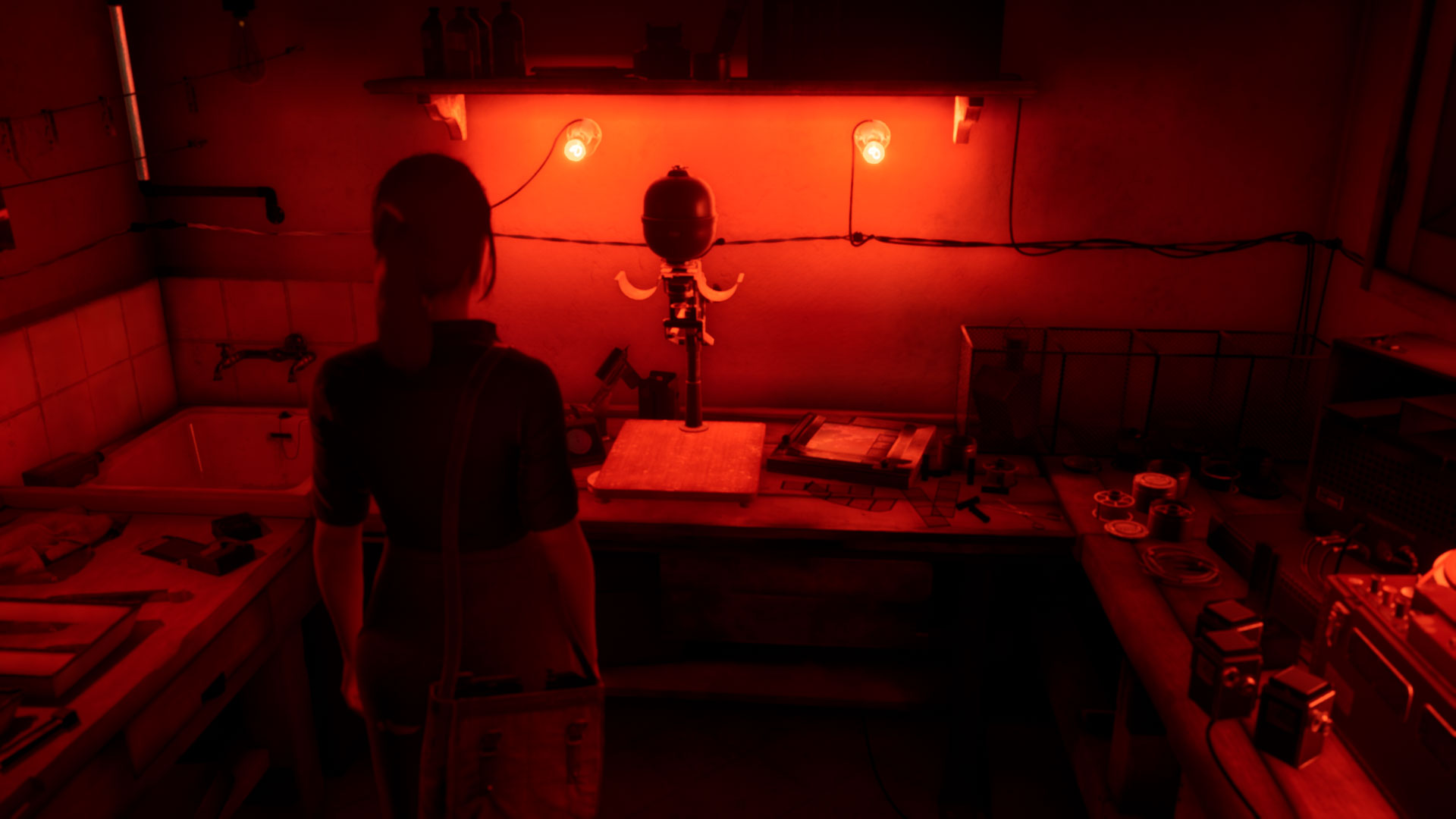
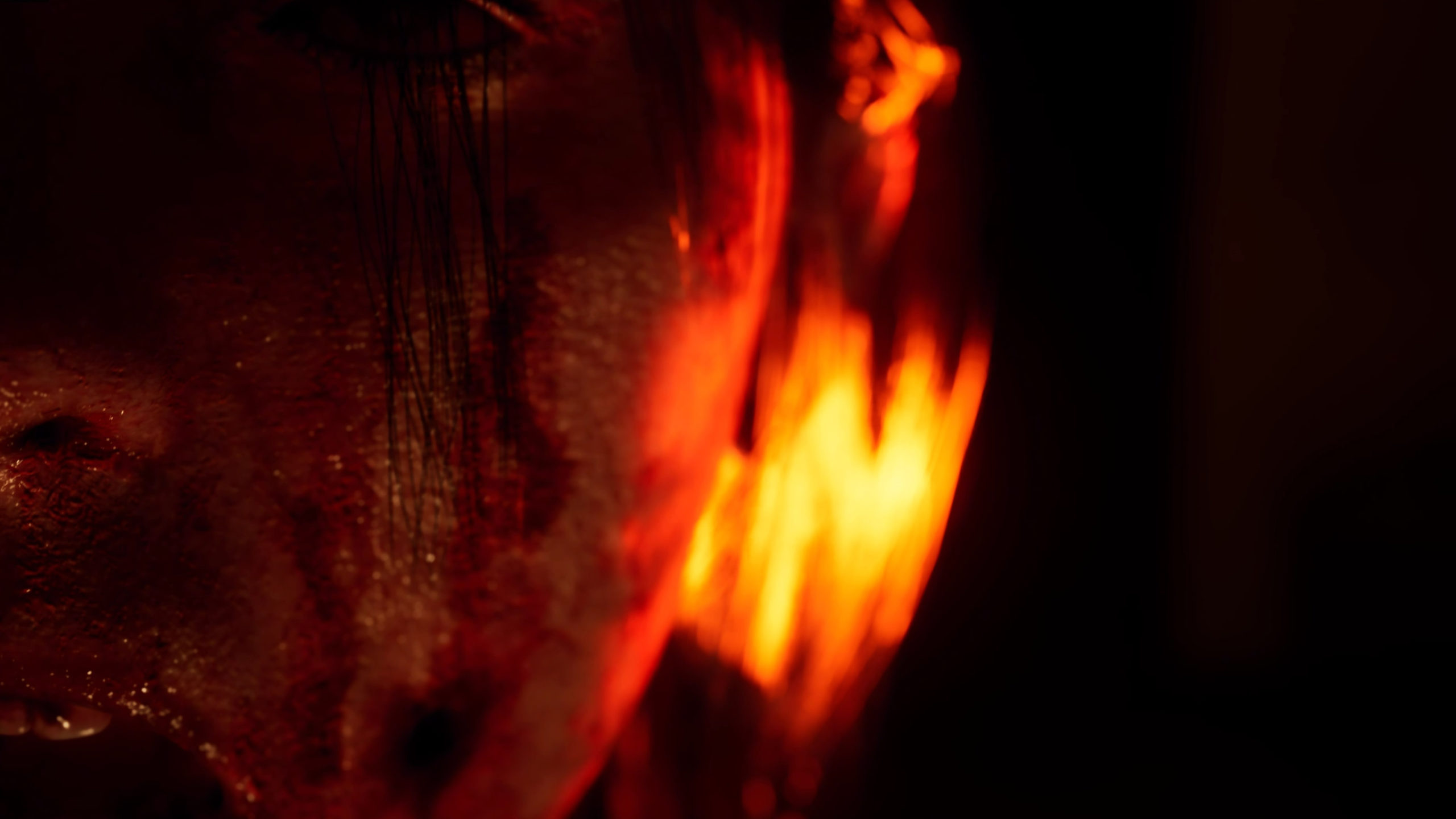
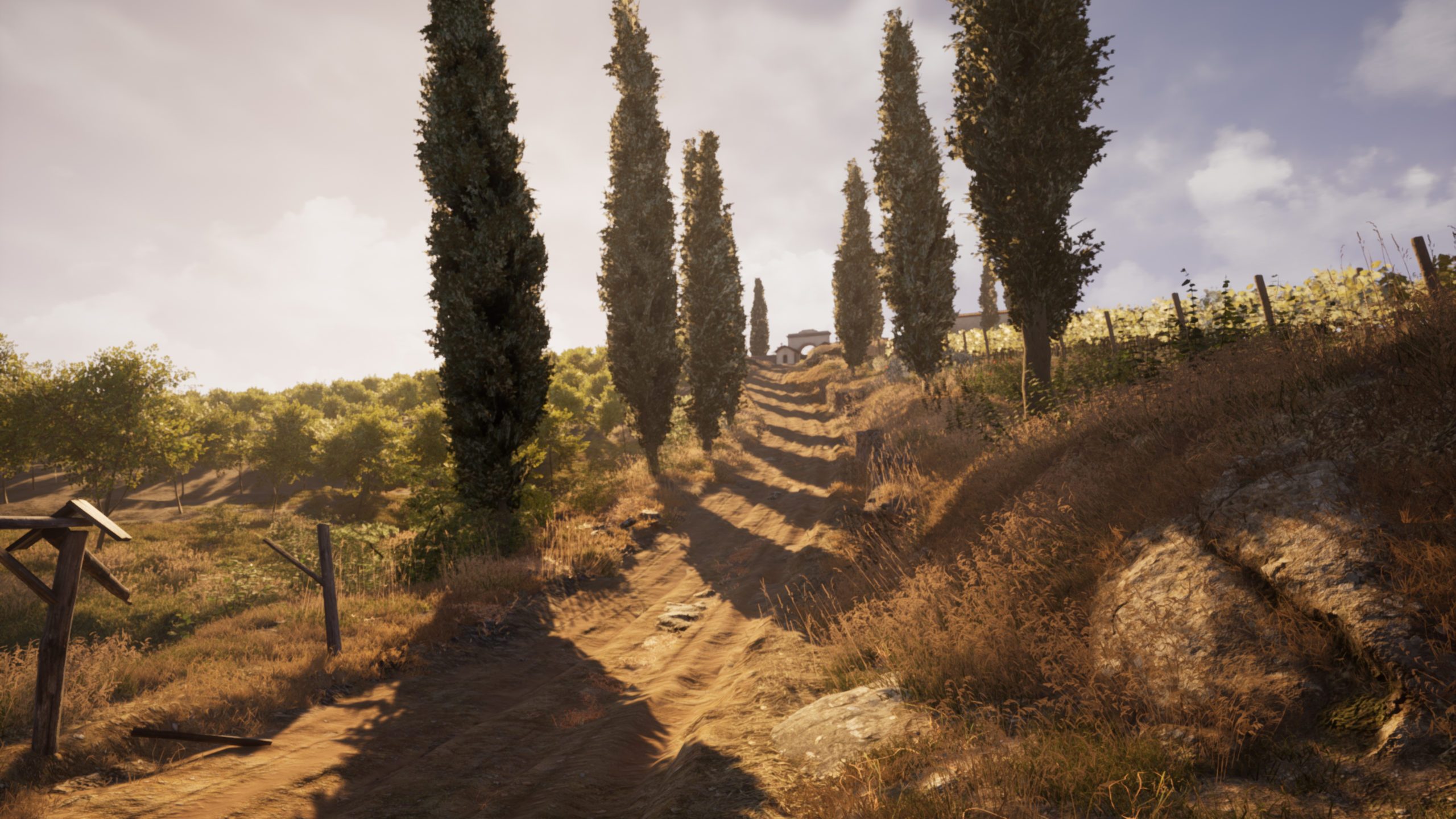
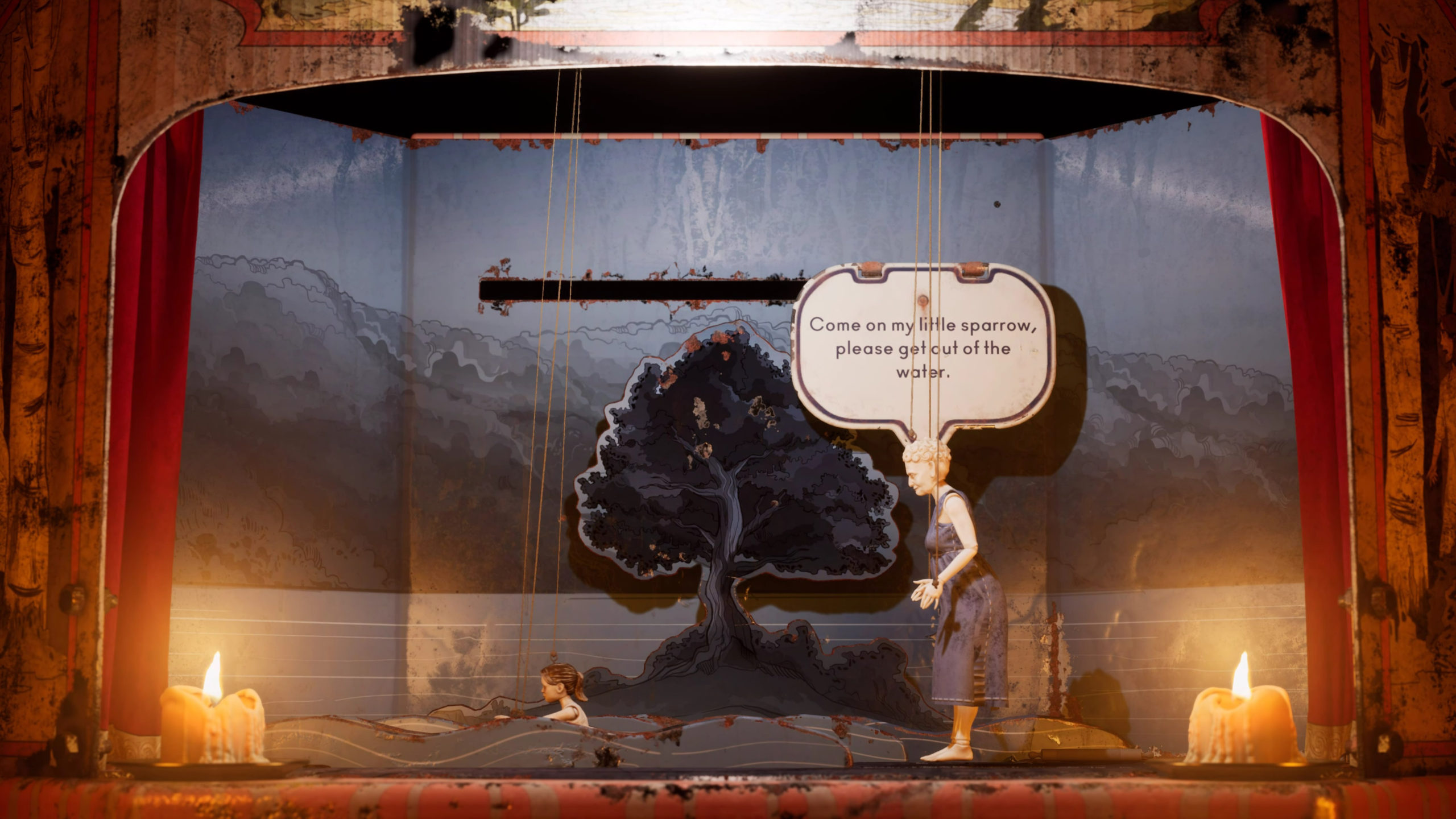

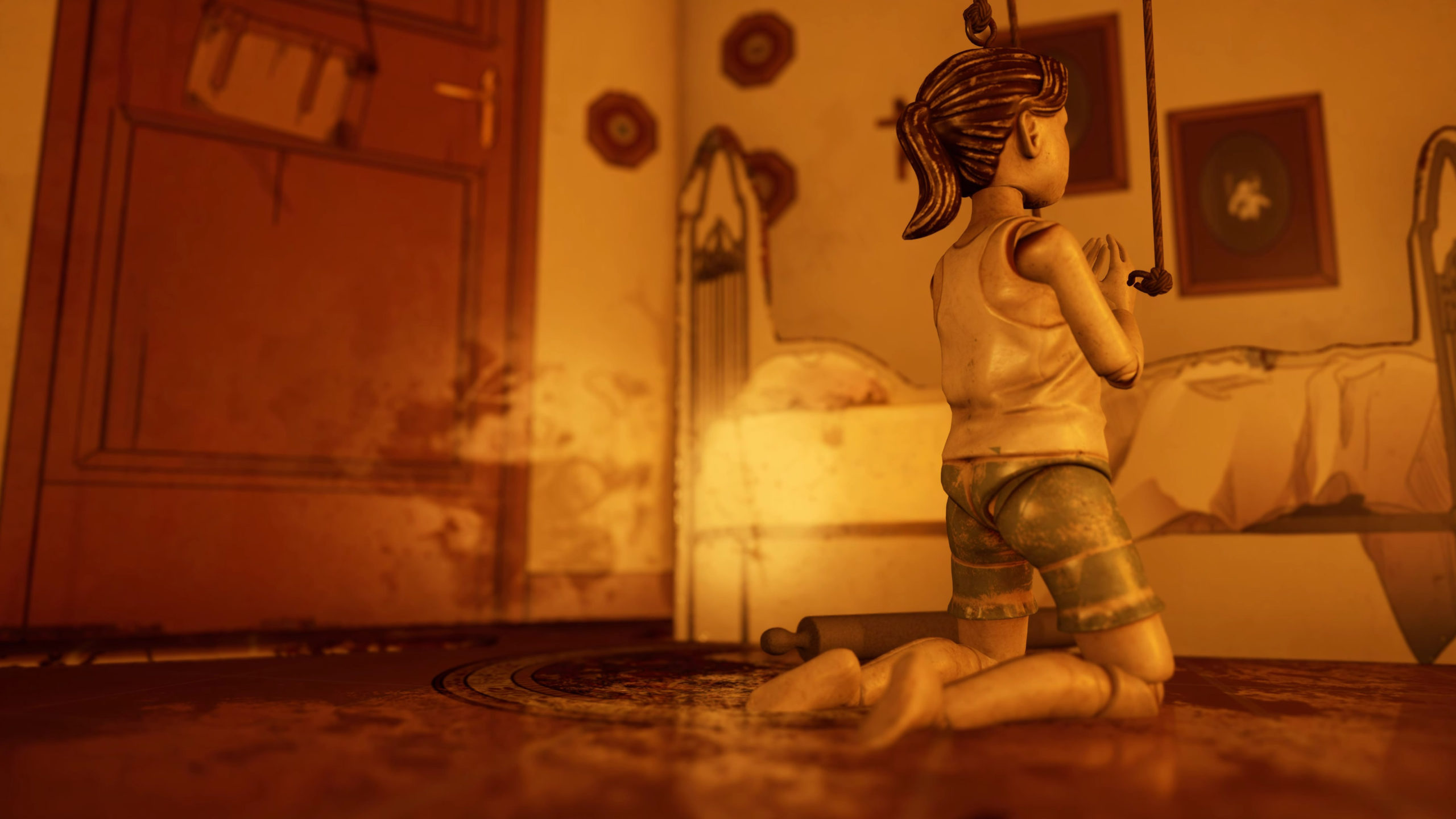
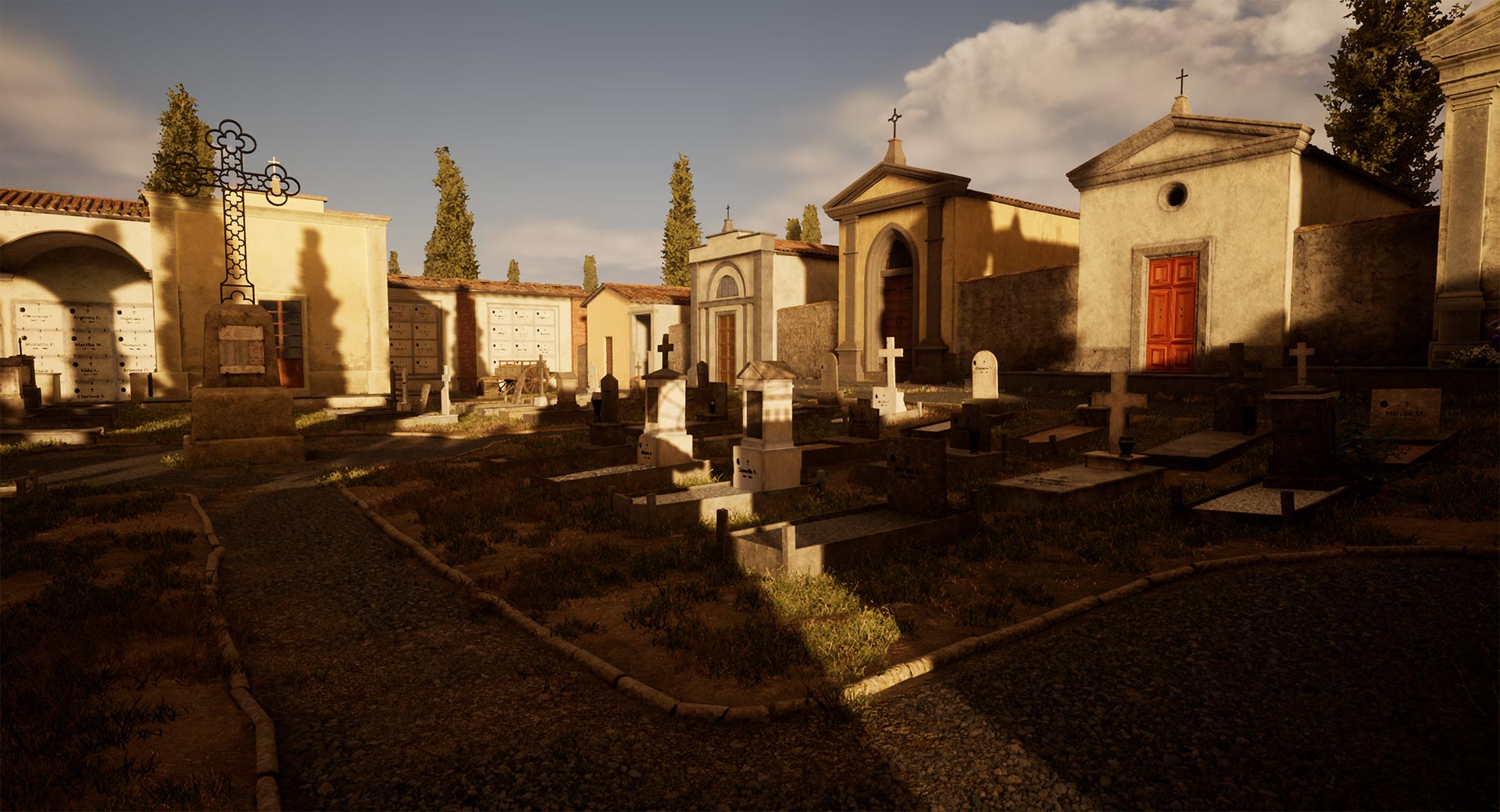

In the interest of full disclosure, the publisher provided VGamingNews with a copy of the game in order to conduct this review.
Monark
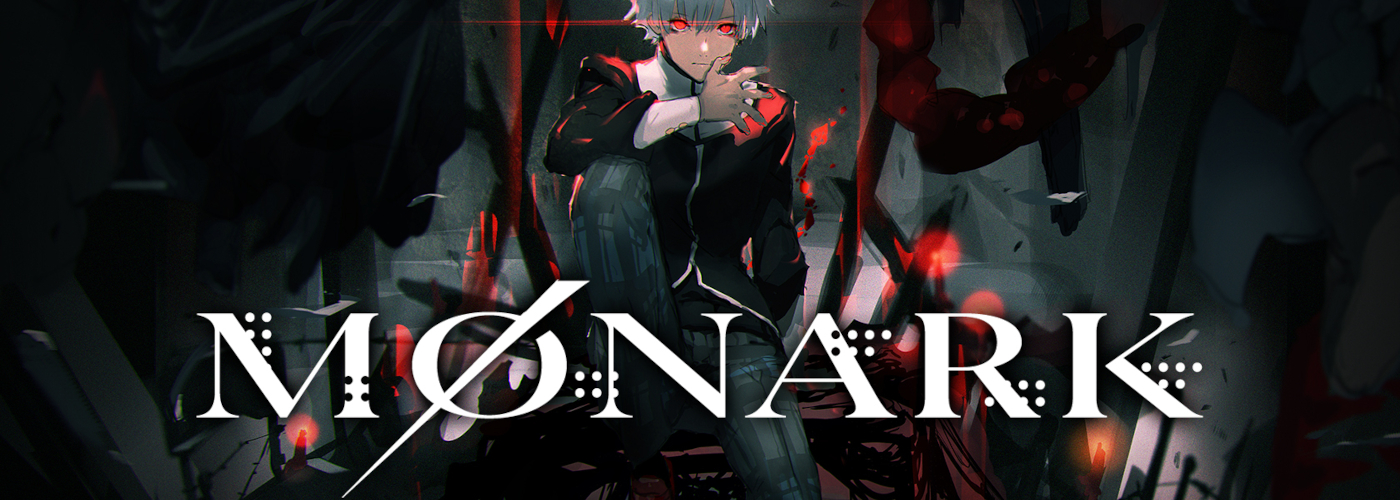
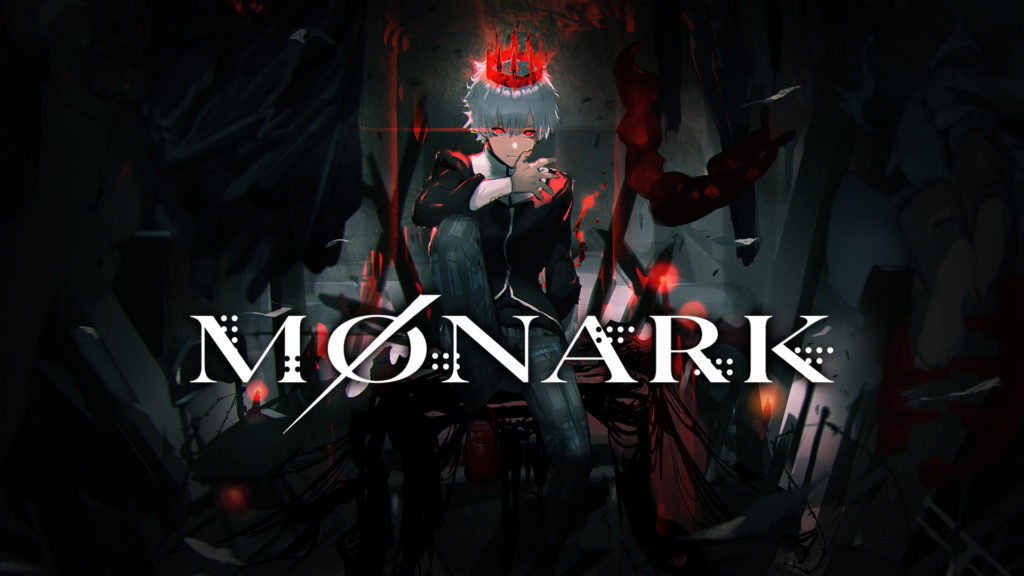
I’ve often found RPGs to be a fickle beast, either they plod along at a snail’s pace to such an extent that I lose the will to live well before the credits roll, or the developers throw a thousand ideas at the player, and hope that some elements stick. Only the greatest role-playing games have that balance between not enough to do, and too much to discover. Monark doesn’t neatly fit into either camp, so does that mean it’s one of the greats?
At A Glance
| Scores | |
| Visuals | 6.5 /10 |
| Sound | 8 /10 |
| Gameplay | 7 /10 |
| Overall | 7 /10 |
| Positives | + Investigative portions explore dark story |
| Negatives | – Overly bloated story in places |
| Price (When Reviewed) | £45.99 |
| Our Playtime | 63 hours |
| Available On | PS5, PS4,Nintendo Switch, PC |
Created by Japanese developers Lancarse and published in the west by NIS America, Monark is set in the grounds of the Shin Mikado Academy, a Japanese high school that’s been enveloped by a big barrier that contains a Mist that is causing students to act… strange. It quickly becomes clear that the Mist is a result of people on campus making pacts with daemons from the Otherworld, a hell like landscape that is accessed through your mobile phone and where the battles take place. Playing as an unnamed protagonist who has conveniently lost all of his memories, you set about investigating just what the heck is going on.
To use that old football saying, Monark is a game of two halves. Your time around the academy is spent investigating the Mist and looking for the people responsible, known as Pactbearers. These people have a power based on one of the seven deadly sins and have split them across three Ideals – large crystals that live in the Otherworld that must be destroyed to weaken the Pactbearer. Each Pactbearer has their own reasons for their actions, but as we’re dealing with the deadly sins, each one is extreme in nature; Wrath, for example, deals with a serial killer murdering students in particularly violent ways. While it’s not explicit in nature, it’s worth noting for those who can be upset by such themes.
The protagonist navigates the school methodically, taking each building as they go, speaking to the students within to get clues to where the Ideals can be accessed. This portion of the game plays out more like a detective game than a RPG: I had to gather clues, solve puzzles, and collect certain items to progress, and is also made more complicated when accounting for the Mist. Entering areas of the academy covered in Mist causes a few things to happen – a MAD gauge starts to fill up, and once it hits 100% you pass out and it’s back to the infirmary. It’s a small inconvenience since your progress is saved but it’s an annoying one nevertheless. The most significant thing is what happens to the other students in the Mist – they stand there like petrified zombies, mumbling nonsense and generally getting in the way. At random points, the Otherworld will call the protagonist’s phone which sends everyone into a frenzy and those placid students spring to life and chase you like the Crimson Heads from Resident Evil. Being chased by zombie students certainly adds urgency to the investigations and makes for an interesting challenge.
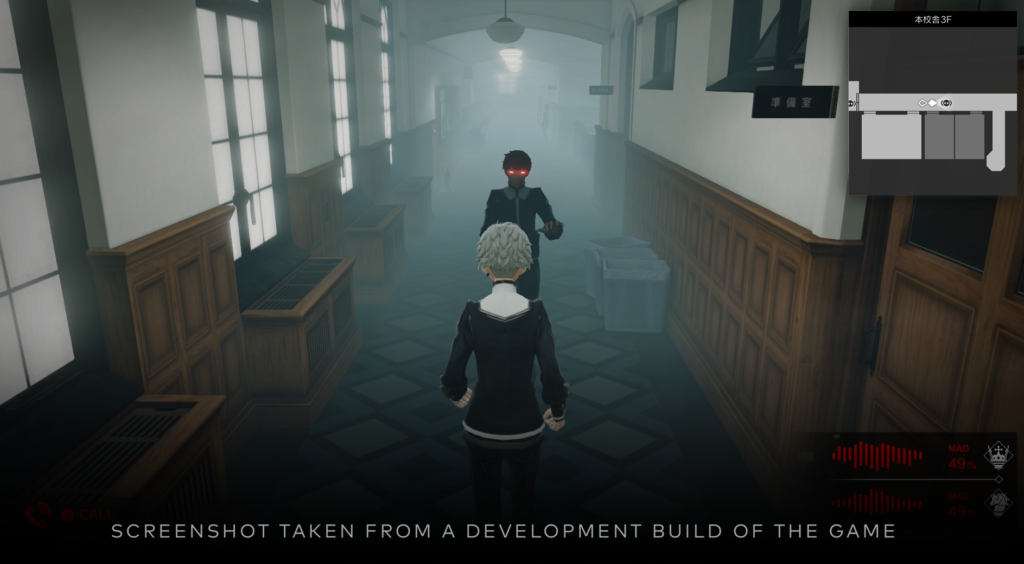
The second part of Monark takes place in the Otherworld – in essence, the battle ground where you face off against skeletal enemies known as daemons. This is more straightforward RPG fare, where you arrange your characters on the battlefield and take it in turns to take out the enemy. It’s a nice mix of turn based action and Strategy-RPG planning, as each move needs to be methodically thought out. The protagonist isn’t exactly on his own either, as various characters will join the party at different points, and even when you’re riding solo there are some spiritual beings on hand to help. The MAD gauge is present here too – filling up as you take damage, but instead of getting a game over when it hits 100%, your character will turn on the rest of the party until they are either calmed down or KO’d. You earn Spirit points for winning battles, which act as Monark’s version of EXP. Rather than being traditionally divvied up between the party, it’s a cumulative figure thatI could allocate where I saw fit. Since Spirit also doubles as the game’s currency, it became a juggling act to either power up my team or spend on potions or equipment for the daemon supporters which was refreshing to see and added a layer of depth to the proceedings.
Another twist in the battle system comes in the form of Ego, a set of seven categories which level up based on how each fight is tackled, and by answering certain questions that are posed throughout the game. Each category is named after, you guessed it, the seven deadly sins, and I found the Ego set up a really cool system. The first introduction to Ego takes the form of a short questionnaire, and answering honestly I was given an assistant daemon based on Pride, who had a high defence and could help with healing. The second time through I had a Wrath daemon join my party, who had a lower defence stat but could hit like a brickhouse. In battles Ego points are awarded on how you approach the fight, sitting back and only attack when an enemy hits first earns more Sloth points, or by using a lot of healing materials then Greed will see a bump.
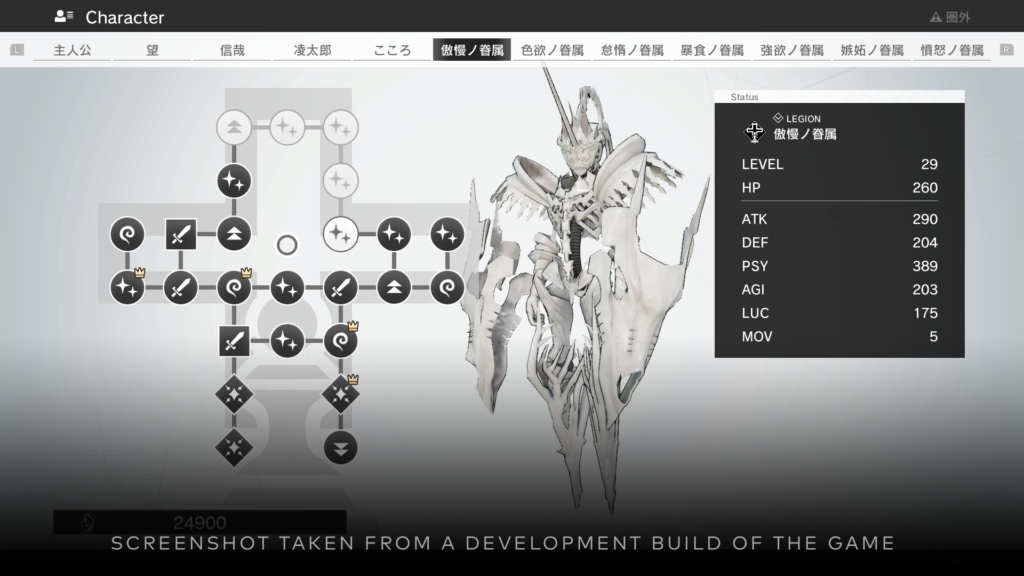
It’s a really well managed system and early in the game Ego dictates the flow of combat as you stategise your squad accordingly, but as you go through the academy, there are opportunities to game the system and equally level up all elements of your Ego, shifting the emphasis from your specific playstyle to getting all the numbers as high as possible. You could always answer honestly, but the game makes it clear why this isn’t always the best approach: the difficulty curve. The obligatory RPG grind isn’t as problematic as other games so long as you choose the correct battles to replay, but it is unfortunately a requirement to progress as enemy stats are increased whether you’re ready or not, and grinding out the Ego stats & Spirit will help in the long run.
Monark’s visuals are presented as an anime rather than a realistic looking world and this works to accommodate the game’s two contrasting environments. It didn’t push the PS5 by any stretch but the academy reminded me of my own school days, full of brown desks and grey floors and those itchy uniforms I was forced to wear. It’s almost to the game’s detriment that it brought back those nostalgic feelings, as every building appeared to be like the last with only a few key differences to tell them apart. The result was an environment that felt a little drab and lifeless – I don’t think this is the fault of the developers mind – there’s just not a lot of inspiration to play with in a school. On the other hand the Otherworld was completely different, acting like an enclosed battlefield that are more limited in scope, but still full of vibrant reds and blacks. The backgrounds are strewn with hints to who you were fighting and there’s a lot to look at and even when repeating battles. This duality spreads to Monark’s soundtrack too – where the Otherworld has a J-Pop soundtrack infused with heavy guitars and loud drums to get you pumped for battle, the school elements taking a relaxed lo-fi approach. One thing that must be said is that the voice acting is a high standard. There are the obligatory cheese moments but these are few and far between and a refreshing addition when it comes to reviewing anything that’s been dubbed from Japanese. Overall, I felt the presentation of Monark was reminiscent of the Shin Megami Tensei series, which is unsurprising since some of the same developers also worked on Sega’s franchise.
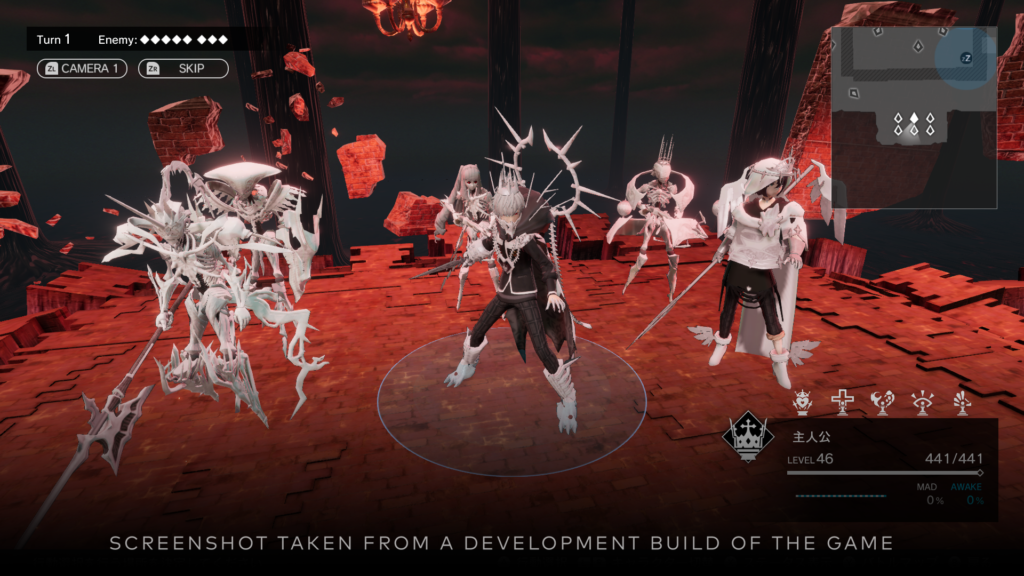
As I said in the intro, great RPGs tend to balance pacing with things to do and Monark takes ‘the less is more’ approach. There is only one overarching goal throughout the game, with no side quests as such, just the one story spread out over the game’s 50+ hour run time. With only one major plot to explore this does lead to points where the story is drawn out – the first portion of the game is very much exploring the building, find the three Ideals, defeat the Pactbearer, rinse and repeat. After twenty-three hours I was ready to call it a day and then the story decided to kick into gear and didn’t stop until the credits rolled. There are places where time could have been cut such as the opening portion, or elements of the endgame, Monark would have felt like less of a slog and elevated the experience to no end. The grind is annoying but expected as part of the RPG trope but to Monark’s credit, battles are snappy and can be sped up with a tap of R2.
Monark treads the fine line between a good RPG and a truly great one. I enjoyed that it was a stripped back affair and that I only had the story to focus on instead of thousands of pointless side quests. The story, while dark, was enjoyable, particularly in the second half of the game. Some of the investigative portions really tested my mettle and while there is a grind to keep up with the difficulty curve, this was well balanced and always fair. But because the story was linear, the game felt it was in danger of becoming boring. If the early stages of hunting Pactbearers wasn’t the same process in a different environment, Monark would be a truly great game. Don’t get me wrong, it’s a pretty good RPG, but the flaws are noticeable, and it runs the risk of putting people off, especially those with a high Sloth stat.
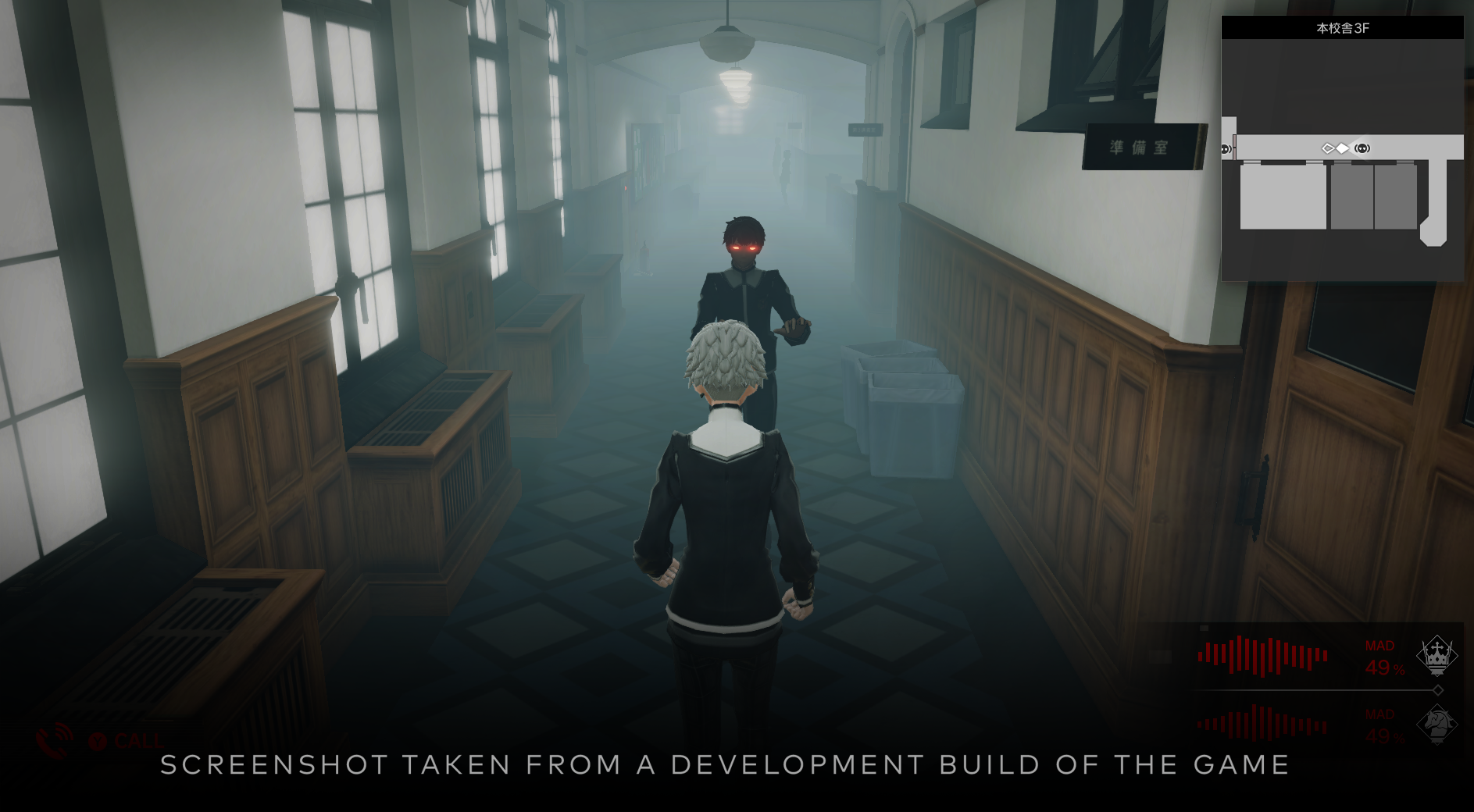
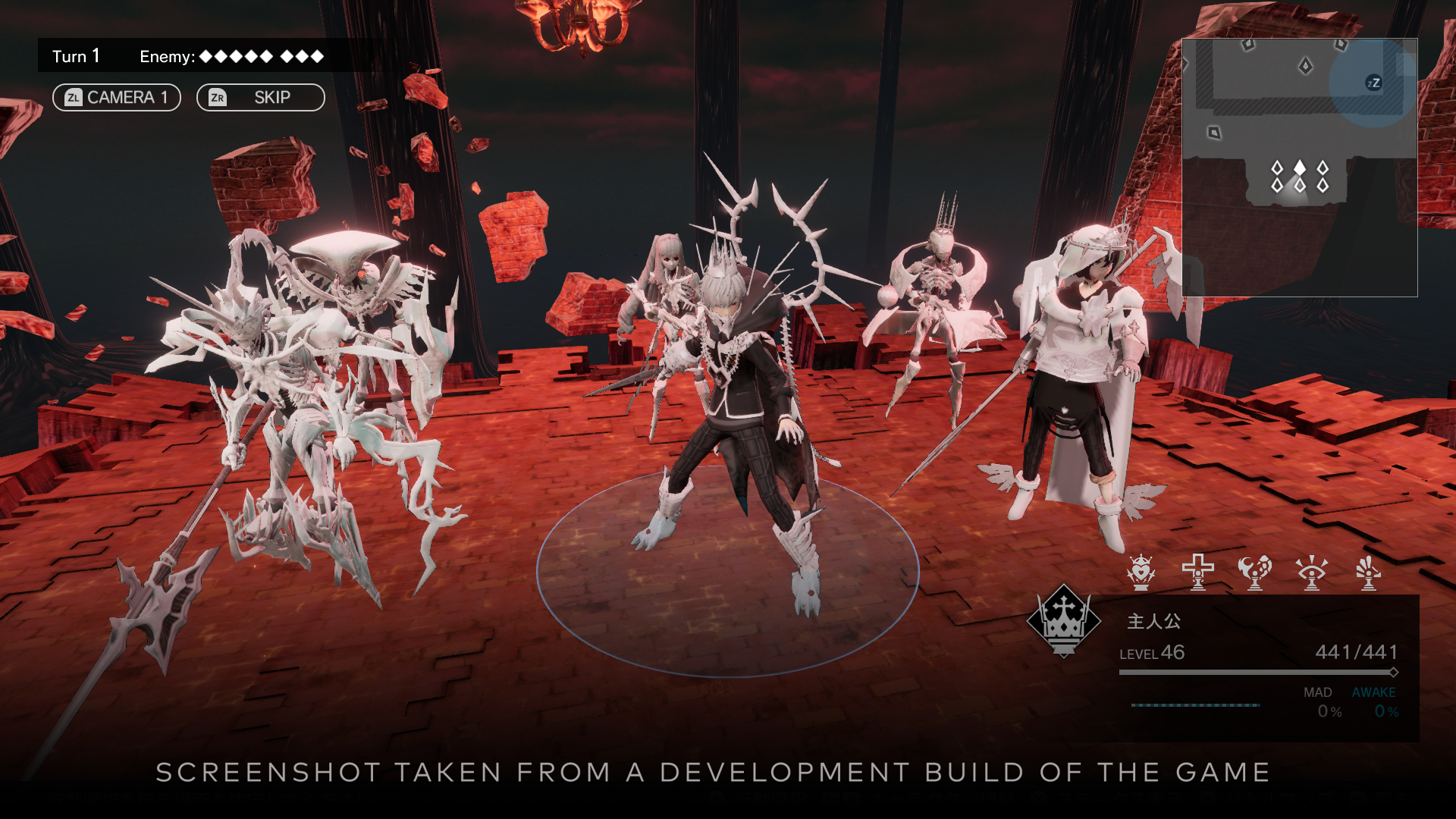
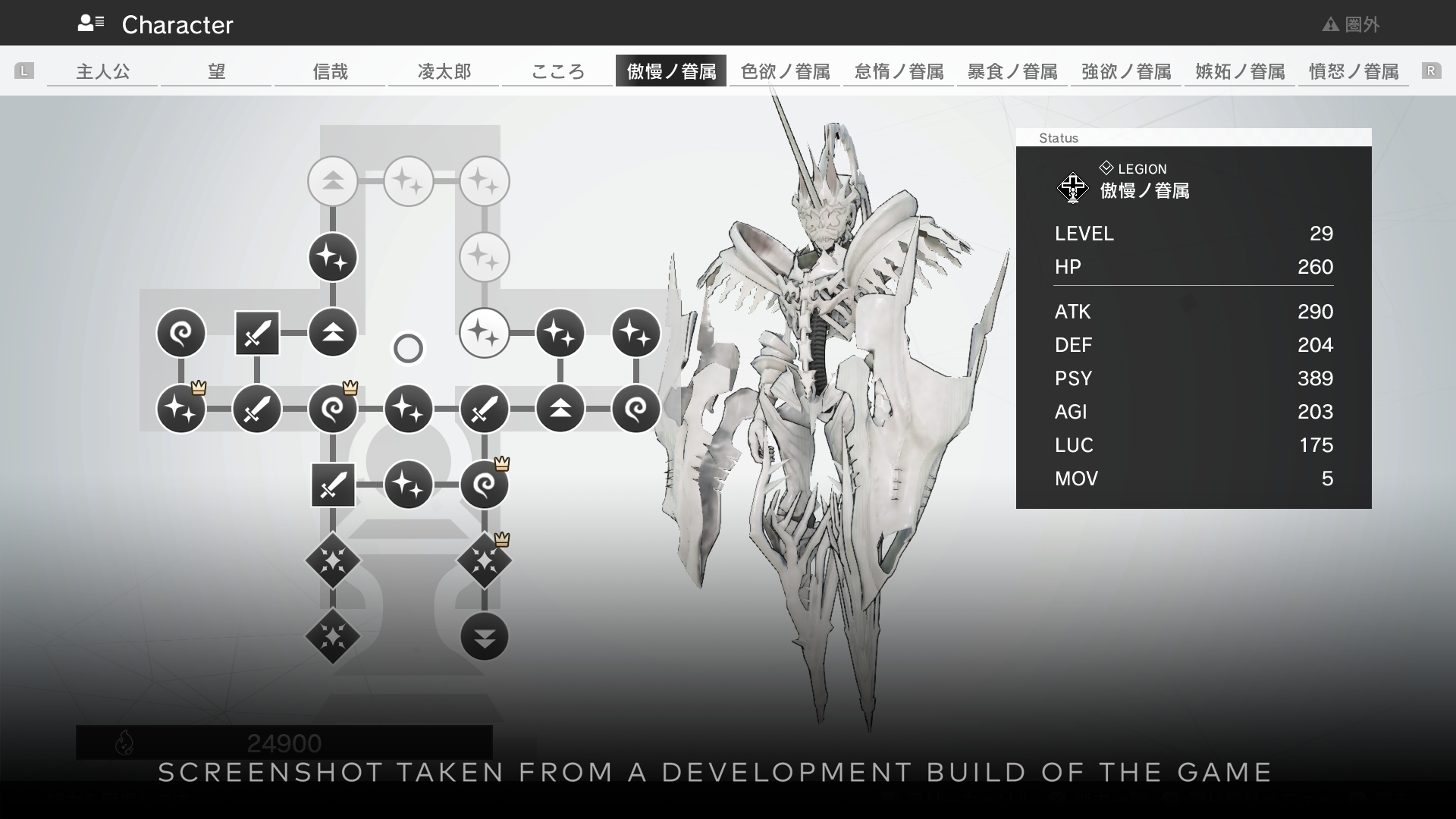
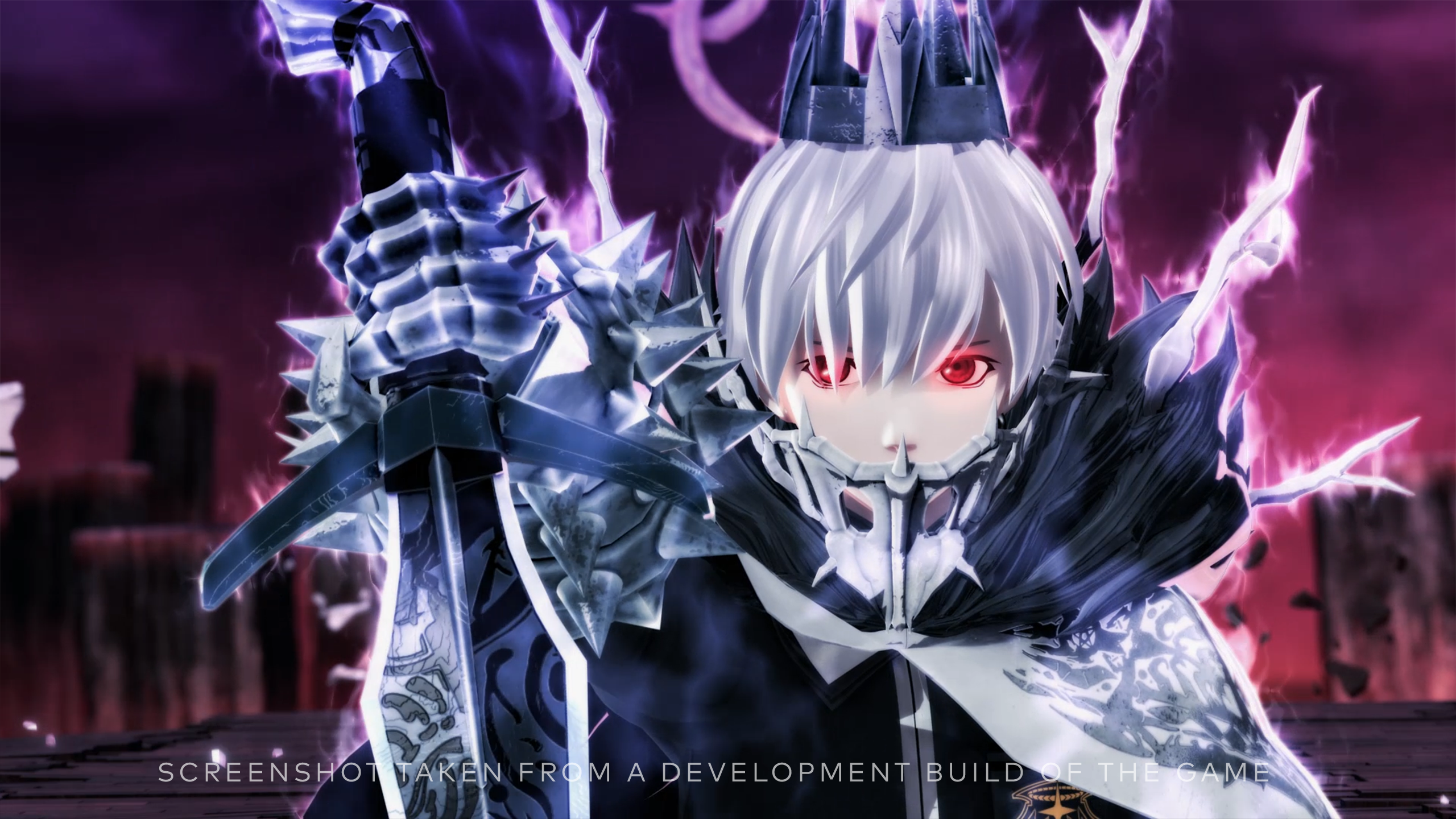
In the interest of full disclosure, the publisher provided VGamingNews with a copy of the game in order to conduct this review.
Cake Invaders
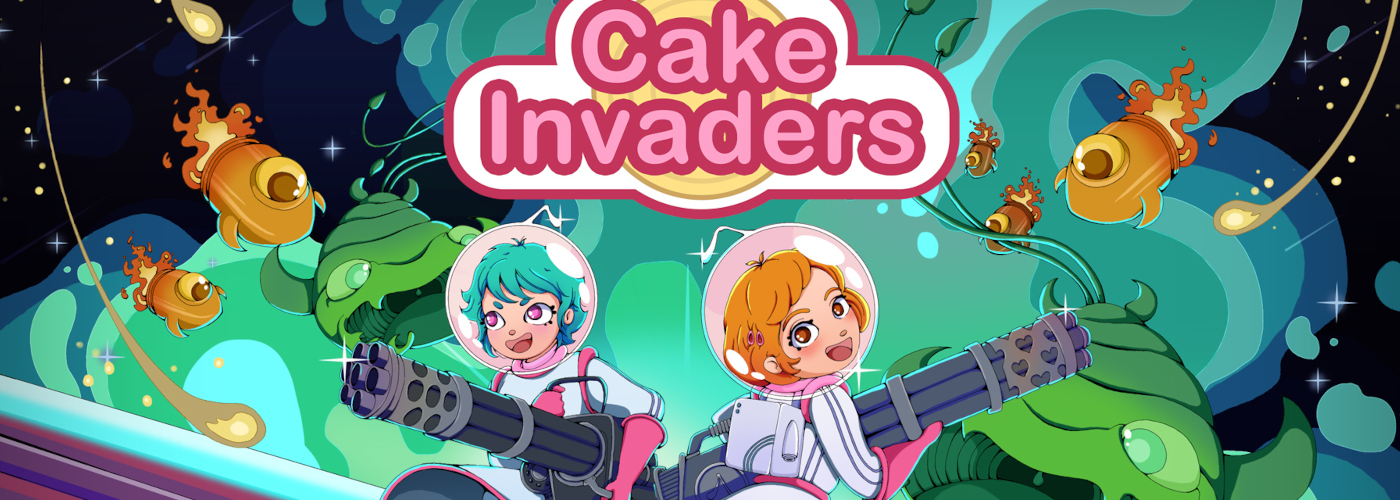
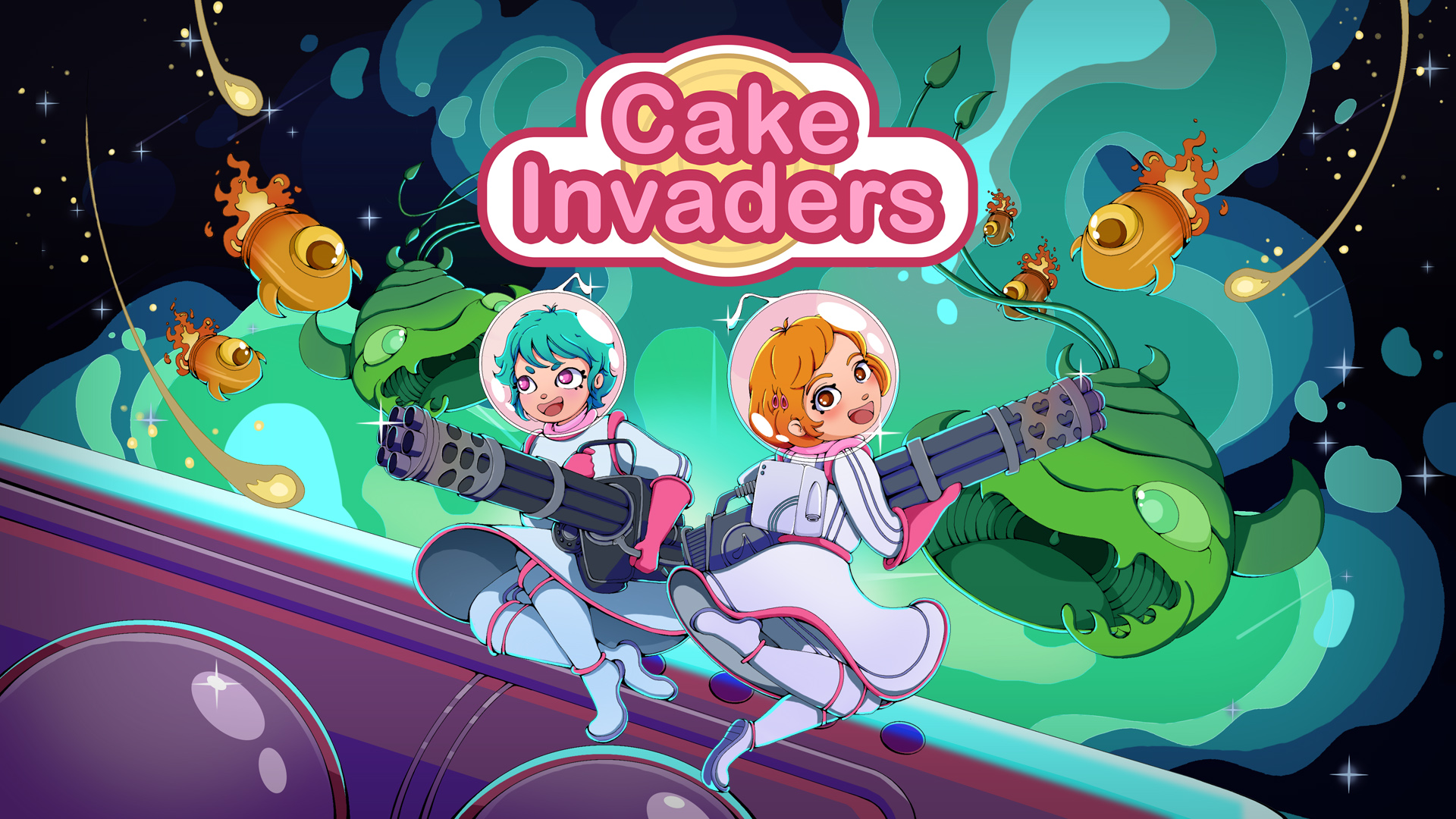
When I go to the movies, I’m not always going for an arthouse classic that’s been nominated for seventeen academy awards including ‘Best Screenplay Written by an Eccentric Nobleman from Guncestanshire’. Sometimes all I want to see is fast cars defying gravity with muscle men shouting off about whose family is better than the others. The same can be said for video games. I don’t always want to spend fifteen hours walking through a vast forest looking for a piece of treasure that will lead to a key that saves the world. Sometimes I want to hold down a button and make pixels explode into smaller pixels. Can you guess which camp Cake Invaders is going to fall into?
At A Glance
| Scores | |
| Visuals | 6/10 |
| Sound | 4/10 |
| Gameplay | 5/10 |
| Overall | 5/10 |
| Positives | + Basic concept and well executed + Extremely fun, a true guilty pleasure + Simple controls |
| Negatives | – Extremely limited gameplay – Music is awfully repetitive – Leaderboards locked to the console type |
| Price (When Reviewed) | £4.99 |
| Our Playtime | 2 hours |
| Available On | PS5, Xbox Series X|S, Nintendo Switch, Xbox One, PS4 |
Cake Invaders was created by Japanese indie developers Zoo Corporation and published by eastasiasoft; it features alien forces invading a spaceship because it is carrying a lot of Baumkuchen cakes, a German delicacy that are popular in Japan. I was given one mission – to stand on the bow of the ship and shoot everything that moves with a minigun as wave after wave of creatures try to steal the tasty treats.
That’s pretty much Cake Invaders in a nutshell. There’s no big sprawling world to discover and there’s no quests to be discovered by shooting a secret part of the screen. I was one character who was rooted to the spot and all I had to do was aim a minigun and fire at wave after wave of enemies until I either got bored or the baddies pinched all of my cake. If you think of Space Invaders, but instead of the tank zipping from left to right, you were the central defence that everyone always shot through, then you have a pretty good idea of how this game plays, and despite how limited this seems, I absolutely loved it!
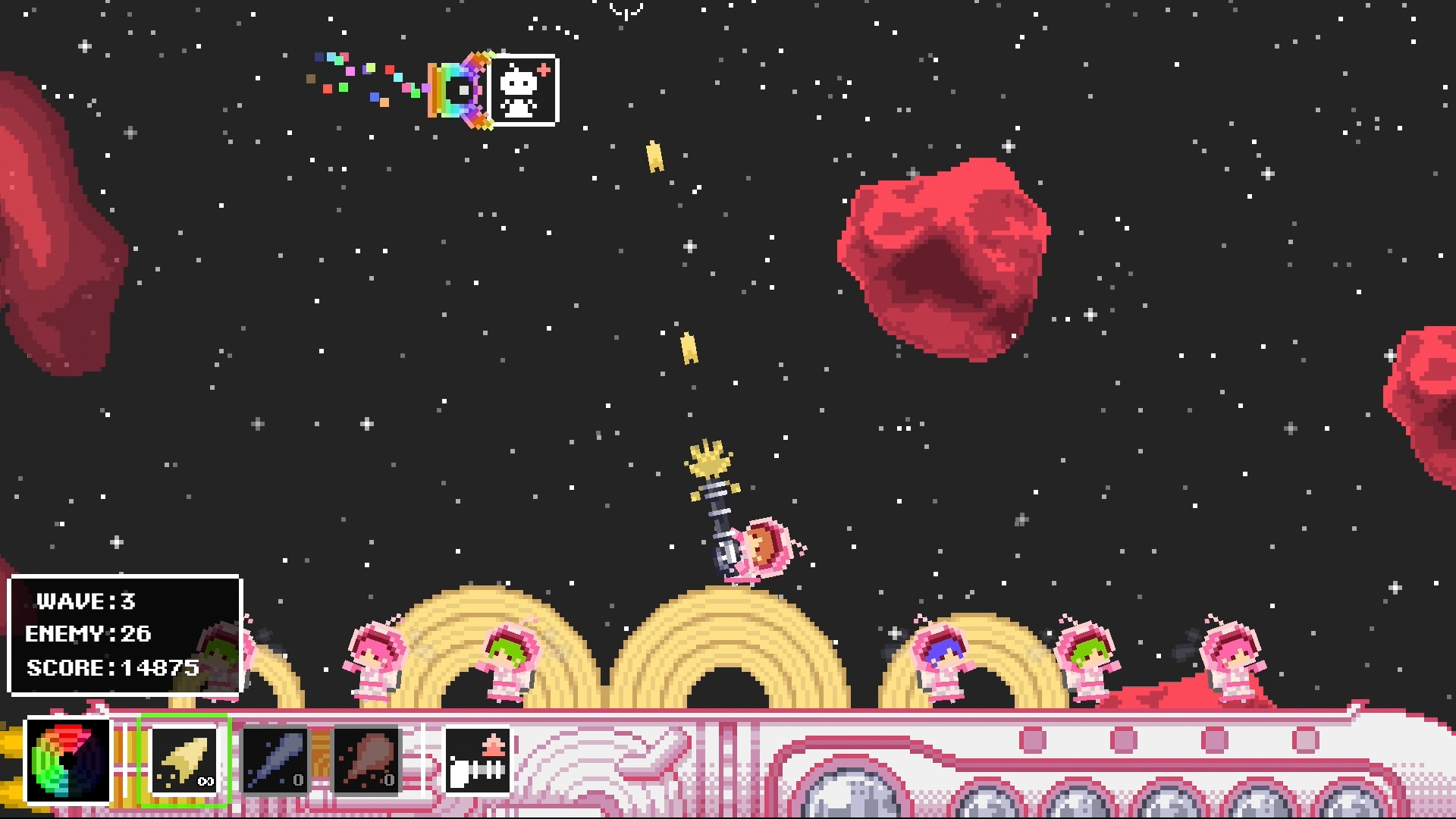
While I was blasting away at the enemies, there was a tiny rainbow circle filling up on the bottom left of the screen and when the icon was complete, a random powerup shot into the sky. These ranged from more powerful weapons, albeit with limited ammunition, to a faster rate of fire. Because the rate of fire was so high to begin with, these more powerful lasers and exploding rounds didn’t last long and were rather useless; a time limit on the bonuses rather than an ammo limit would have made the action even more hectic, and in keeping with the standard gun having infinite ammo.
The best power-up comes in the form of an extra teammate. Much like your woman standing in the middle of the ship, they are also stuck to one of four predetermined spots on the ship. As I moved the control stick to aim, the rounds all converged on one point on the screen. When there are two characters firing at the same time the alien cake snatchers get shot down quickly, but unlocking all four additional crew means there is no hope for anyone, as bullets spray the screen like a blender without a lid on.
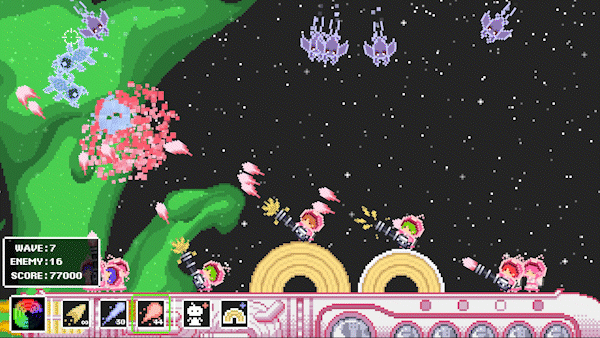
I thought such a simple concept of standing still and shooting aliens would get boring fast but Cake Invaders is surprisingly engaging and the run time is as long or as little as you make it. There might only be one infinite round, but the controls are snappy and responsive and when I got stuck into a flow, the waves seemed to wash by. Once the wave was complete and my score had been totted up it was onto the next one, where I’d check the stat box on the left of the screen to see how many enemies were trying to sneak my cake, like Nigella Lawson looking for treats at three in the morning, and then just blast away. And every five rounds was met with a special “Here comes the Gold Guys” stage, in which hundreds of yellow, fish-like aliens swim from left to right in a free-for-all. In this stage I simply had to blast away, and without any real danger of them nabbing my precious food, I could power up for the next onslaught which gets tougher and tougher the longer the game goes on. When the Baumkuchen eventually crumbles it’s game over and the final score is sent to the leaderboard.
This leaderboard is the only multiplayer element to Cake Invaders, as all there is to do is beat each other’s scores, although it looks to be tied specifically to the platform you played on. The game came with both PS4 and PS5 versions and I couldn’t see my previous scores when I booted up the second version of the game. It would have been nice to have a fully fledged 2 player mode with two people manically trying to mow down everything for a high score, but in fairness, I was quite content with just protecting my dessert.
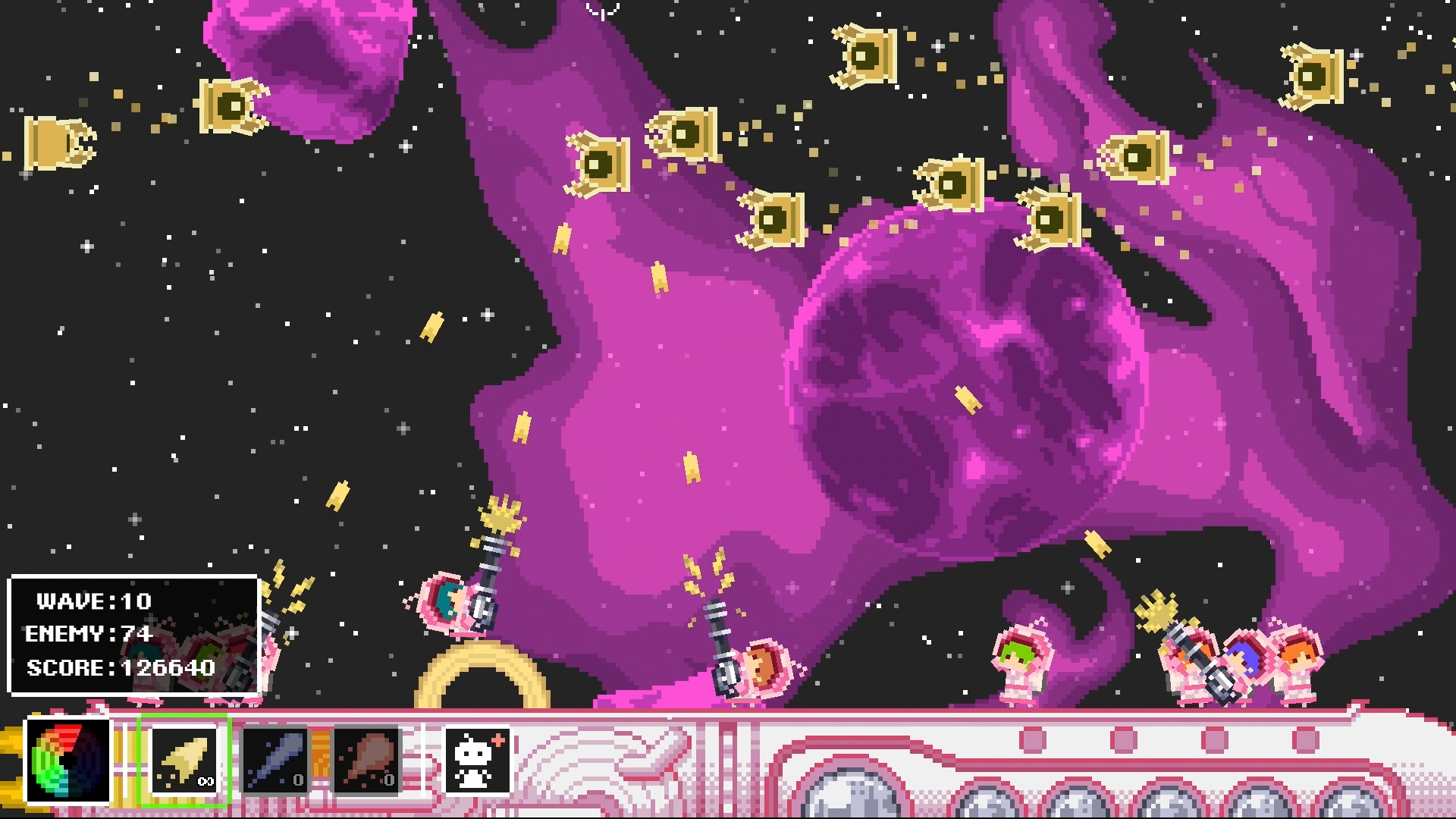
Stylistically, Cake Invaders is a 2D 16-Bit-inspired game with cute chibi characters running along the bottom of the screen, and distinctive enemies that crash down from all directions to grab a piece of that sweet dessert. Each enemy is rather well designed, taking inspiration from various fish, bugs and arachnids and with a fixed stare on those sweet, sweet treats. The music is equally retro-inspired, with a chip-tune aesthetic that part of me really enjoyed but as the waves of enemies rolled on, I grew to hate. Overall in the style department Cake Invaders isn’t going to win The Great British Bake Off with its rough around the edges look and runny musical icing, but when the filling tastes this nice, this homemade affair is something even Paul Hollywood couldn’t resist giving a handshake to.
Cake Invaders was a rather fun time, and in the couple of hours I’ve put into it so far, blasting wave after wave of enemies didn’t get as stale as I thought it would. The graphics are cute, the music is just repetitive enough to be annoying, yet forgettable, and the price point is absolutely spot on for the amount of game you are getting. Yes, a multiplayer mode would have been nice, but the charm, accessibility, and simplicity of Cake Invaders meant I just wanted to try to beat my own score. The fact that Cake Invaders boils down to moving the analogue stick slightly while holding a button to fire does limit how high I can score the game, but I will say if you’re looking for dumb fun where all you want to do is blast some aliens then I’d highly recommend Cake Invaders; heck, right after I’ve finished this sentence I’m going to find a Baumkuchen cake and go back for seconds.
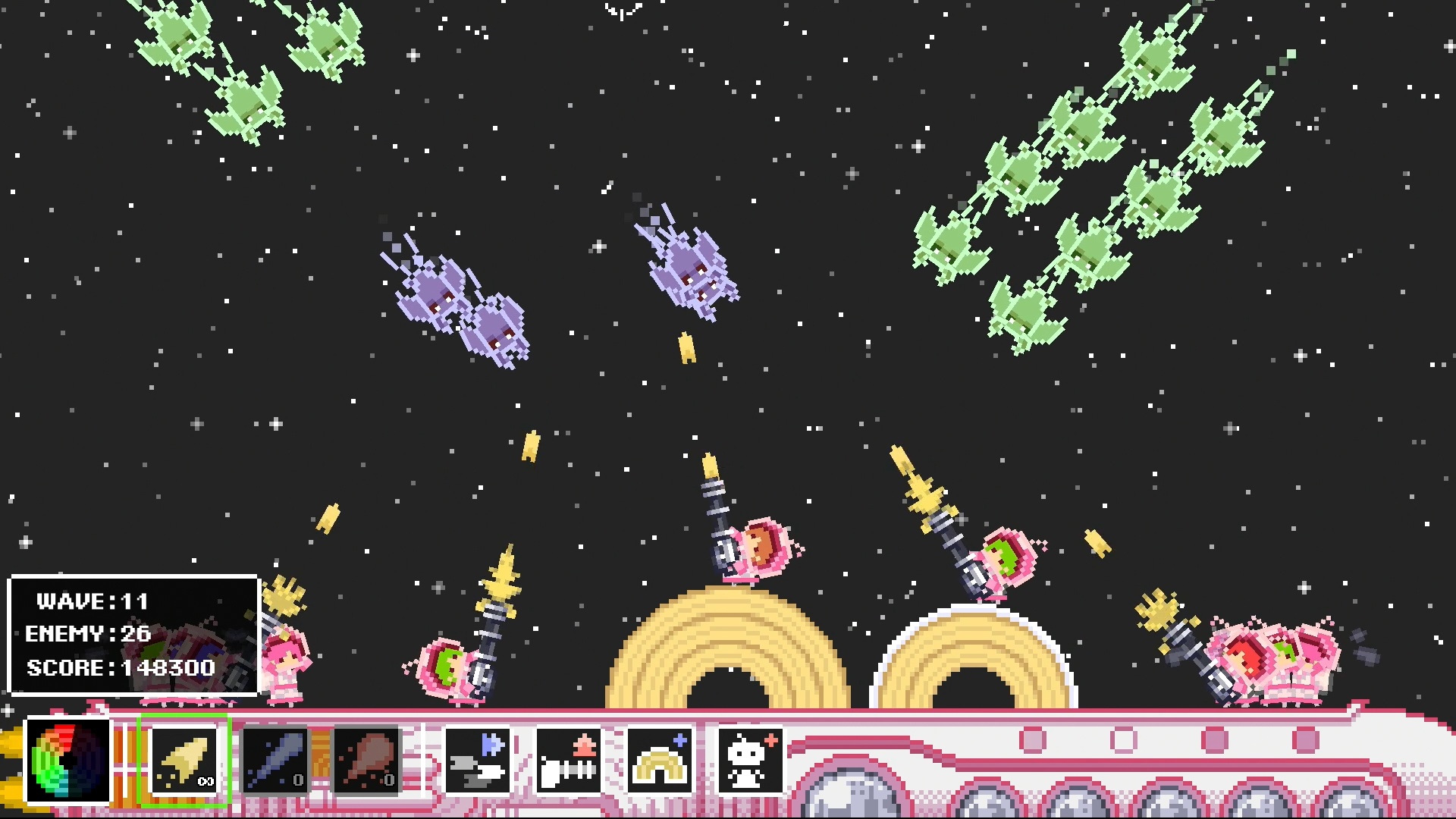
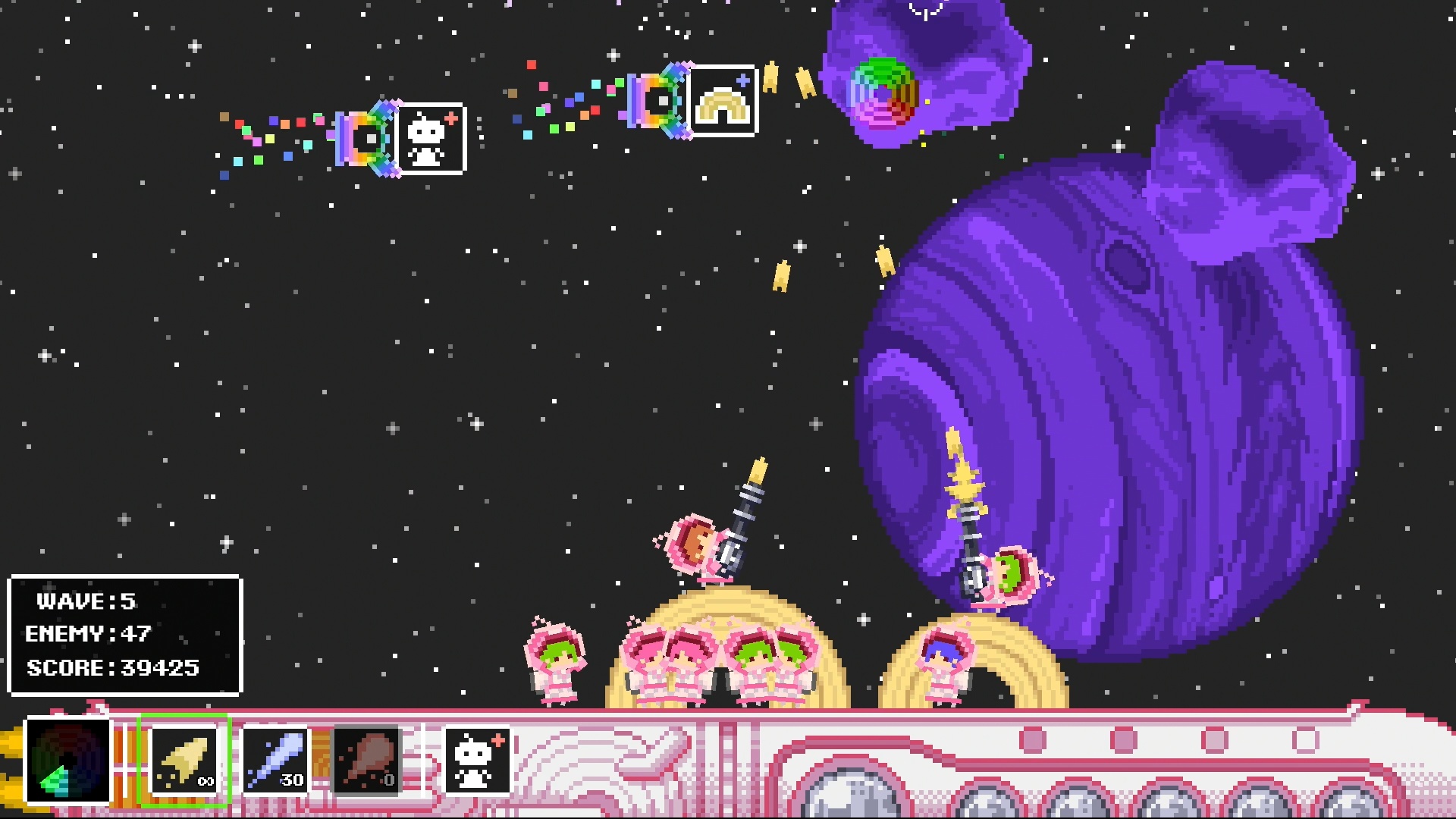
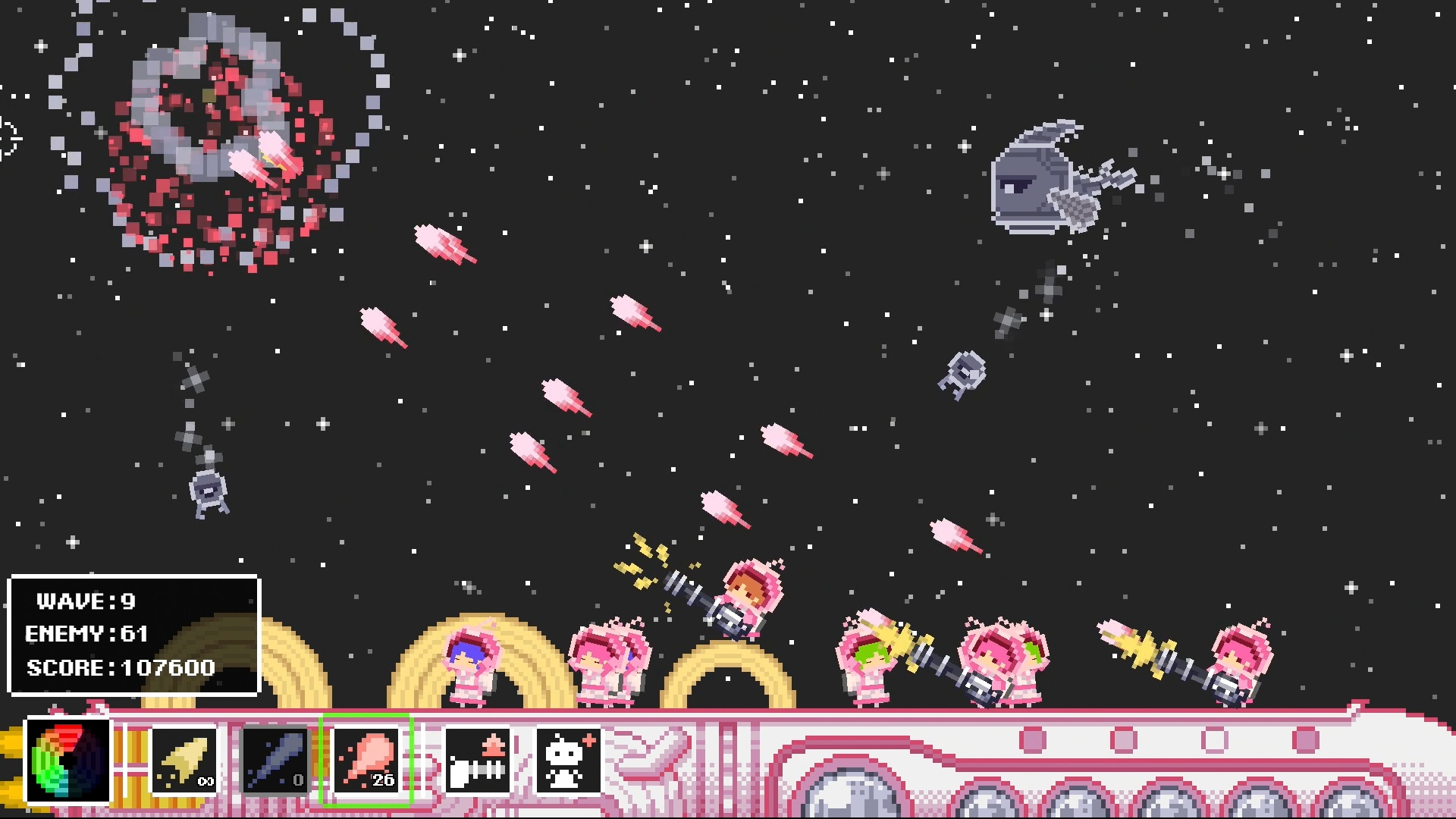
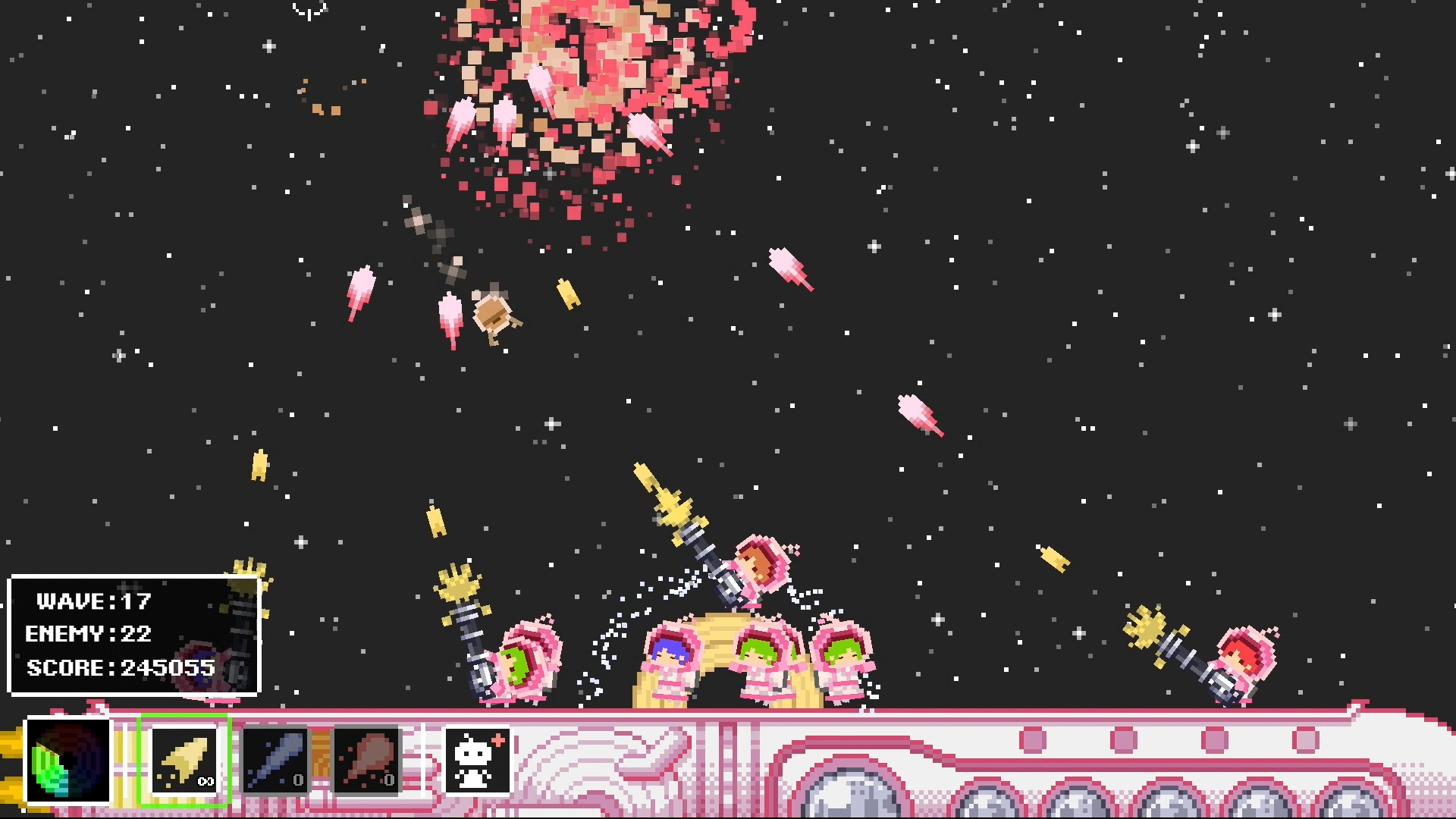
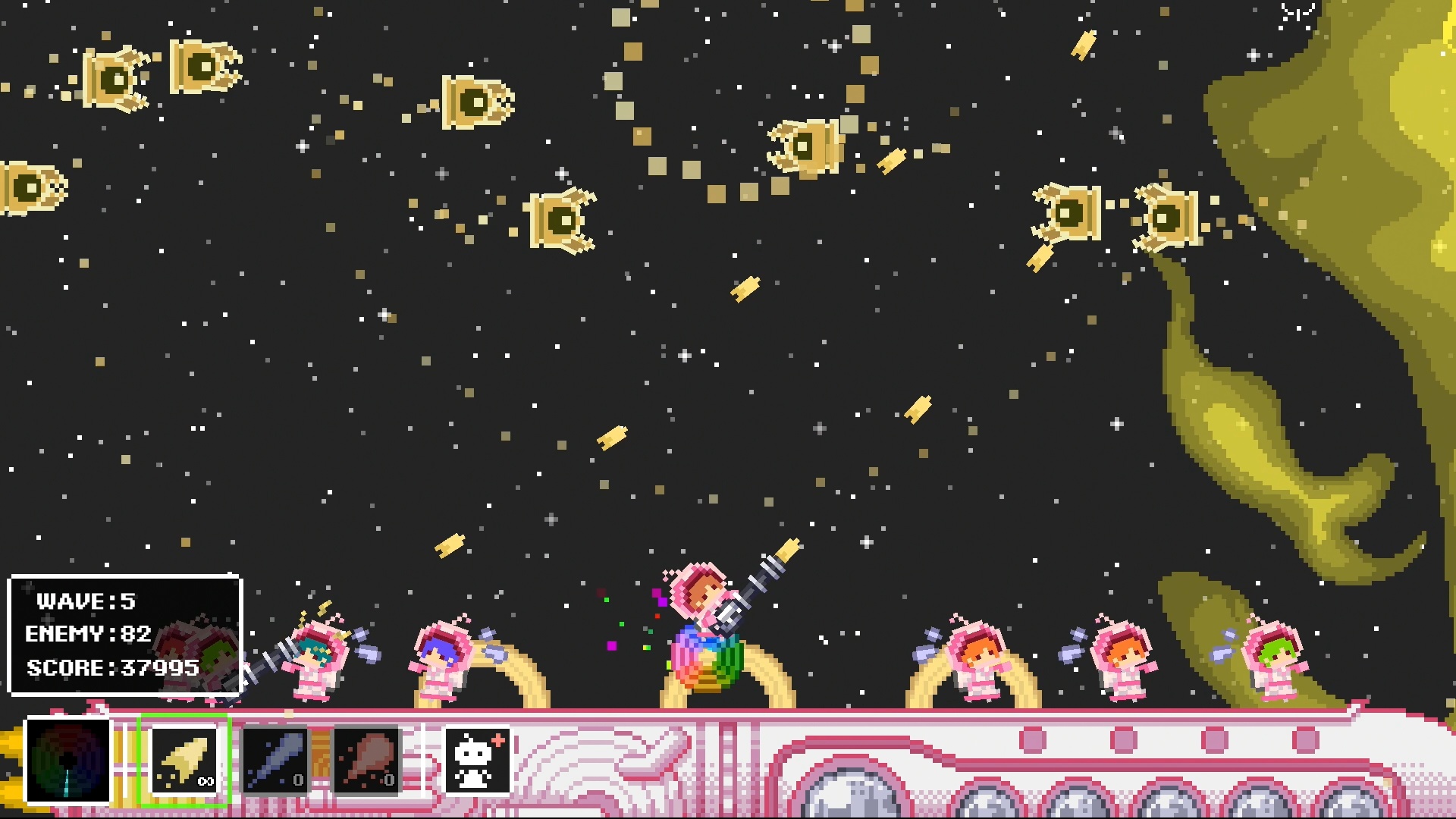
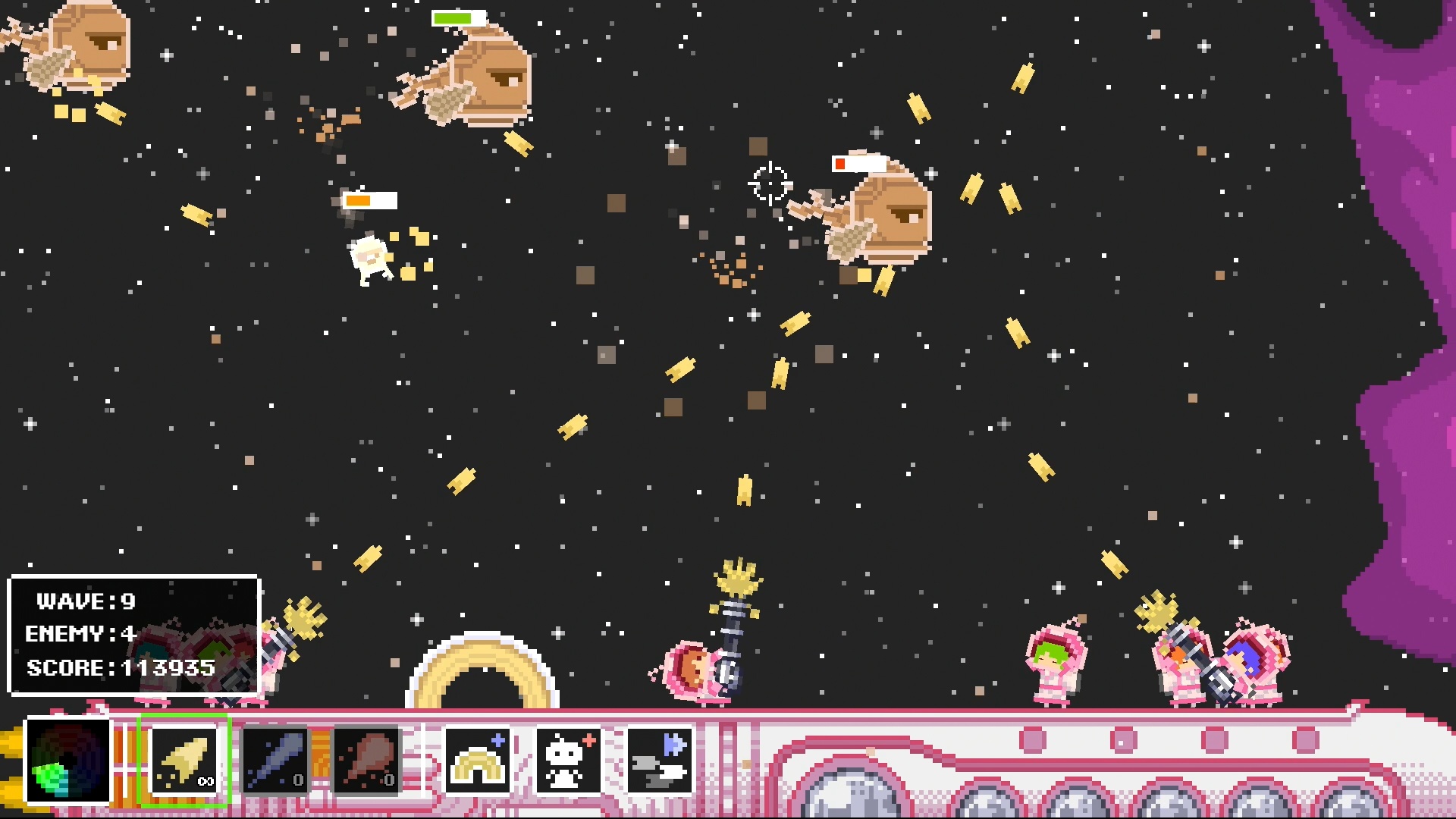
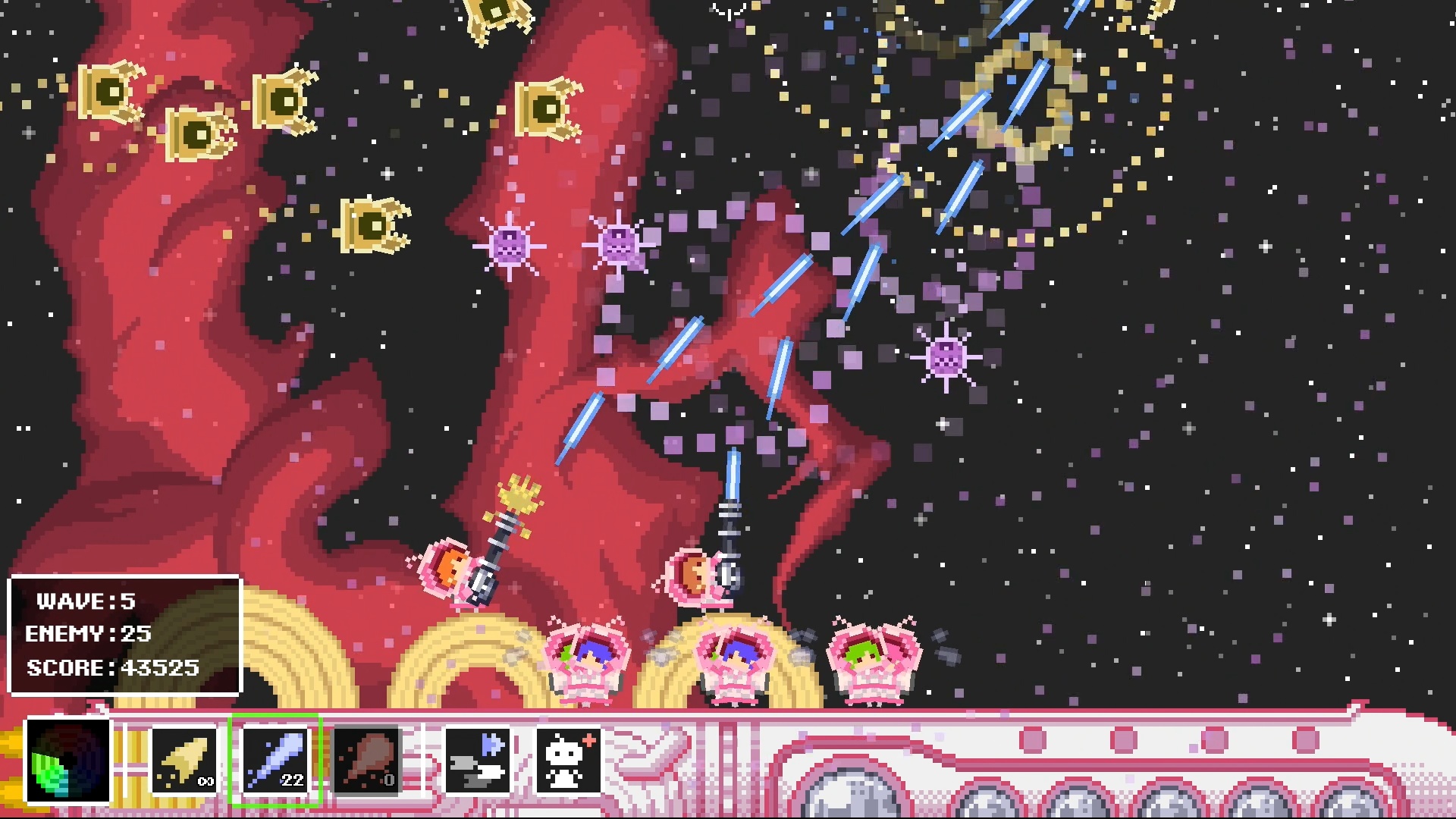

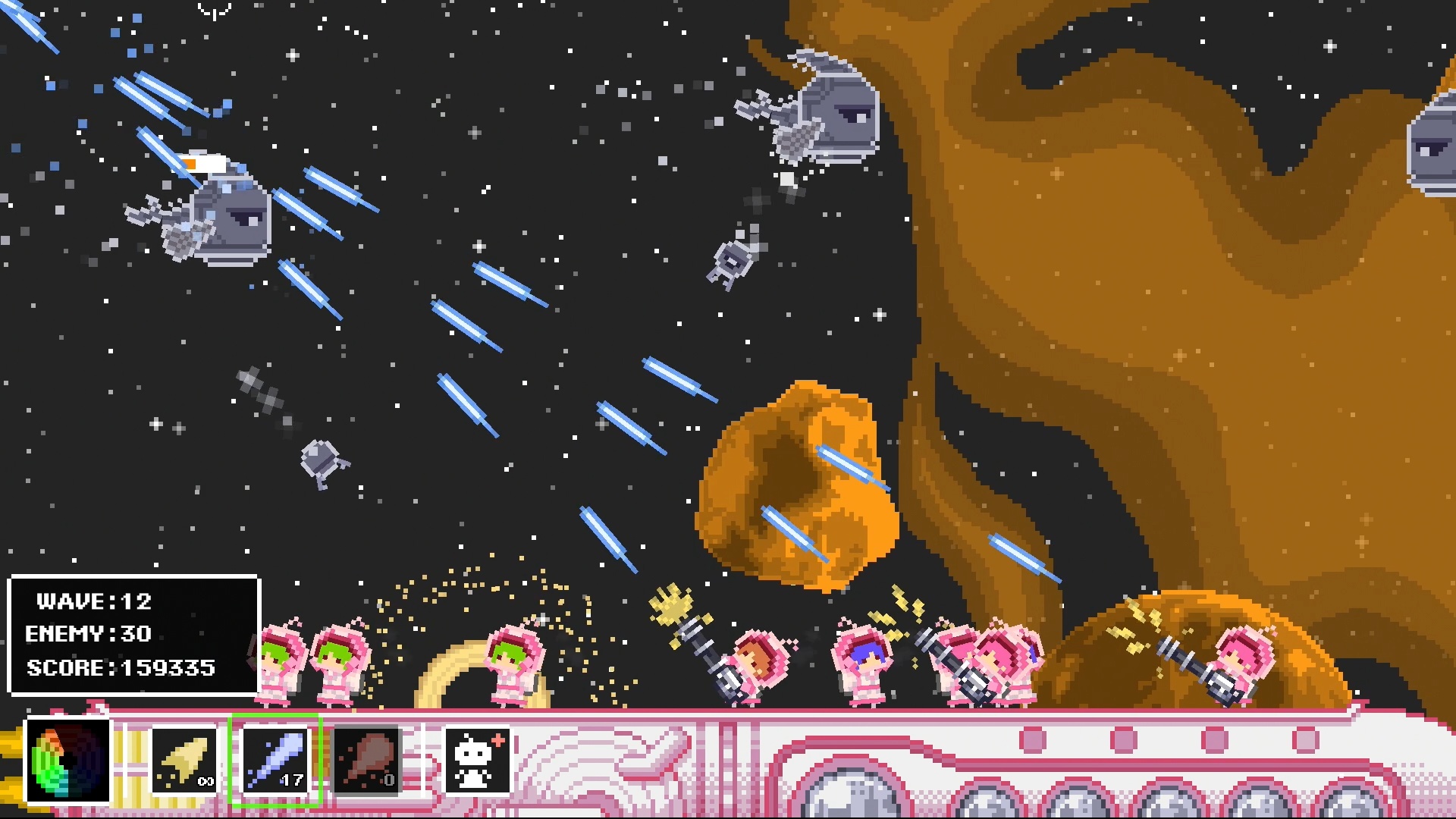

In the interest of full disclosure, the publisher provided VGamingNews with a copy of the game in order to conduct this review.






